- Green Spaces in Urban Places
- To Give is To Grow: Community Gardens Fight Food Insecurity
- Are Words The New Weapon To Fight For Social Justice?
- Europe has Changed: How I turned my Upset about Russia Invading Ukraine into Action
- Dangerous Realities of Medical Misogyny
- Student Success: Spotlight on ADHD

Love Letter to Uncertainty: A Photo Essay
Walter’s story: leaving nazi germany.

Joseph Campbell & The Hero’s Journey
In 1949, scholar joseph campbell published his 1st book, the hero with a thousand faces. in this book, campbell introduced us to his theory that myths from around the globe share a fundamental structure, the monomyth ..
C ampbell formulated this theory over 5 years, spending 9 hours a day reading mythology from around the world. The Monomyth structure is divided into 3 events with additional stages in between. The stories of Osiris, Prometheus, Buddha, Moses, Jesus, and many other tales from history use this structure. It has inspired many artists and storytellers, such as, Jim Morrison of The Doors, Bob Dylan, creator of Star Wars George Lucas, Bob Weir, and Jerry Garcia of the band, The Grateful Dead. While countless stories follow this Monomyth structure, we will use the original Star Wars Trilogy as an example for exploring this process.
The Seventeen Stages of the Monomyth
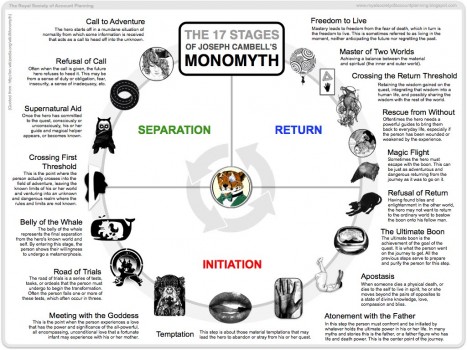
The Cycle of Mythology
Stage 1: Separation
I n the first stage of the hero’s journey, we find our protangonist living life in a typically mundane situation. The Star Wars , Luke Skywalker lives as a talented yet lowly and pretty damn whiny moisture farmer on Tatooine.
Until…
1. Call to Adventure – By some chance the hero will become aware of information or actions that call for them to go on a quest. The lovable and recently acquired droid R2-D2 plays a holographic message of Princess Leia pleading for Luke’s soon to be mentor, Obi-Wan Kenobi’s assistance.
2. Refusal of the Call – Overwhelmed by the information, the hero refuses the call and makes excuses as to why they cannot answer it. Luke refuses Obi-Wan’s request to join him on his mission, stating that he has responsibilities at home.
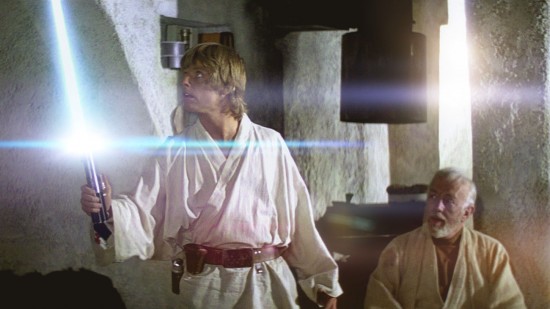
Luke’s Supernatural Aid is in the form of a Lightsaber and newfound Knowledge of the Force
3. Supernatural Aid – Once a commitment to the quest is made by the hero, they are provided with a special weapon or power that will assist them along the way. Obi-Wan gifts Luke his fathers lightsaber and explains some Force 101.
4. Crossing the Threshold – The moment when the hero actually embarks upon the journey. After Luke discovers that his family has been murdered and that nothing is left for him at home, he decides to join Obi-Wan on the quest to save Princess Leia, cause that sounds way cooler than hanging at the farm where your entire family was just massacred.
5. Belly of the Whale – The final separation between the hero and their home. Luke and Kenobi bail out from Tatooine with their new bros Han Solo and Chewbacca.
Stage 2: Initiation
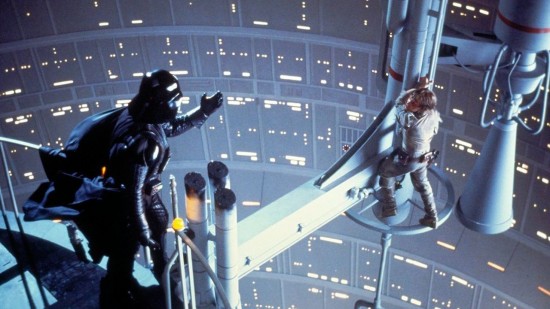
The Empire Strikes Back is nothing but a road of trials for our hero, Luke.
6. The Road of Trials – A series of usually 3 trials and tests, the hero often fails one or more of these test. In Luke’s journey the destruction of the Death Star is his first test and one that he passes. His second and third tests do not end so well. While training with Yoda on Dagobah, Luke fails in his truly mastering himself and the force. Thirdly, in the duel between himself and his newly revealed father, Darth Vader, he is defeated, injured, and almost killed.
7. The Meeting with the Goddess – Our hero experiences a love that has the power and significance to that of a mother. Luke begins to have strong feelings for Leia, his unbeknownst sister.
8. Woman as Temptress – The temptation to abandon the journey for material or other gain. Luke is close to being seduced to the dark side as the Emperor feeds his rage against his father and especially with the prospect that if he will not turn, perhaps his sister will.
9. Atonement with the Father – In this stage, the hero must confront and be initiated by whoever holds the ultimate power in their life. Luke battles Darth Vader and once again is on the losing side of the fight. Nearing death from the Emperor’s attacks, Luke begs his father to help save him from certain death.
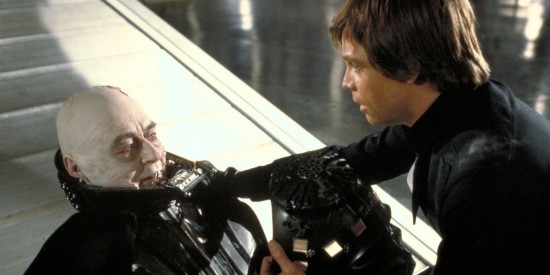
Anakin & Luke Meet for the 1st Time
10. Apotheosis – The spiritual death and rebirth of the hero. Darth Vader hears his son’s cries for help and returns to the light, deciding to destroy the Emperor in a self sacrificial action. By bringing his father back to the light, Luke has finally become a true jedi.
11. The Ultimate Boon – The stage of achievement of the goal. Luke is a jedi, has defeated the Empire, the dark side, saved his father, and all his friends and family are safe.
12. Refusal of the Return – The hero basking in their newly found bliss, may not want to return to their previous life and share this bliss with his fellow man. Luke does the opposite of this, upon his reunification with his friends, he shares with Leia that they are siblings. He then goes on to train her and new jedi in the ways of the force.
Stage 3: Return
13. The Magic Flight – The daring escape made after obtaining the boon. Luke carries his fathers body onto a transport and flees the Death Star before its complete destruction.
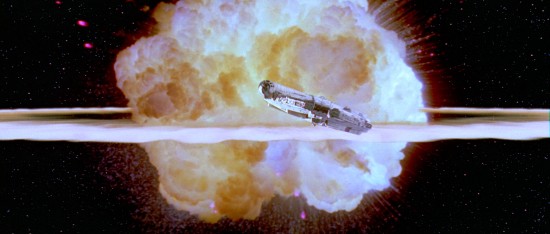
The Millennium Falcon in Magical Flight
14. Rescue from Without – When powerful guides or mentors help bring the hero back to normal life. When Anniken, Obi-Wan, and Yoda appear from the ether to acknowledge Luke and his newfound jedi knighthood.
15. Crossing the Return Threshold – Retaining, integrating, and sharing wisdom learned on the quest. Luke shares his knowledge of the force with future jedi.
16. Master of Two Worlds – The hero has achieved a balance between the material and spiritual world. Luke has sorted all of his family issues, become a man and a jedi.
17. Freedom to Live – By becoming a master of the two worlds, the hero is free from regrets of the past and worries of the future, this leaves them to live in the moment. Luke has resolved all the conflicts in his life, he is free to live at one with the force.
Each of Us are the Heroes in Our own Journey
The Monomyth is a method of story telling that is innate to humans. Cultures from around the world share it’s structure in their stories. Every human, whether they are aware of it or not, is on their own hero’s journey. By studying Joseph Campbell’s work we can better our own understanding of the tests, trials, and progress along our journey.
About Author
Tamlorn Chase
Tamlorn Chase hails from the coastal town of Santa Barbara, where he works as a wilderness guide, wildlife filmmaker, and environmental activist. Protecting the natural world is his profession and passion.
Related Posts

Father Figures
Comments are closed.
Powered by themekiller.com

A Practical Guide to Joseph Campbell and the Hero’s Journey
OVERVIEW: What are the hero’s journey steps? That is, what’s the psychological process we go through that can lead to inner transformation? This guide answers these questions.
______________
Treasure, love, reward, approval, honor, status, freedom, and survival … these are some of the many things associated with the hero’s journey.
However, we don’t find the meaning of the hero’s journey in slaying the dragon or saving the princess.
These are but colorful metaphors and symbols for a more significant purpose.
Battling inner and outer demons, confronting bullies, and courting your ideal mate symbolize a passage through the often treacherous path of self-discovery toward adulthood.
If you complete one of these “adventures,” you’re different. Sometimes visually, but always internally.
Here, we’ll explore the meaning of the hero’s journey steps and see how it applies to psychological development and our ability to actualize our potential.
Let’s dive in …
What is the Hero’s Journey?
The hero’s journey refers to a common motif, or set of patterns, found in many ancient mythologies around the world.
The hero’s journey steps are said to be universal and found throughout recorded history.
The popularization of the hero’s journey is attributed to the late mythologist Joseph Campbell.
These stages lead an individual (the would-be hero) through a challenging process of change that often includes great hardships.
This well-known story structure is used in many modern films and storytelling. However, the true meaning of the hero’s journey motif is psychological in origin.
What is the Monomyth?
Joseph Campbell was a curious mythologist. In the field of comparative mythology, most scholars examine how one culture’s myths are different than another.
Instead of focusing on the many differences between cultural myths and religious stories, however, Campbell did the opposite: He looked for the similarities.
His studies resulted in what’s called the monomyth . The monomyth is a universal story structure.
Essentially, it’s a story template that takes a character through a sequence of stages. Campbell began identifying the patterns of this monomyth (the hero’s journey steps).
Over and over again, he was amazed to find this structure in the cultures he studied. He also observed the same sequence in many religions including the stories of Gautama Buddha, Moses, and Jesus Christ.
Campbell outlined the stages of the monomyth in his classic book The Hero with a Thousand Faces (1949).
What is the Hero?
The main character in the monomyth is the hero .
The hero isn’t a person, but an archetype —a set of universal images combined with specific patterns of behavior.
Think of a protagonist from your favorite film. He or she represents the hero.
The storyline of the film enacts the hero’s journey.
The Hero archetype resides in the psyche of every individual, which is one of the primary reasons we love hearing and watching stories.
What is a Myth?
We might ask, why explore the hero’s journey steps?
Sure, Hollywood uses it as their dominant story structure for its films (more on that later). But what relevance does it have for us as individuals?
Today, when we speak of “myth,” we refer to something that’s commonly believed, but untrue.
Myth, for minds like Campbell and Carl Jung however, had a much deeper meaning. Myths, for them, represent dreams of the collective psyche .
That is, in understanding the symbolic meaning of a myth, you come to know the psychological undercurrent—including hidden motivations , tensions, and desires—of the people and culture.
What is the Power of Myth?
Campbell explains to Bill Moyer in The Power of Myth : 1 Joseph Campbell, The Power of Myth , 1991, 193.
Mythology is not a lie, mythology is poetry, it is metaphorical. It has been well said that mythology is the penultimate truth–penultimate because the ultimate cannot be put into words. It is beyond words. Beyond images, beyond that bounding rim of the Buddhist Wheel of Becoming. Mythology pitches the mind beyond that rim, to what can be known but not told.
As Campbell eloquently puts it in The Hero with a Thousand Faces ,
Mythology is psychology misread as biography, history, and cosmology.
Because the hero’s journey steps represent a monomyth that we can observe in most, if not all, cultures, it represents a process that is relevant to the entire human family .
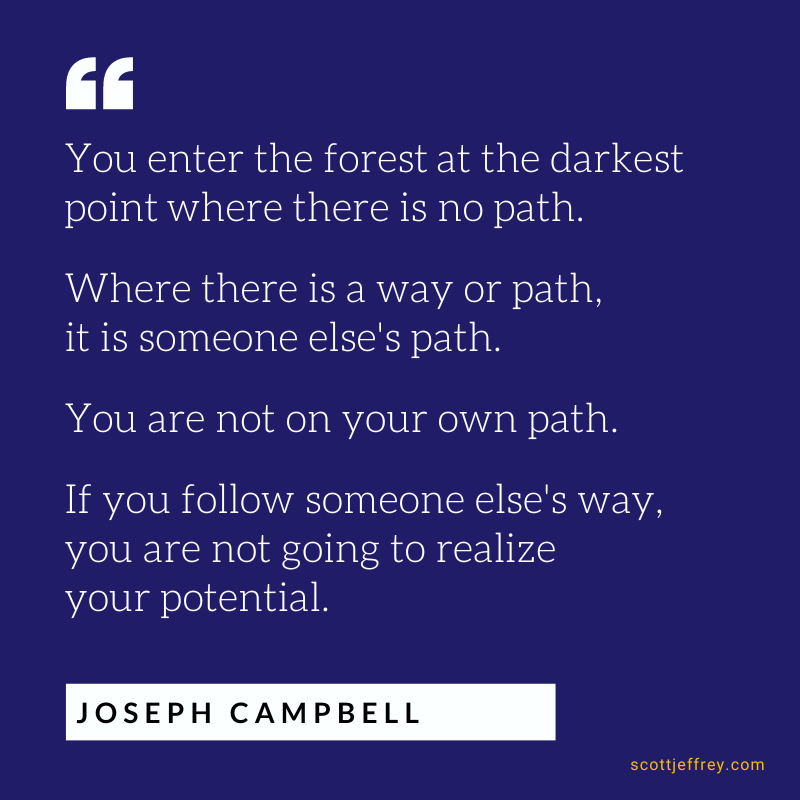
What is this Process Within the Hero’s Journey?
It’s the process of personal transformation from an innocent child into a mature adult.
The child is born into a set of rules and beliefs of a group of people.
Through the child’s heroic efforts, he must break free from these conventions (transcend them) to discover himself.
In the process, the individual returns to his soul.
If we think of the hero’s journey as a roadmap for self-development, it can hold a lot of value for us.
A Quick Note About Gender: Masculine vs Feminine
This psychological decoding is based on a “Jungian” understanding of the psyche.
The hero is ultimately a masculine archetype. The female counterpart would be the heroine. While the hero and the heroine certainly share many attributes, they are not the same.
Similarly, the hero’s journey is predominantly a process of development for the masculine psyche. The hero archetype is associated with autonomy, building structure, and learning about limitations, which are qualities associated with masculine energy.
However, note that “masculine” and “feminine” are not the same as “man” and “woman.” The psyche of a man has a feminine counterpart—what Jung called the anima . The psyche of a woman has a masculine archetype called the animus . For this reason, the hero’s journey does have universal relevance.
While Western culture seems riddled with gender confusion, there are distinct differences between the masculine and the feminine psyche.
Okay, now back to our story …
The 3 Main Stages of the Hero’s Journey
Okay, so now let’s begin to break down the structure and sequence of the hero’s journey.
As Campbell explains:
The usual hero adventure begins with someone from whom something has been taken, or who feels there is something lacking in the normal experience available or permitted to the members of society. The person then takes off on a series of adventures beyond the ordinary, either to recover what has been lost or to discover some life-giving elixir. It’s usually a cycle, a coming and a returning.
This cycle of coming and returning has 3 clear stages:
Stage 1: Departure
Campbell called the initial stage departure or the call to adventure . The hero departs from the world he knows.
Luke Skywalker leaves his home planet to join Obi-Wan to save the princess. Neo gets unplugged from The Matrix with the help of Morpheus and his crew.
In the Departure stage, you leave the safety of the world you know and enter the unknown.
Campbell writes of this stage in The Hero with a Thousand Faces :
This first step of the mythological journey—which we have designated the “call to adventure”—signifies that destiny has summoned the hero and transferred his spiritual center of gravity from within the pale of his society to a zone unknown.
That is, the hero must leave the known “conventional world” and enter a “special world” that is foreign.
Stage 2: Initiation
Now the hero must face a series of trials and tribulations. The hero’s journey isn’t safe.
The hero is tested in battle, skill, and conflict. He may not succeed in each action but must press on.
The protagonist will meet allies, enemies, and mentors with supernatural aid throughout the initiation stage.
Stage 3: Return
Having endured the trials and hardships of the adventure, the hero returns home.
But the hero is no longer the same. An internal transformation has taken place through the maturation process of the experience.
Luke is now a Jedi and has come to peace with his past. Neo embraces his destiny and liberates himself from the conventions of The Matrix.
The Hero’s Journey in Drama
In Three Uses of a Knife , famed playwright David Mamet suggests a similar three-act structure for plays and dramas: 2 David Mamet, Three Uses of the Knife: On the Nature and Purpose of Drama , 2000.
Act 1: Thesis . The drama presents life as it is for the protagonist. The ordinary world.
Act 2: Antithesis . The protagonist faces opposing forces that send him into an upheaval (disharmony).
Act 3: Synthesis . The protagonist attempts to integrate the old life with the new one.
We note that problems, challenges, and upheavals are the defining characteristic of this journey.
Without problems, the path toward growth is usually left behind. (More on this topic below.)
Assessing Your Place in the Hero’s Journey
Before we explore the stages of the monomyth more closely, let’s look at what these three phases reveal about self-mastery and psychological development.
Stage 1 represents our comfort zone. We feel safe here because it is known to us.
Stages 2 and 3, however, represent the unknown . Embracing the unknown means letting go of safety.
Abraham Maslow points out that we are confronted with an ongoing series of choices throughout life between safety and growth, dependence and independence, regression and progression, immaturity and maturity.
Maslow writes in Toward a Psychology of Being : 3 Abraham Maslow, Toward a Psychology of Being , 2014.
We grow forward when the delights of growth and anxieties of safety are greater than the anxieties of growth and the delights of safety.
Is it now clear why so many of us refuse the call to adventure?
We cling to the safety of the known instead of embracing the “delight of growth” that only comes from the unknown.

Campbell’s 17 Stages of the Hero’s Journey
Joseph Campbell didn’t just outline three stages of the monomyth. In The Hero with a Thousand Faces , he deconstructs every step along the journey.
The stages of the hero’s journey are the common sequence of events that occurred in the monomyth motif.
Technically speaking, Campbell outlined 17 stages in his The Hero with a Thousand Faces:
- 1: The Call to Adventure
- 2: Refusal of the Call
- 3: Supernatural Aid
- 4: The Crossing of the First Threshold
- 5: Belly of the Whale
- 6: The Road of Trials
- 7: The Meeting with the Goddess
- 8: Woman as the Temptress
- 9: Atonement with the Father
- 10: Apotheosis
- 11: The Ultimate Boon
- 12: Refusal of the Return
- 13: The Magic Flight
- 14: Rescue from Without
- 15: The Crossing of the Return Threshold
- 16: Master of the Two Worlds
- 17: Freedom to Live
These 17 stages or hero’s journey steps can be found globally in the myths and legends throughout recorded history.
The Modified 12 Hero’s Journey Steps
Now, let’s review these stages of the hero’s journey in more detail.
I’m going to outline these steps below using a slightly simplified version from Christopher Vogler’s The Writer’s Journey: Mythic Structure for Writers .
Vogler’s model, which is used throughout Hollywood, only has 12 steps (compared to 17), and I think it does a solid job of keeping the essence of Campbell’s monomyth structure intact.
As you read these hero’s journey steps, see if you can determine how they apply to your development.
Step 1: The Ordinary World
Before a would-be hero can enter the special world, he must first live in the ordinary world.
The ordinary world is different for each of us—it represents our norms, customs, conditioned beliefs, and behaviors. The ordinary world is sometimes referred to as the “conventional world.”
In The Hobbit , the ordinary world is the Shire where Bilbo Baggins lives with all the other Hobbits—gardening, eating and celebrating—living a simple life.
Novelist J.R.R. Tolkien contrasts this life in the Shire with the special world of wizards, warriors, men, elves, dwarfs, and evil forces on the brink of world war.
Step 2: The Call to Adventure
The first hero’s journey step is the call to adventure.
The call to adventure marks a transition from the ordinary world to the special world. The hero is introduced to his quest of great consequence.
Obi-Wan said to Luke, “You must come with me to Alderaan.” That is, Luke is invited to leave the ordinary world of his aunt and uncle’s farm life and go on an adventure with a Jedi knight.
Joseph Campbell explains: 4 Joseph Campbell, The Hero’s Journey: Joseph Campbell On His Life And Work , 1990.
The call to adventure signifies that destiny has summoned the hero and transferred his spiritual center of gravity from within the pale of this society to a zone unknown.
Step 3: Refusal of the Call
Fear of change as well as death, however, often leads the hero to refuse the call to adventure .
The ordinary world represents our comfort zone; the special world signifies the unknown.
Luke Skywalker immediately responds to Obi-Wan, “I can’t go with you,” citing his chores and responsibilities at home.
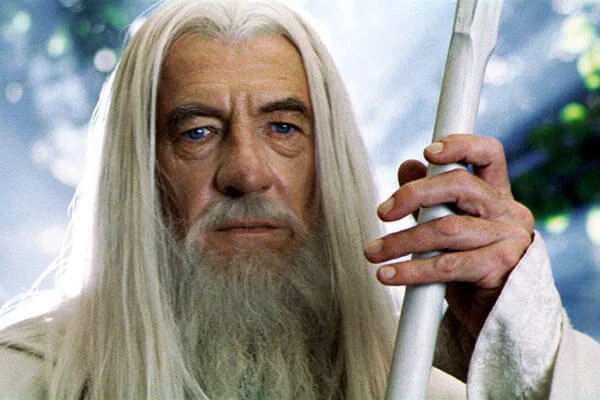
Step 4: Meeting the Mentor
Campbell called this archetype the “mentor with supernatural aid.”
Generally, at an early stage of the adventure, the hero is graced by the presence of a wise sage . Personified in stories as a magical counselor , a reclusive hermit, or a wise leader, the mentor’s role is to help guide the hero.
Think Obi-Wan, Yoda, Gandalf, Morpheus, or Dumbledore. Sometimes cloaked in mystery and secret language, a mentor manifests when the hero is ready.
Sadly, our modern world is depleted of wise elders or shamans who can effectively bless the younger generation. (A topic for a different day.) For most of us, it is best to seek wise counsel from your inner guide , the Self within.
Step 5: Cross the First Threshold
The hero resists change initially but is ultimately forced to make a critical decision: embark on the adventure or forever remain in the ordinary world with its illusion of security.
Although Luke refuses the call to adventure initially, when he returns home to see his aunt and uncle dead, he immediately agrees to go with Obi-Wan. He crossed the first threshold.
In one sense, the first threshold is the point of no return. Once the hero shoots across the unstable suspension bridge, it bursts into flames.
There’s no turning back, at least, not how he came.
The first threshold can mark a major decision in our personal lives:
- “I’m going to travel around the globe.”
- “I’m going to transform my physical health.”
- “I am going to write a book.”
- “I’m going to master the flute.”
- “I’m going to realize my true nature.”
This first breakthrough is a feat within itself; however, it is only the first of many turning points.
Step 6: Tests, Allies, Enemies
Along the hero’s journey, the main character encounters many obstacles and allies.
Luke meets Obiwan (mentor), Han Solo, Princess Leia, and the rebel alliance while fighting many foes. Neo meets Morpheus (mentor), Trinity, and the rest of the Nebuchadnezzar crew while having to fight Agents in a strange world.
Some people may try to stop you along your quest—possibly saying you’re unreasonable or unrealistic. These “dream-stoppers” are often cleverly masked as friends and family who appear to have positive intentions but hinder your development nonetheless.
Your ability to identify obstructions on your path and align with support along your adventure is critical to your adventure.
Unfortunately, because few complete their hero’s journey to mature adulthood, most people will unconsciously attempt to sabotage yours.
Step 7: Approach to the Inmost Cave
The next significant threshold is often more treacherous than the first.
Entering the villain’s castle or the evil billionaire’s mansion, this second major decision usually puts the hero at significant physical and psychological risks.
Neo decides to go save Morpheus who’s being held in a building filled with Agents.
Within the walls of the innermost cave lies the cornerstone of the special world where the hero closes in on his objective.
For a man, the innermost cave represents the Mother Complex, a regressive part of him that seeks to return to the safety of the mother. 5 Robert Johnson, He: Understanding Masculine Psychology, 1989. When a man seeks safety and comfort—when he demands pampering—it means he’s engulfed within the innermost cave.
For a woman, the innermost cave often represents learning how to surrender to the healing power of nurturance—to heal the handless maiden. 6 Robert Johnson, The Fisher King and the Handless Maiden: Understanding the Wounded Feeling Function in Masculine and Feminine Psychology , 1995.
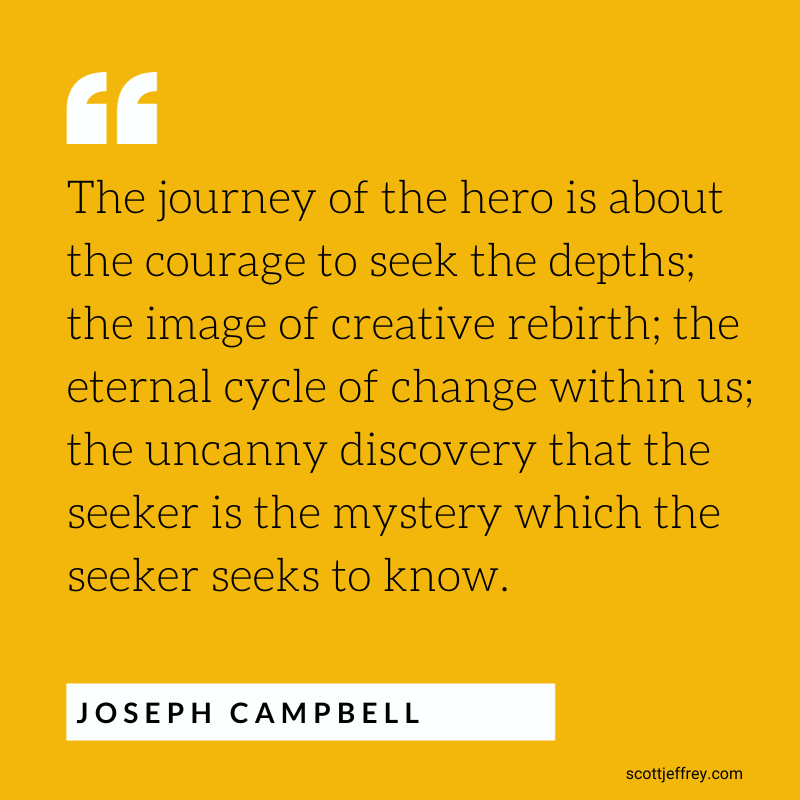
Step 8: Ordeal
No worthwhile adventure is easy. There are many perils on the path to growth, self-discovery , and self-realization.
A major obstacle confronts the hero, and the future begins to look dim: a trap, a mental imprisonment, or imminent defeat on the battlefield.
It seems like the adventure will come to a sad conclusion, as all hope appears lost. But hope remains and it is in these moments of despair when the hero must access a hidden part of himself—one more micron of energy, strength, faith, or creativity to find his way out of the belly of the beast.
Neo confronts Agent Smith in the subway station—something that was never done before. The hero must call on an inner power he doesn’t know he possesses.
Step 9: Reward
Having defeated the enemy and slain the dragon, the hero receives the prize. Pulling the metaphorical sword from the stone, the hero achieves the objective he set out to complete.
Whether the reward is monetary, physical, romantic, or spiritual, the hero transforms. Usually, the initial prize sought by the hero is physical—the sword in the stone or a physical treasure of some kind.
Step 10: The Road Back
Alas, the adventure isn’t over yet. There usually needs to be one last push to return home. Now the hero must return to the world from which he came with the sacred elixir.
Challenges still lie ahead in the form of villains, roadblocks, and inner demons. The hero must deal with whatever issues were left unresolved at this stage of the journey.
Taking moral inventory, examining the Shadow , and performing constant self-inquiry help the hero identify weaknesses and blindspots that will later play against him.
Step 11: Resurrection
Before returning home—before the adventure is over—there’s often one more unsuspected, unforeseen ordeal.
This final threshold, which may be more difficult than the prior moment of despair, provides one last test to solidify the growth of the hero. This threshold represents the final climax.
Neo is shot and killed by Agent Smith. And, he literally resurrects to confront the enemy one last time following his transformation.
The uncertain Luke Skywalker takes that “one in a million” shot from his X-Wing to destroy the Death Star.
Step 12: Return with the Elixir
Often, the prize the hero initially sought (in Step 9) becomes secondary as a result of the personal transformation he undergoes.
Perhaps the original quest was financially driven , but now the hero takes greater satisfaction in serving others in need. The real change is always internal .
In this final stage, the hero can become the master of both worlds , with the freedom to live and grow, impacting all of humanity.
Returning with the prize, the hero’s experience of reality is different. The person is no longer an innocent child or adolescent seeking excitement or adventure.
Comfortable in his own skin, he has evolved and is now capable of handling the demands and challenges of everyday life.
The Hero’s Journey in Films
Are you now more aware of how these hero’s journey steps play out in popular films and television series?
George Lucas was friends with Joseph Campbell. Lucas used these hero’s journey steps from Campbell’s The Hero with a Thousand Faces to produce the original Star Wars film. 7 https://billmoyers.com/content/mythology-of-star-wars-george-lucas/
It’s difficult to appreciate the impact Star Wars still has on American culture and around the world. It’s even more difficult to articulate how much of that impact is attributed to Campbell’s insights.
However, one challenge our culture faces is that many popular film franchises produce movies that, most often, never complete the hero’s journey.
Many popular characters in action films like Marvel and DC Comics superheroes, James Bond, Ethan Hunt (Mission Impossible), Indiana Jones, etc. never actually transform.
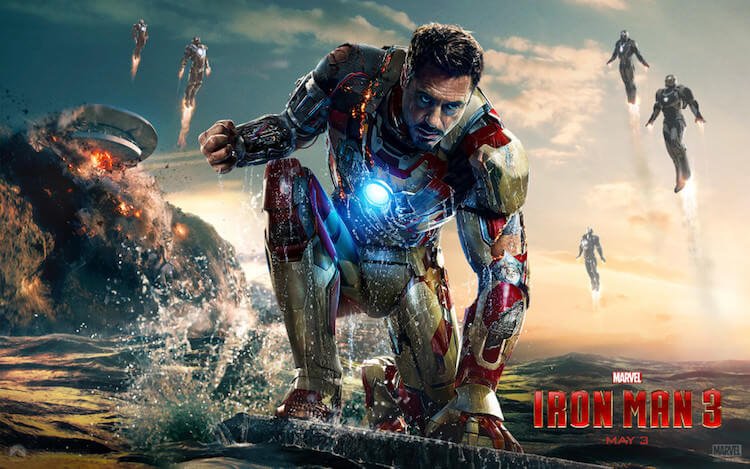
These characters stay in the adolescent stage of development (and we tend to celebrate that reality).
These heroes don’t evolve into the warm, vulnerable, generative adults who no longer seek adventure and excitement.
That said, since I originally published this guide in early 2018, this has begun to change.
For example, in the final Bond film, No Time to Die (2021), James Bond did demonstrate some generative growth.
The same goes for Tony Stark’s character (Ironman) in Avengers: Endgame (2019).
Where Are You On Your Hero’s Journey?
More importantly, do you see how these hero’s journey steps are unfolding in your life?
Although each of our stories is unique, they have common threads—elements of this universal structure we all share.
Returning from the moment of despair—from inside the dragon’s lair—without the reward (or lesson), you are presented with a similar adventure repeated ad infinitum —until you either learn the lesson or give up.
In the beginning, the hero’s journey is about achievement.
Whether you’re trying to build a successful business, raise a family, write a screenplay, travel to a distant land, or become a skilled artist, these all represent external achievements that often launch us into our hero’s journey.
But through this external quest—if we become more conscious—the journey transitions to an emphasis on internal growth that leads to transformation.
The Hero isn’t an expression of mature adulthood. This archetype is a by-product of adolescence. The archetypes of adulthood are different, but to access them, we must complete the hero’s journey first .
The Primary Ingredient in Every Hero’s Journey
Compelling stories and real life comes down to one thing: problems .
The protagonist faces a problem and tries to overcome it. Problems represent the essence of drama and the key to good storytelling. Without problems, there’s no story. Problems engage us, tantalizing the human mind.
The hero must face his problems, surmount his fears, resolve his tensions, or fail.
The same is true for our development: without problems and tensions, there can be no growth.
Psychological development is the process of overcoming setbacks, limitations, and conditioned behavior to reach maturity.
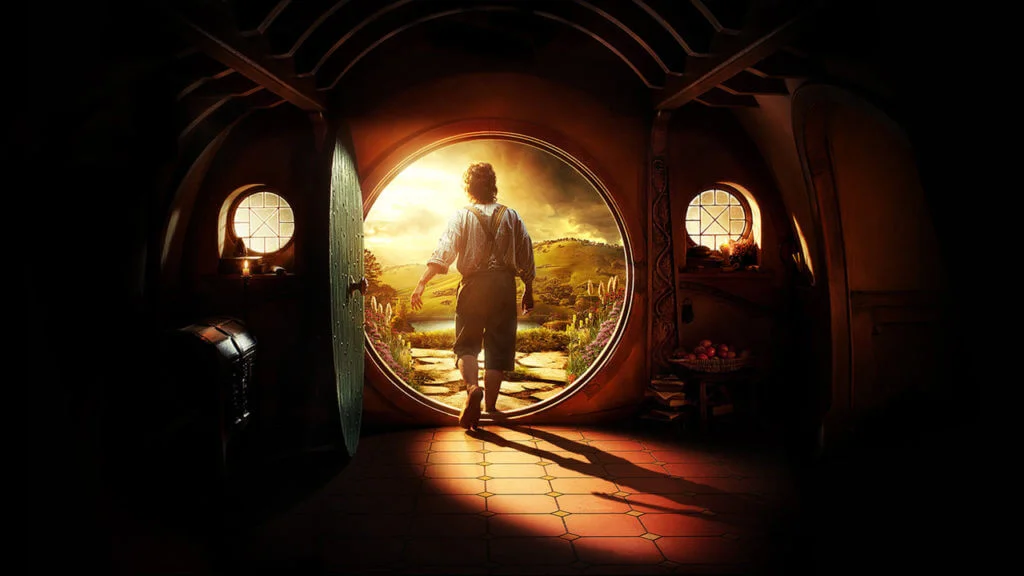
Refusing the Call to Adventure
Few people ever fully embrace the Hero’s Journey, a psychological odyssey that leads the individual to wholeness .
Because of our fear of the unknown, many refuse the call to adventure. We delay our journey in many ways:
- Put important things aside.
- Procrastinate.
- Distract ourselves with TV, social media, and other people’s lives.
- Make excuses.
- Stay stuck in the lazy part .
- Focus on competing with others.
But something brews inside of us. An internal tension builds. The tension may be small at first, but it grows stronger in the darkness. Tensions are those opposing forces at play within us. This internal conflict creates disharmony.
Humans don’t like disharmony when it bubbles into consciousness, and so these internal tensions can catapult us out of the familiar. The feeling of discord can lead to action and ultimately, some resolution.
Maybe you’re currently embracing your hero’s journey. Or perhaps you’ve been refusing the call. It matters not. What matters is what you do today— right now .
How to Embrace Your Hero’s Journey, Step by Step
The main thing you need to do to embrace your hero’s journey is stay present.
Remember, as Campbell explained, “You are the hero of your own story.”
Psychological development is supposed to be a natural process. But we aren’t currently in a world that supports healthy development.
As such, it’s vital to listen within .
Here are a few guides that may serve you:
- Access Your Inner Guide
- How to Ground Yourself
- How to Stay in Your Center
- How to Overcome Internal Resistance
Ultimately, be mindful of your fears and aspirations.
Left unchecked, your fears can subconsciously lead you to endlessly refuse the call to adventure.
In contrast, your aspirations can help you embrace your adventure.
As Joseph Campbell often said,
Follow your bliss!
Videos Related to the Hero’s Journey Steps
Book related to the hero’s journey steps.
The hero’s journey steps are outlined in the books referenced throughout this guide:
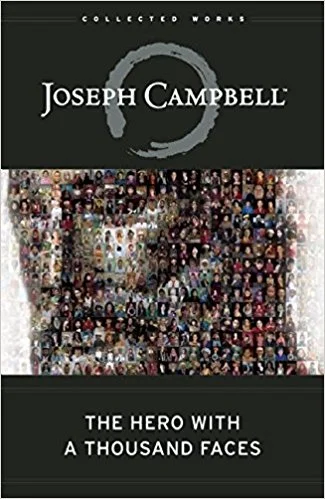
The Hero with a Thousand Faces by Joseph Campbell
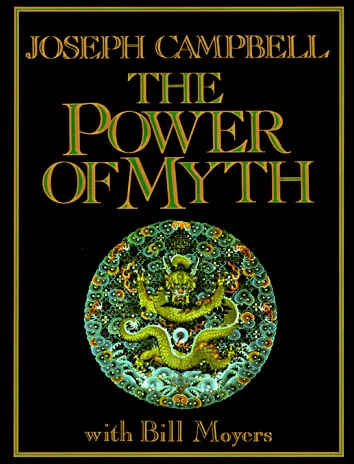
The Power of Myth by Joseph Campbell
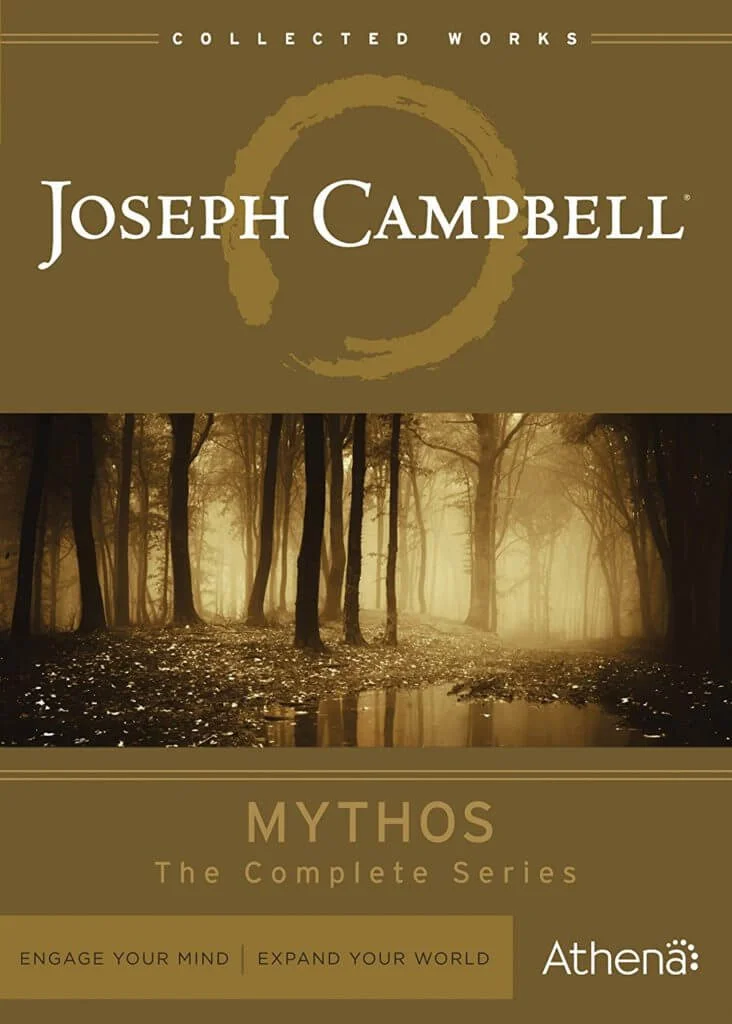
Joseph Campbell’s Mythos Lecture Series (DVD)
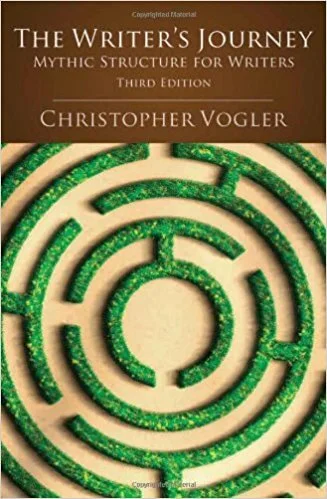
The Writer’s Journey by Christopher Vogler

How to Be an Adult by David Richo
What Do You Think?
Are you going through the hero’s journey steps?
About the Author
Scott Jeffrey is the founder of CEOsage, a self-leadership resource publishing in-depth guides read by millions of self-actualizing individuals. He writes about self-development, practical psychology, Eastern philosophy, and integrated practices. For 25 years, Scott was a business coach to high-performing entrepreneurs, CEOs, and best-selling authors. He's the author of four books including Creativity Revealed .
Learn more >
I would like to understand the Hero’s journey. Joseph Campbell describes it as something that has been taken/lost or life giving. How do I know if my hero’s journey has been done?
If you’re examining the hero’s journey from the perspective of individuation — that is, the journey to mature adulthood — it takes many years to come to wholeness within oneself.
Psychologically speaking, the hero’s journey is inward. The characters you meet (like the Mentor) are within yourself. So it involves active imagination in bringing the archetype into some form of harmony within yourself.
You have mentioned a choice to stay in the comfort of safety or the unknow for growth. I am wondering if this is done in a Psychological manner where your life’s circumstances stay as they are or you physically live in a different environment, leaving your surroundings, people and material responsibilities etc.. Hope you can answer this for me.
If you’re a young adult, there’s often an external aspect to the hero’s journey — for example, leaving home and separating from one’s parents. But what Campbell was highlighting with the monomyth is ultimately a psychological process akin to Jungian individuation: https://scottjeffrey.com/individuation-process/
I want to share my thoughts on the heroes journey. After reading the twelve steps, and what you said- I quote “Step 12: Return with the Elixir Often, the prize the hero initially sought (in Step 9) becomes secondary as a result of the personal transformation he undergoes.
Perhaps the original quest was financially driven, but now the hero takes greater satisfaction in serving others in need.
The real change is always internal.
In this final stage, the hero can become the master of both worlds, with the freedom to live and grow, impacting all of humanity.”
My favorite movie for a while now has been The Peaceful Warrior, I have just watched Coach Carter. They seem to tell the same story and I think the story of The Heroes Journey. You have mentioned Star Wars, James Bond and the Matrix.
In the movies The Peaceful Warrior, and Coach Carter, the achievement earned is an inward spiritualism that is, I quote” impacting all of humanity.” Thank-you.
If The Peaceful Warrior is your favorite movie, read Dan Millman’s “The Way of the Peaceful Warrior” — the book the film is based on. Much deeper insights. It’s a magical book — especially when you’re just setting out on your self-discovery journey.
I have read about 25% so far, I am not a good reader. I give myself three pages each day, yet often I’m reading more. It is as if the movie is replaying and I’m able to go with it, imaging the main characters. There is more information from reading than watching the movie, though I am thinking there is a lot of fiction, as it has been described on the net. Though I just need to adhere to the believable parts. I don’t know if it is possible to remember the day’s events that happened during college. For example, what people said, what they were doing throughout the day. My college day’s I can only remember situations that happened all dispersed from one another, with only a few minutes recalled. Does someone like yourself able to recall conversations and put them as dialogs for a book? Or is it a writer’s privilege to invent these for the book?
“The Peaceful Warrior” is a work of fiction. The genre is technically called “visionary fiction.”
There is a passage in the book where Socrates say’s “Mind is an illusory reflection of cerebral fidgeting. It comprises all the random uncontrolled thoughts that bubble into awareness from the subconscious. Consciousness is not the mind; awareness is not mind; attention is not mind. Mind is an obstruction, an aggravation, a primal weakness in the human experiment. It is a kind of evolutionary mistake in the human being. I have no use for the mind.” I don’t think think this way because what we have as humans is natural and so it has a purpose. I am interested if you would give an opinion on this statement Socrates said.
For the most part, I agree with Millman’s statements. They are also consistent with much of the Eastern traditions. An essential aspect of the meditative traditions is to “pacify the mind”. They sometimes even use stronger longer of “killing the mind.” But at other times, they make the distinction between the “aware mind” versus the “monkey mind” or the “shining mind” versus the “stirring mind.” But in terms of the untrained mind (which is the mind of over 99% of people), I agree with Millman. I just wouldn’t call it “evolutionary.”
Millman would have already made ethical judgment towards any begger, so, he should not have thought twice about ignoring him. But because his story, is going through a transformation, he had these menacing mind talks. Do you think if you were in the same situation as him, would you give the begger money or use your self-consciousness to clear negative mind noise? I am wondering if a second time in the same situation would make one change their reaction…
This is quoted from the book; “A scrawny young teenager came up to me. “Spare some change, can’t you?” “No, sorry,” I said, not feeling sorry at all. As I walked away I thought, “Get a job.” Then vague guilts came into my mind; I’d said no to a penniless beggar. Angry thoughts arose. “He shouldn’t walk up to people like that!” I was halfway down the block before I realized all the mental noise i had tuned in to, and the tension it was causing – just because some guy had asked me for money and I’d said no. In that instant I let it go.”
I finished the peaceful warrior and found it enjoyable. The preview of Dan’s second book (Sacred Journey of the peaceful warrior) sums up what he was expressing through his life.
There was one part I have heard before where the dialog between Dan and Soc was flat, with no meaning. Thank-you.
I would like to balance the four functions Jung describes (thinking, feeling, sensation and intuition) in your Individuation Process page. How do I know when feeling and sensation are active in everyday events? Could you give me an example? Thank-you.
Brett, please use the related guide page to address your questions.
The Individuation process page has not got a comments section.
I was walking in the bush on a moonlit windy night. The moving branches displayed a moving shadow, I was startled at first thought someone was behind me. Then I put the moonlight and the moving branches together and summed up what had happened without turning around. Was my thinking a Feeling, thinking, intuition or sensation? Thank-you.
I didn’t realize the comment sections weren’t open on that other guide. The psychological types represent our dominant orientations for processing information. When you were startled, was your attention on your body or the fear itself? Was your mind focused on “what could that be”? No need to answer here.
But the main thing about psychological types, from a Jungian perspective, is to understand what your dominant and inferior types are so you can develop your weakest side. Taking an Enneagram assessment test can help you determine your dominant type. In that system, it’s either thinking, feeling, or sensing.
Thank-you for your reply. You gave me an example of what I believe would be my dominant (being the first impression of the event) type. The second instance you described, is that too my dominant type? I do already know what it was that brings me fear. Can you follow up with this scenario? I have done enneagram questions before, and I am hopeless in giving a true response as all multiple question apply to equally.
“I have done enneagram questions before, and I am hopeless in giving a true response as all multiple question apply to equally.”
In my experience, when people say things like this, it’s often because they are “out of center” and analyzing things in their heads. If, for example, you read detailed descriptions of each Type, there’s no way you’re going to relate equally to all of them. Only one (sometimes a few) will strike a deep cord within you. It may leave you feeling “raw” and exposed.
Using the example you provided isn’t really going to help in this context. Do you mostly live in your head (mind/thoughts/analysis), your body (gut/sensations/sensory perception), or feelings? We all use all of them, but one tends to be more dominant than the others.
Thank-you. I agree with you Quote “If, for example, you read detailed descriptions of each Type, there’s no way you’re going to relate equally to all of them”. You might think I’m procrastinating as I want to work this out. Quote” Superior Function versus Inferior Function We like to do things we’re good at and avoid doing things in which we feel inadequate. Thus, we develop specific skills while undeveloped capacities remain in the unconscious. Jung grouped these four functions into pairs: thinking and feeling, sensing and intuiting”. Follow me for a sec, I have determined my superior function is Thinking, that would leave my inferior function to feeling. I assume sensing and intuition would be in the middle. I’m going to give the answer that you will give to my question, how do I bring the four functions to the middle? Answer ; center yourself. Do you agree or tell me what I should be doing?
Brett, I can’t really speak to what you should be doing. From a Jungian perspective (as well as transpersonal psychology), you would develop your inferior function and grow in that line of intelligence. I borrow the concept of the Center from the Taoist tradition. Western psychology mainly seeks to build a healthy ego while Eastern traditions mainly focus on transcending the ego.
Is the answer to “center yourself”? Sure. But most likely you’ll only be able to do this temporarily (representing a “state” of consciousness), while if you develop via various practices, you establish different structural changes that become more stable.
How to Center Yourself.
I like this article and want to learn more. I’m sending you my questions in this article as there isn’t a comments section.
I have so many questions, do I really need these answered to be comfortable with learning? Or should I take a calming with acceptance approach, that will eventually find the answers I seek? Should I go ahead and ask… ok I will ask. In the four centers, take in information via the physical center, interpret experience via the emotional center, evaluate the world via the mental center. Could all be take in information? Thank-you.
Brett, I just opened the comment section on that centering guide. Please post your question there and then I’ll reply.
Is it always a Heroes journey to take on what seems an insurmountable task? I see this at the beginning of inspirational films. Thank-you.
Always be careful with the term “always.”
Remember that what Campbell was ultimately highlighting with his monomyth structure was a psychological process of development. So it’s best to keep that in context.
Insurmountable tasks can sometimes be a catalyst for one’s journey, but this is not always the case.
In films and storytelling, you need major a problem for the hero/protagonist to face. Otherwise, there’s no story.
With what you said in keeping the psychological process in context. I was thinking of the film where a football coach leaves a successful career in the city, to coach no-hoper orphans in the country. My first impression was that the coach is on a hero’s journey with much to lose but great inward comfort to gain. Now I think it is the orphan footballers who are on a hero’s journey, (by leading as an example of being an orphan and becoming successful to inspire them to do the same) to stand up with confidence to be equal to the rest of the world. The movie is twelve mighty orphans. Is this reasonable thinking and do you see different interpretation? Thank-you
I can’t really comment as I haven’t seen the film. In any decent film, multiple characters have “arcs.” In many cases, the coach in sports films plays the mentor/sage role but then has his own transformation as well. This is the case with Gandalf the Gray who has to “die” and be resurrected, transforming into Gandalf the White.
Merry Christmas Scott digital guide. Type to you soon:)
Does the hero’s journey have the same thoughts and feelings for a woman as a man?
From a Jungian perspective, the process would be different.
As Jungian Robert A. Johnson highlights in many of his books, the myths related to the feminine psyche are different than the myths related to the masculine. As such, they follow a different structure and aim.
That said, because there’s an anima in each male psyche and an animus in each female psyche, a part of us can relate to the hero’s journey in its totality. Hence, a heroine can go on a similar hero’s journey as a man.
What an excellent and thorough treatment. Thanks for these invaluable insights for my writing class.
Thank you for the feedback, Craig!
I love this observation about modern cinematic heroes: “Many popular characters in action films like Marvel and DC Comics superheroes, James Bond, Ethan Hunt (Mission Impossible), Indiana Jones, etc. never actually transform.”
Have you written elsewhere at greater length on this topic? I thought I read an article on this topic a few years back but don’t remember where! Certainly the weightiness of the observation was such a lightbulb moment.
Thanks and kind regards M.
You can find a more detailed archetypal decoding of the hero here:
https://scottjeffrey.com/hero-archetype/
Session expired
Please log in again. The login page will open in a new tab. After logging in you can close it and return to this page.
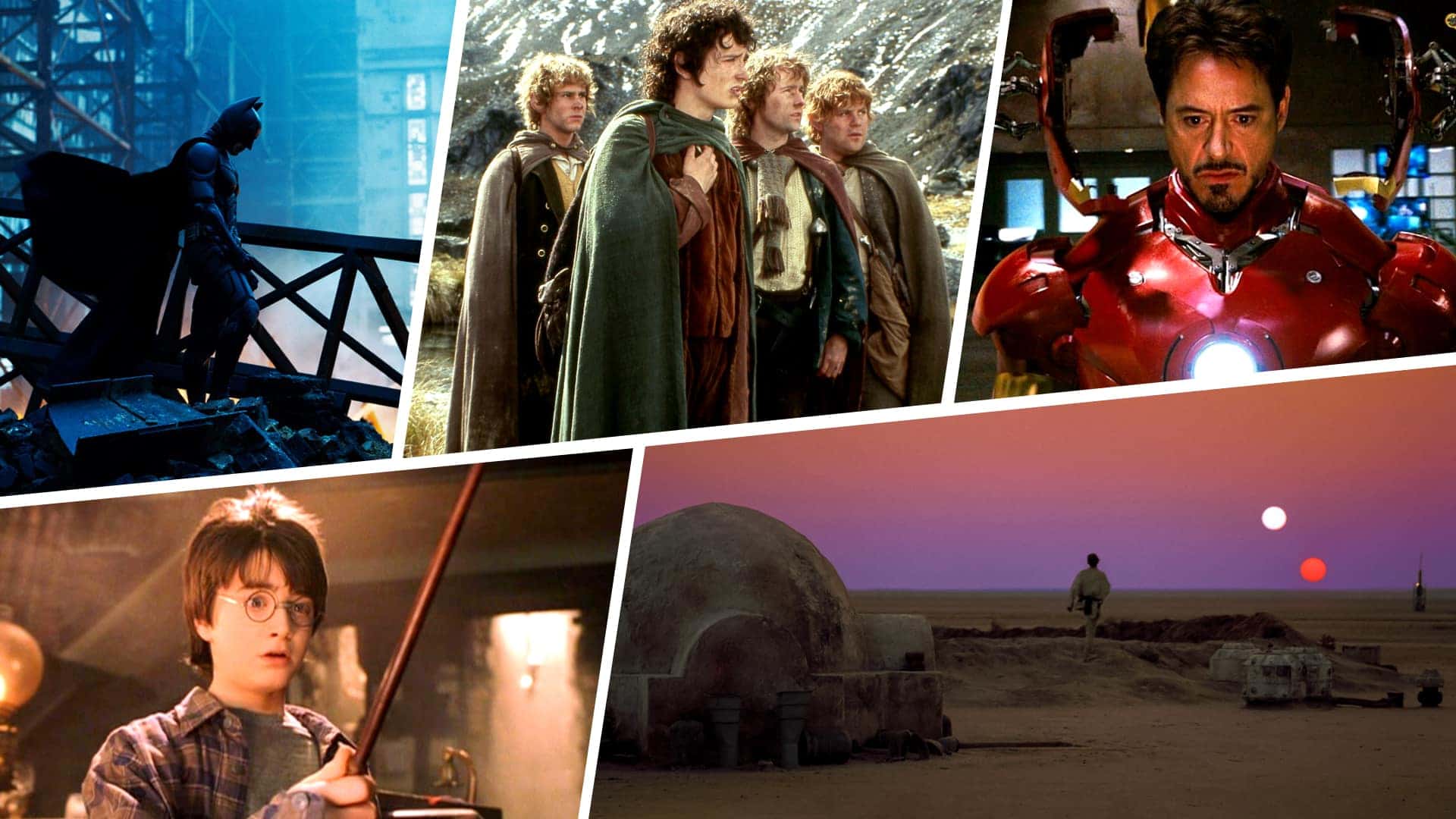
- Scriptwriting
Joseph Campbell’s Hero’s Journey: A Better Screenplay in 17 Steps
- What is a Scene
- What is The Three Act Structure
- What is Story Structure
- What is a Story Beat
- What Is a Plot
- Plot vs Story
- What is a Non-Linear Plot
- What is a Plot Device
- What is Freytag’s Pyramid
- Screenplay Structure Examples
- What is a Story Mountain
- Joseph Campbell’s Hero’s Journey
- What is Save the Cat
- Dan Harmon’s Story Circle
- What is Aristotle’s Poetics
- What is Exposition
- What is an Inciting Incident
- What is Rising Action
- What is the Climax of a Story
- What is the Falling Action
- What is Denouement
- How to Write the First Ten Pages of a Screenplay
- Plot Structure Tools
- The Ultimate Film Beat Sheet
- Secrets to Great Exposition in Screenwriting
- Writing Exposition in Film
- Best Inciting Incident Examples
- Examples of Midpoint In Movies
- Write Your Script For Free
dds are that if you’ve had any interest in writing a script within the past fifty years you’ve heard of the Hero’s Journey. A writer you got drinks with swore by it, a film professor suggested you read about it. Or you overheard the barista at your local coffee shop talking about how Die Hard is a picture-perfect template for it. But… what is it? I’ll explain all of the Hero’s Journey’s 17 steps and provide examples in the modern canon. Then you can kick writer’s block and get a strong script into the hands of agents and producers.
Watch: The Hero's Journey Explained
Subscribe for more filmmaking videos like this.
- Call to Action
- Refusal of Call
- Supernatural Aid
- Crossing The Threshold
- Belly of the Whale
- The Road of Trials
- Meeting the Goddess
- Atonement With the Father
- The Ultimate Boon
- Refusal of Return
- Magic Flight
- Rescue from Without
- Crossing the Return Threshold
- Master of Two Worlds
- Freedom to Live
Hero’s Journey Examples
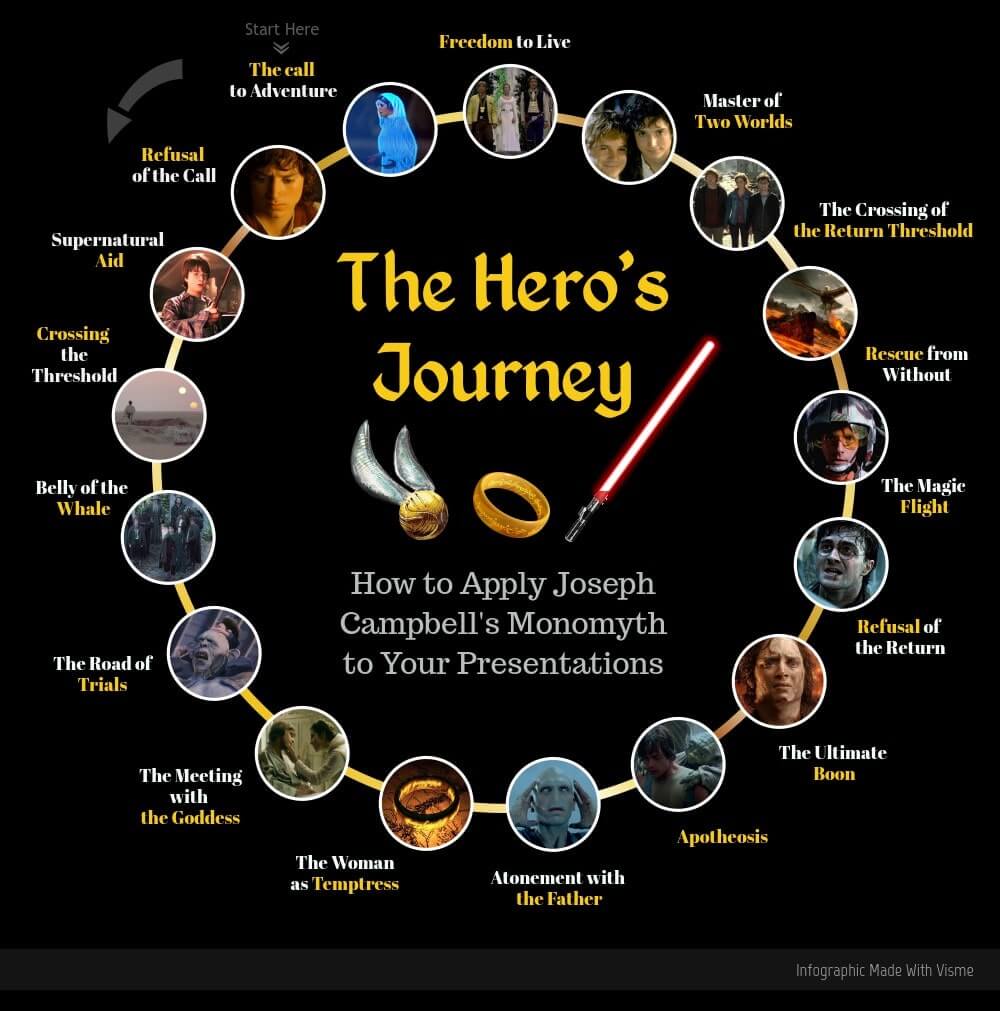
The monomyth featuring three of your favorite franchises!
The hero's journey begins, 1. call to action.
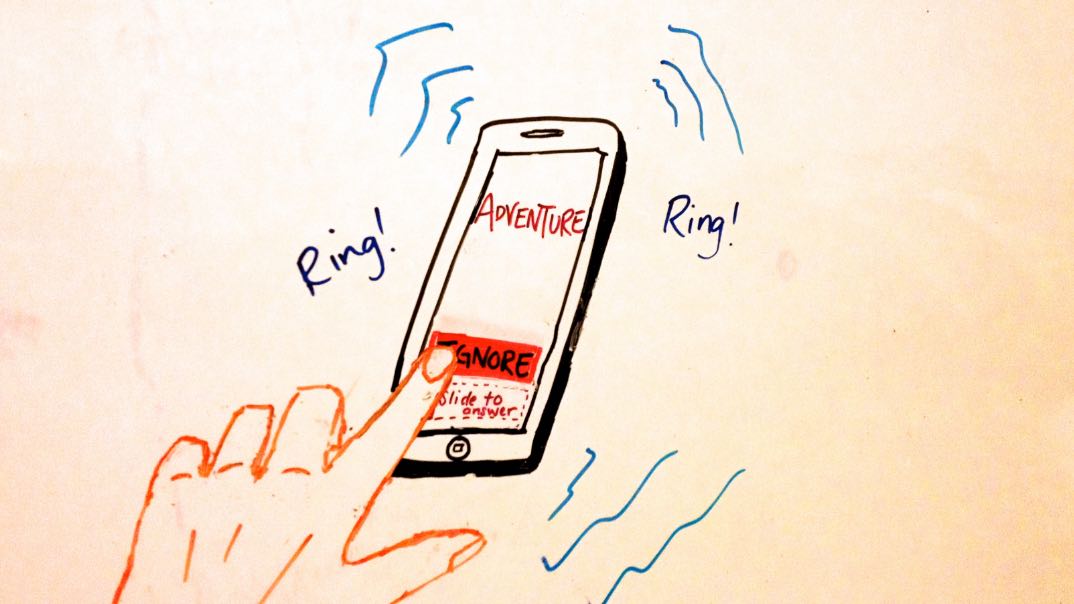
Adventure is calling. Will your hero pick up?
The initial step in the first act of the Hero’s Journey - known as the departure - is the “call to action." The Hero is beckoned to go on a journey. Think Frodo Baggins meeting Gandalf. Or the Owl inviting Harry Potter to Hogwarts.
If having a tall wizard extend a hand may be a little too on the nose for you, don't worry. This comes in all forms. In Citizen Kane , the mystery surrounding Charles Foster Kane’s final words is the call to action for the reporter, Jerry Thompson, to get to work.
The Hero Hesitates
2. refusal of call.
Next is the Hero’s “refusal of call.” The Hero initially balks at the idea of leaving their lives. The Shire is beautiful, after all, who wants to embark on a dangerous journey across the world?
This refusal is typically because of a duty or obligation they have at home. Be it family, or work, it’s something our Hero cares deeply about. But, as pressure mounts, they eventually succumb and decide to leave with the help of “supernatural aid.”
The Hero Receives Assistance
3. supernatural aid.
Once the Hero has committed themselves to embarking on whatever that quest may be (keep in mind, a Hero’s Journey can apply to a modern, emotional story, as well), they receive “supernatural aid.”
Individuals give the Hero information or tools at the start of their journey to help their chances of completing the task. Rome wasn’t built in a day, and it definitely wasn’t built alone. Every hero has a set of allies helping them get the job done. From Luke, Han, and Chewie to Harry, Ron, and Hermoine, these teams are iconic and nearly inseparable.
The tools provided come in handy as the Hero begins…
The Hero Commits
4. crossing the threshold.
Now the hero ventures into a new, unfamiliar world where the rules and dangers are unknown. They’re not in Kansas anymore, Toto, and that becomes evidently clear when monkeys start flying.
This stage often requires a few examples to crystalize the change in environment from familiar to dangerous. The contrast is key to play up how ill-prepared they initially are.
The Hero is Challenged
5. belly of the whale.
Next thing you know, we're in “the belly of the whale.” The first point of real danger in the Hero’s Journey. Taken from the Biblical story of Jonah entering a literal whale’s belly, it’s here that the dangers we’ve been warned about are manifested into tangible characters. Like hungry Orcs with swords.
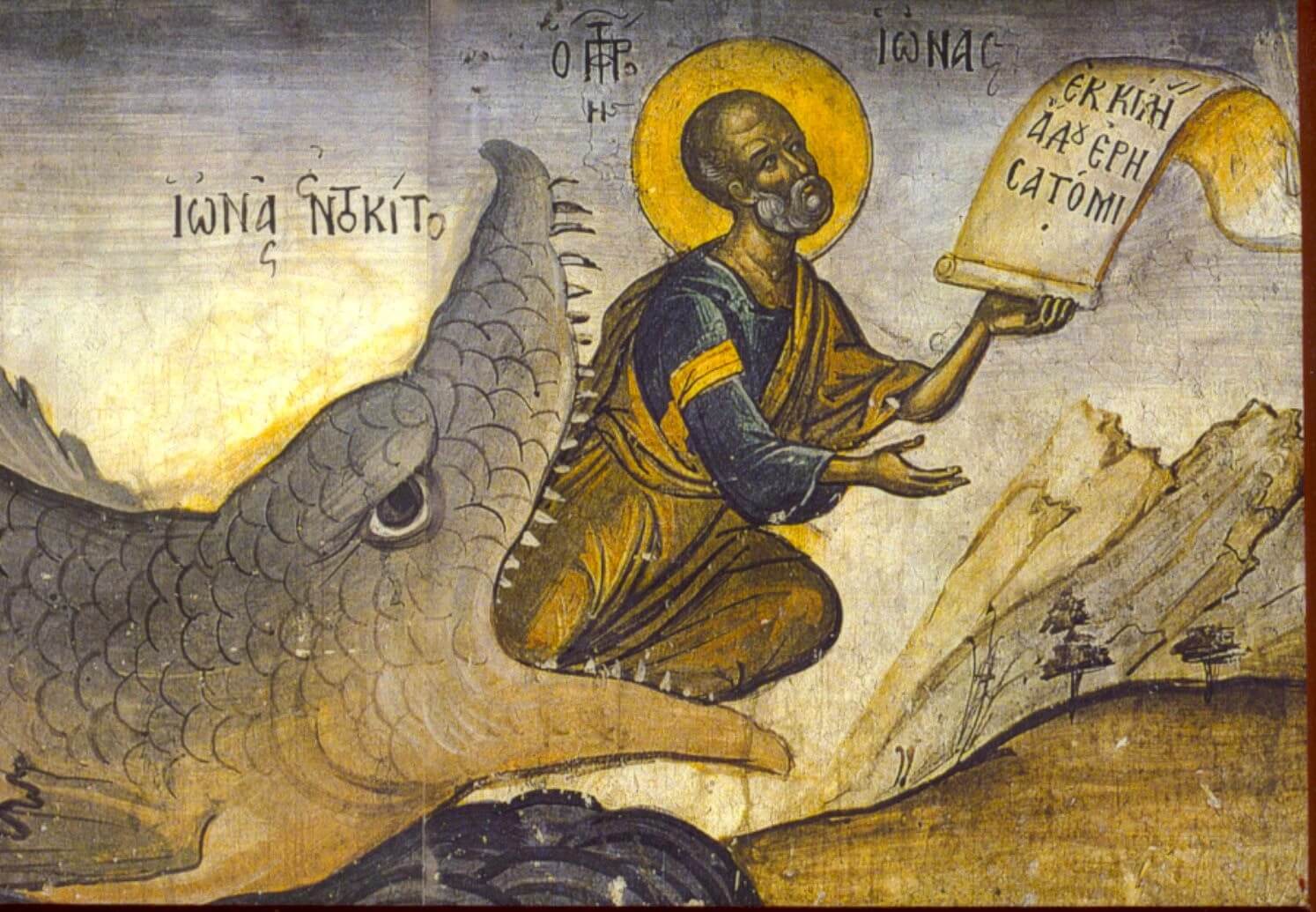
This is Jonah moments before actually being in the belly of the whale.
Now our Hero must make a decision to continue and, in turn, undergo a personal metamorphosis in the process.
They will not be the same individual at the end of this tale as they were in the beginning. This must be made clear while in the belly of the whale, as we enter Initiation, or act two. Which is the longest slice of the Hero’s Journey pie.
This part is filled with the most failure and risk, and ends with the climax. But first, it starts with...
The Hero is Tested
6. the road of trials.
“Road of trials” is a set of three tests that the Hero must take. Usually they will fail at least one of these tests. This could be a montage. It could also be a series of obstacles leading to a smaller goal in the journey.
Here is where the Hero learns to use his or her tools and allies while on their way to a...
The Great Advisor
7. meeting the goddess.
At this point in the monomyth, our Hero needs a break to adjust perspective and digest the ways they've changed. It’s here that they meet with an advisor, or a trusted individual, who will help them gain a better insight into the next steps of the journey. Frodo met with Galadriel, an elf who enlightened him with visions of potential futures.
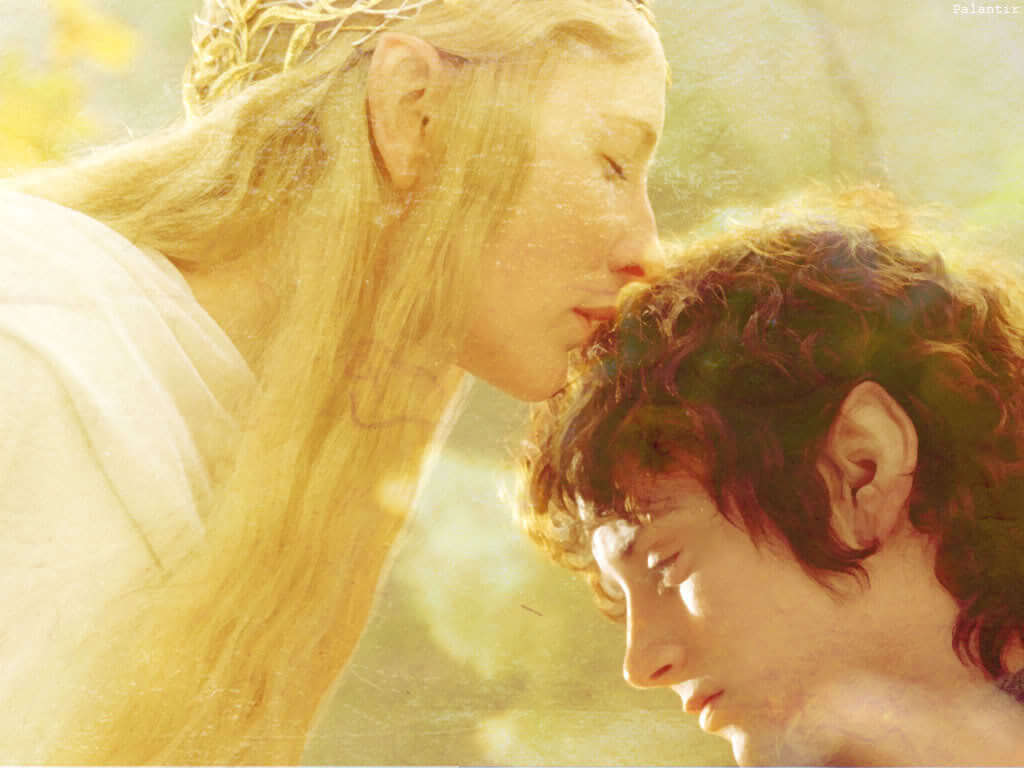
This is Frodo meeting with the goddess
Luke met Leia, and the two formed of a bond of kinship, motivating them to commit more to their cause. This individual doesn’t have to be a woman, but whoever it is our hero will gain something from the wisdom they impart.
But no good deed goes unpunished, and as we reward our Heroes in storytelling, we must also tempt them to failure.
The Hero is Torn
8. temptation.
Much like “road of trials,” “temptation” is a test in the Hero’s Journey. It presents a set of, well… temptations... that our Hero must either overcome or avoid. These temptations pick and pull at the insecurities of the Hero. A microcosm can be found in our own everyday lives with the simple act of getting out of bed.
The temptation to stay in the cozy confines of our comforters (and comfort zones) can be strong and sometimes overwhelming. This must be manifested in our story with some type of a cheap way out. Or an opportunity to throw in the towel. Our Hero must decline and press forward, nobly facing danger.
A Moment of Catharsis
9. atonement with the father.
Once they’ve thrown away their temptations, the Hero enters the “atonement with the father.” This is always an emotional part of the Hero’s Journey. It's a point in the monomyth where our protagonist must confront an aspect of their character from act one that has been slowing them down.
Something that could be fatal to their journey in the coming climactic stages. While this is actuated as a confrontation with a male entity, it doesn’t have to be.
The point here is that the Hero finds within themselves a change from who they were into someone more capable. Harry has to reconcile with the loss of his father figure, Dumbledore. Now take on Voldemort alone, using the lessons he’s learned on the way. Just like Luke...and every other hero ever. This is the emotional climax of the story.
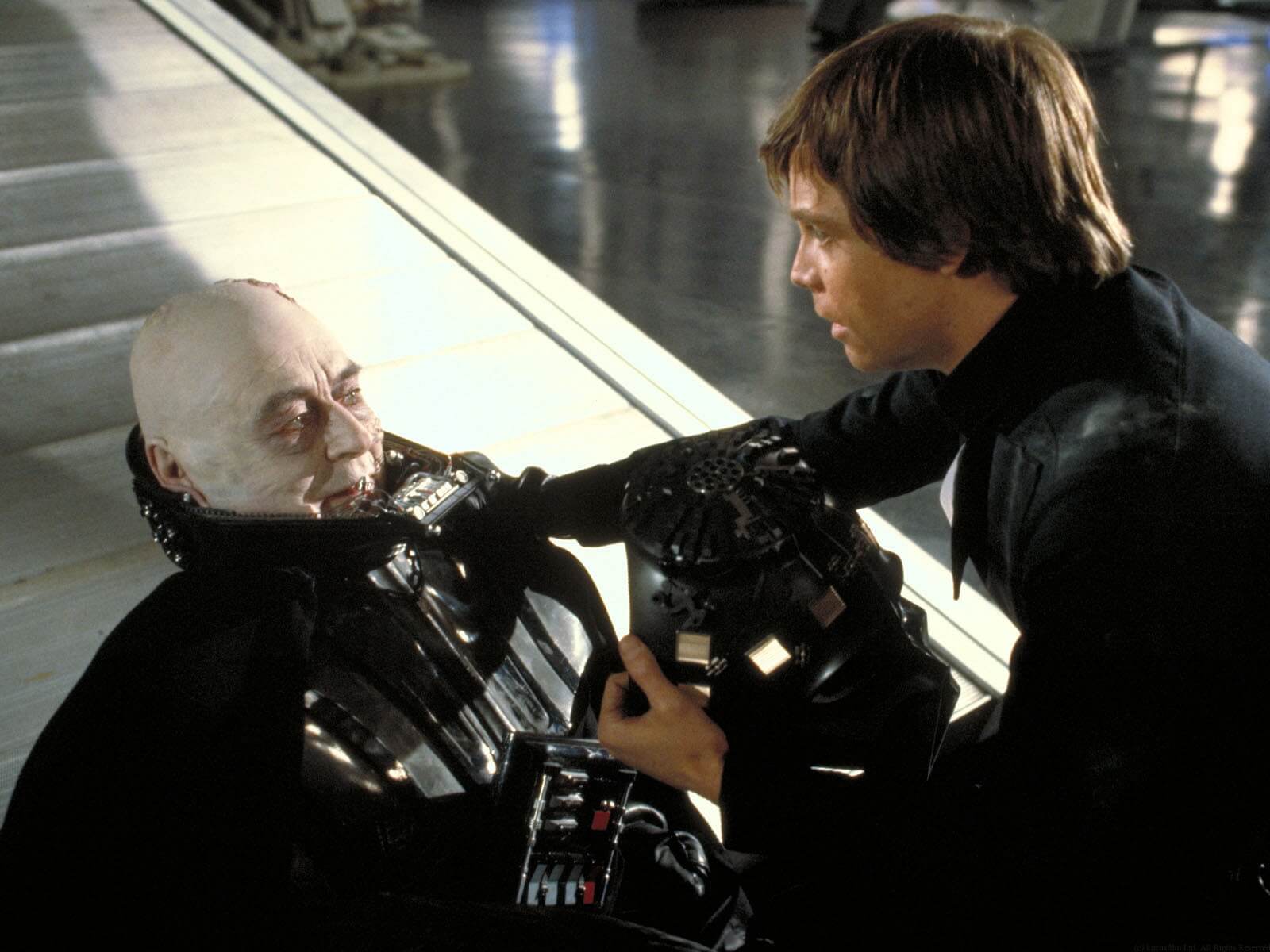
"Tell your sister... you were riiiiiiiiiight..."
Death of the hero, 10. apotheosis.
With a new sense of confidence and clarity we must then make our Hero deal with “apotheosis.” This is the stage of the Hero’s Journey where a greater perspective is achieved. Often embodied by a death of the Hero’s former self; where the old Frodo has died and the new one is born.
But this is sometimes interpreted as a more “a-ha!” moment — a breakthrough that leads to the narrative’s climax. This, too, can be tied to the death of Dumbledore and Harry’s reconciliation with the loss. This step is usually the final motivator for the Hero, driving the story into...
THe Hero Victorious
11. the ultimate boon.
This monomyth step is the physical climax of the story. This is often considered the MacGuffin of a film — the physical object that drives our Hero’s motivation. But it's a MacGuffin, to use Hitchcock's famous term, because ultimately... it doesn't matter.
In Pulp Fiction , we never find out what’s in the briefcase, but it’s the briefcase that led them on the wild journey. When we find out what “Rosebud” actually means, it simply forms a lynchpin to help us understand who Charles Foster Kane was. The mission is accomplished and the world can rest easy knowing that it is safe from evil.
The Hero's Journey Home
12. refusal of return.
Upon a successful completion of the Hero’s Journey, and a transformation into a different person, the Hero has a “refusal to return.” The Shire seems so boring now and the last thing Harry wants is to go back to that drawer under the stairs.
And, oftentimes, the return can be just as dangerous. This is the beginning of the third act of Campbell’s Hero’s Journey (known as the Return) and, while shorter, should still contain conflict. Our next step is an opportunity for that...
The Hero Transported
13. magic flight.
This is the point in the Hero’s Journey where they must get out alive, often requiring the help of individuals they met along the way. Dorothy still has to get back to Kansas, the solution to which may seem like a leap of faith.
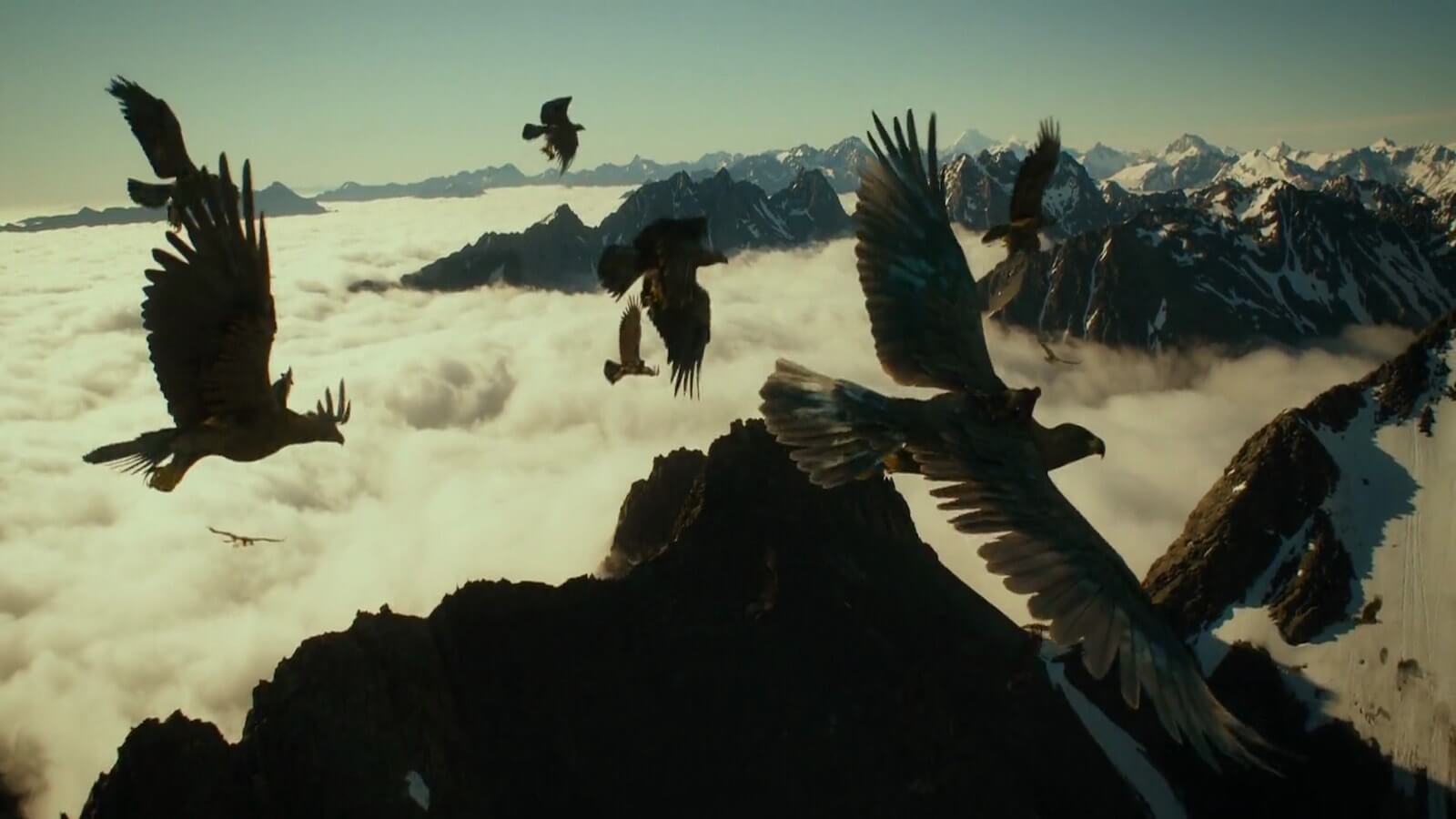
The eagles rescue from without with a magic flight to Frodo and friends
The hero's rescue, 14. rescue from without.
Bringing us to the “rescuers from without” point in the monomyth. Just because Frodo destroyed the one ring to rule them all doesn’t mean he gets a free ride back to the Shire. Remember those giant eagles we met a while back in act two? Well their back just in time!
Homeward Bound
15. crossing the return threshold.
Once the Hero is back home, it’s time to acknowledge their change in character. “Crossing the return threshold” is the stage in the monomyth where the hero has left the chaos of the outer world and return home.
But it's hard to adjust to the old world. Remember that scene where Frodo tried to enjoy a beer back at the shire? Hard to go back to normal when you essentially live with Dark Lord PTSD.
A Triumphant Return
16. master of two worlds.
The hero survived an adventure in the chaos realm, and now survives in the normal order realm. This makes him or her the master of two worlds. Not many people come back and live to tell the tale.
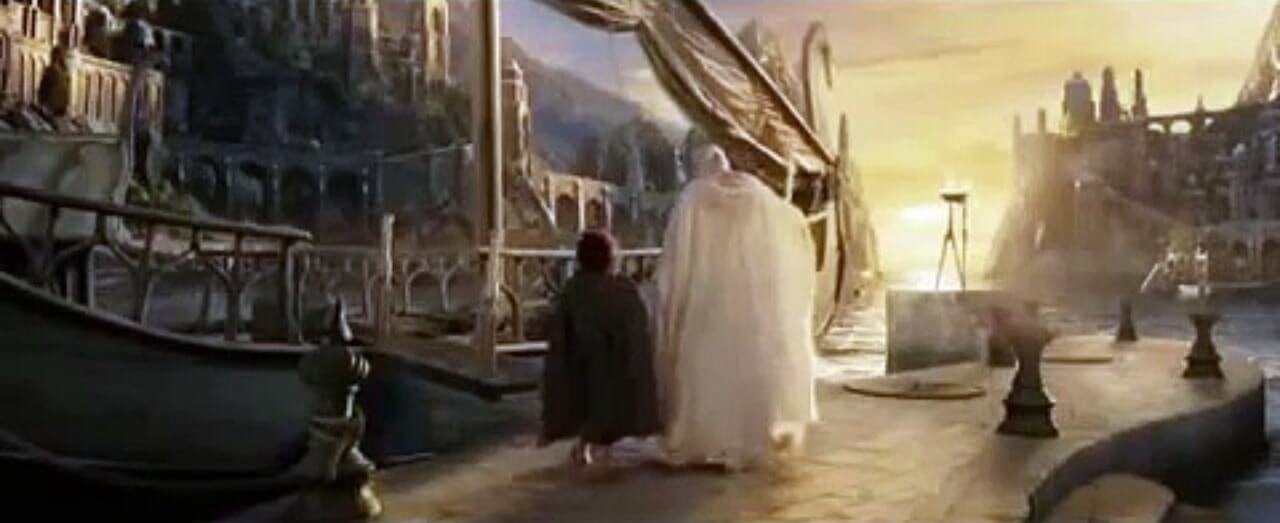
Frodo and Gandalf wandering off into the sunset post accomplishing their mission
Plus which, throughout the story, they’ve become someone much more capable and resilient than they were in act one. They've learned lessons, and brought what they learned home with them.
Whatever issues they may have had before embarking on this chaotic tale (often the ones preventing from taking the call to action) now pale in comparison with what they’ve been through.
It’s easier to deal with your annoying cousin, Dudley, after you’ve defeated Voldemort. This, in turn, leads to...
The New Status Quo
17. freedom to live.
In many ways the Hero's Journey is about death and rebirth. The story may manifest as the death of an aspect of character, and the birth of some new way of life. But the metaphor behind any story is one about mortality.
Change is constant. Hero's living through the Hero's Journey are models for us. Models that we can travers the constant change of existence, face our mortality, and continue. In a religious sense, and religions are all part of the monomyth, this is about the eternal spirit.
Look no farther than the prayer of St. Francis to understand this final step in the Hero's quest. "It is in dying that we are born to eternal life."
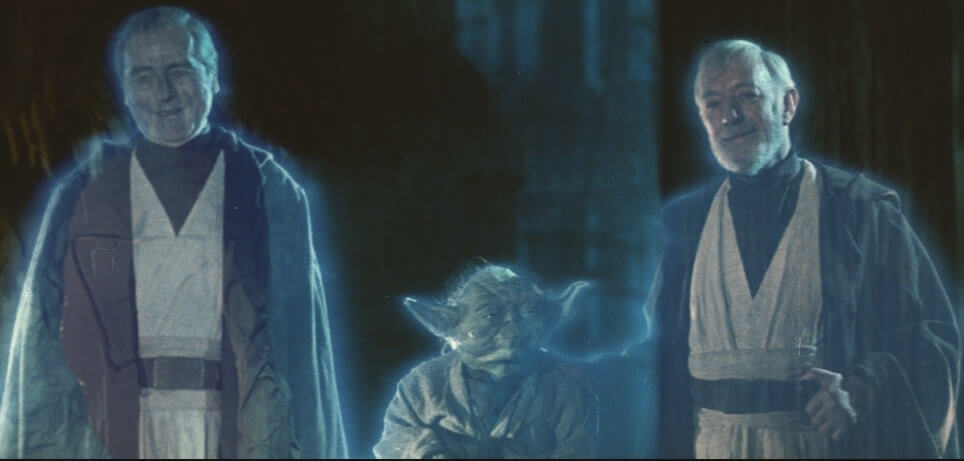
The Hero’s Journey Concludes
Cinematic heroes.
The monomyth is practically ubiquitous in Hollywood. As you’ve read earlier, Harry Potter , Star Wars , Lord of the Rings , and Citizen Kane all follow the Hero’s Journey. But, because this concept was built upon the foundations of major mythologies, it's truly a "tale as old as time."
Because Campbell discovered the Hero's Journey. He didn't make it up. Neither did those older myths. He realized as an anthropologist, that every culture all around the globe had the same story beats in all their myths.
Sure, some myths, and some movies, use 10 of the 17, or even just 5. But throughout human history, around the world, these story beats keep showing up. In cultures that had nothing to do with one another.
The Hero's Journey is a concept innate to being human.
And if remembering these 17 steps may seem a little daunting, fear not. Make sure to check out Dan Harmon's abridged 8-step variation of the Hero's Journey monomyth. Same structure, just made more digestible.
Dan Harmon’s Story Circle
Practically speaking, the Hero’s Journey is an excellent tool for structuring an outline in a clear and familiar way. It has the power to make your script much more powerful and emotionally resonant.
It’s circular, allowing for repeat adventures (which works well if you're learning how to write a TV pilot ) and each aspect drives the hero to the next. From the Goddess, the Hero finds temptation. From reconciling with the father, the Hero is now prepared for the final boon.
Story Circle • 8 Proven Steps to Better Stories
Using a Hero’s Journey worksheet can help you write a treatment or create a well-structured outline , which is a valuable tool for creating a strong first draft.
By putting in the 17 steps of the Hero’s Journey before building the outline, you can ensure that the writing process will flow smoothly and efficiently. Let us know in the comments how the monomyth has helped you craft a story that escalates with every beat to an exciting climax.
Up Next: Dan Harmon's Story Circle →
Write and produce your scripts all in one place..
Write and collaborate on your scripts FREE . Create script breakdowns, sides, schedules, storyboards, call sheets and more.
- Pricing & Plans
- Product Updates
- Featured On
- StudioBinder Partners
- The Ultimate Guide to Call Sheets (with FREE Call Sheet Template)
- How to Break Down a Script (with FREE Script Breakdown Sheet)
- The Only Shot List Template You Need — with Free Download
- Managing Your Film Budget Cashflow & PO Log (Free Template)
- A Better Film Crew List Template Booking Sheet
- Best Storyboard Softwares (with free Storyboard Templates)
- Movie Magic Scheduling
- Gorilla Software
- Storyboard That
A visual medium requires visual methods. Master the art of visual storytelling with our FREE video series on directing and filmmaking techniques.
We’re in a golden age of TV writing and development. More and more people are flocking to the small screen to find daily entertainment. So how can you break put from the pack and get your idea onto the small screen? We’re here to help.
- Making It: From Pre-Production to Screen
- What is a Call Sheet — Everything You Need to Know
- What is Narrative Pacing — And How to Control It
- How to Make a Call Sheet for Film & TV (Free Example)
- What is a Storyboard? The Fundamentals to Get You Started
- 299 Facebook
- 238 Pinterest
- 12 LinkedIn

Joseph Campbell’s Hero’s Journey: The Definitive Guide
Joseph Campbell’s Hero’s Journey is a timeless blueprint that’s shaped storytelling across cultures and eras.
It’s a narrative pattern that guides our favorite heroes from humble beginnings to epic triumphs.
We’ll explore how this framework resonates in everything from ancient myths to modern blockbusters.
Get ready to uncover the stages that make characters’ adventures universally compelling.
Joseph campbells heros journey
Who was joseph campbell.
Joseph Campbell (March 26, 1904 – October 30, 1987) was an American mythologist, writer and lecturer, best known for his work in comparative mythology and comparative religion.
His work is vast, covering many aspects of the human experience.
He wrote and spoke about religion, mythology, paleontology, archaeology, literature, philosophy, anthropology, science, and psychology.
As a scholar he influenced a generation of modernist writers and thinkers.
Campbell’s work covers many different aspects of the human experience.
The Hero’s Journey: A Timeless Blueprint
The Hero’s Journey, conceptualized by Joseph Campbell, isn’t just a literary tool – it’s the backbone of countless storytelling traditions.
It has enabled writers and filmmakers to craft narratives that resonate deeply with audiences, regardless of cultural or temporal divides.
The familiarity of the journey’s pattern provides a comforting predictability that, paradoxically, allows for incredible creativity within its framework.
When we observe the Hero’s Journey in action, we can break down the narrative into several key stages.

Characters are first introduced in their ordinary world, then called to adventure and plunged into an entirely new and often hazardous domain.
The subsequent trials and revelations that they undergo help shape their character arcs and keep viewers and readers fully engaged.
Films like Star Wars and The Lord of the Rings have become timeless by employing this narrative structure.
In dissecting these iconic tales, one can clearly identify the crucial checkpoints of the Hero’s Journey such as the meeting with the mentor, the ordeal, and the eventual transformation.
Our connection to these films is no accident – the mastery of the journey’s blueprint in their storylines speaks directly to our collective unconscious.
This narrative device is also a critical tool for us in filmmaking.
Not only can it guide scriptwriting and character development, but it influences casting, cinematography, and editing too.
- Scriptwriting – aligning the plot to the stages of the journey ensures a solid narrative structure,
- Casting – selecting actors who can authentically embody the hero’s evolving persona,
- Cinematography and Editing – creating visuals and transitions that reflect the hero’s internal and external journeys.
By embracing the Hero’s Journey, we craft stories that are not only compelling but also strike the same mythic chords that have echoed throughout human history.
It’s our pathway to creating works that linger in hearts and memories long after the credits roll.
Understanding The Narrative Pattern
Understanding the narrative pattern of the Hero’s Journey helps us grasp why some stories stick with us long after the credits roll.
It’s not just about a sequence of events – it’s about a deep structure resonating with the human psyche.
The narrative unfolds typically across twelve stages, though some adaptations may vary.
These stages can be distilled into three distinct acts – the Departure, where the hero leaves the ordinary world; the Initiation, featuring trials and growth; and the Return, where the hero comes back transformed.

Each stage serves a unique purpose in forwarding the story and the character’s development.
Let’s look at a few:
- The Ordinary World – Here, the hero is introduced in their regular life.
- The Call to Adventure – Something disrupts the hero’s routine.
- Refusal of the Call – The hero hesitates to take on the challenge.
- Meeting the Mentor – Guidance is provided to the hero.
- Crossing the Threshold – The hero fully enters the new world of adventure.
Filmmakers apply these steps thoughtfully to produce unforgettable journeys.
For instance, films like The Matrix and Harry Potter thrive on this formula, ensuring audiences see parts of themselves in the heroes they admire.
By recognizing these patterns, we’re better positioned to construct our narratives or analyze those we find particularly compelling.
In doing so, we gain a clearer understanding of the magic woven into the fabric of classic and contemporary tales.
Uncovering The Stages Of The Hero’s Adventure
As we jump deeper into the heart of Joseph Campbell’s model, it’s essential to break down the Hero’s Journey into digestible segments.
These stages form a framework that artists have employed to craft some of the most compelling narratives in cinema.
Departure Act
The Departure Act marks the beginning of the Hero’s journey.

Here, call to adventure propels the protagonist into a world beyond their familiar boundaries.
- The Ordinary World – establishes the hero’s normal life,
- Call to Adventure – offers the initial spark for change,
- Refusal of the Call – highlights the hero’s reluctance,
- Meeting with the Mentor – provides guidance for the journey,
- Crossing the First Threshold – marks the hero’s commitment to the adventure.
Initiation Act
The Initiation Act, often the bulk of the journey, thrusts the hero into trials and tribulations.
Challenges faced here are pivotal for growth and transformation.
- Tests, Allies, and Enemies – reveals the complexities of the new world,
- Approach to the Inmost Cave – signifies preparation for the central ordeal,
- Ordeal – tests the hero’s resolve in a fierce confrontation,
- Reward – confers an achievement or object of great value.

From Ancient Myths To Modern Blockbusters: How The Hero’s Journey Resonates
When we jump into the motifs of ancient myths, we uncover the timeless structure of the Hero’s Journey that continues to echo through modern cinema.
Films such as Star Wars and The Lord of the Rings have their foundations steeped in the classic stages of Joseph Campbell’s narrative framework.
Our fascination with heroic tales is not merely a cultural coincidence.
Instead, it’s deeply rooted in our collective psyche – propelling narratives from mere stories to profound journeys that mirror our own lives.
Blockbusters continue to draw on the Hero’s Journey for a very compelling reason – the universality of its theme.
Whether it’s the longing for adventure or the ultimate triumph over adversities, these stories tap into a shared human experience.
While the settings and characters change, the core stages of the Hero’s Journey remain as relevant in today’s stories as they were centuries ago.
As storytellers, we find a powerful ally in this narrative arc:
- Character development that fosters an emotional connection with the audience,
- Plot progressions that feel both exciting and familiar.
Our ability to reinvent and reimagine these stages keeps the Hero’s Journey fresh yet recognizable.
Heroes may falter and stray, but their stories will always find resonance with us, making their final return something we can all aspire to.
The Hero’s Journey isn’t just a template for crafting narratives; it’s a master key.
It unlocks the doors for us to create compelling, deep, and wide-reaching stories that span cultures and time periods.
The Compelling Nature Of Characters’ Adventures
The allure of the Hero’s Journey isn’t just in its structure; it’s deeply embedded in the characters we meet and the adventures they embark upon.
These are not just mere escapades; they are reflections of our own life’s quests.
Through their trials and triumphs, we see parts of ourselves, making their journey our journey.
Characters crafted on the bones of the Hero’s Journey reveal much about human nature and our eternal quest for meaning.
Whether it’s Luke Skywalker wrestling with his destiny in Star Wars or Dorothy seeking her way home in The Wizard of Oz , the narrative digs deep into the psyche, revealing universal truths through personal trials.
By taking note of these pivotal elements –
- Transformation,
- Inner conflicts,
- Mentorship,
- Ultimate boon.
We grasp the essence of why these stories resonate with us so profoundly.
It’s not merely the victory of the heroes that we celebrate; it’s their entire journey, marked by growth, resilience, and the human spirit’s indefatigable quest for a better self.
The immersion into fantastical worlds, whether it’s the expansive universe of The Lord of the Rings or the intricate politics and family drama of Game of Thrones , invites us to lose ourselves in stories that feel both incredibly distant yet intensely personal.
In witnessing the characters’ adventures unfold, we’re reminded of our potential for greatness in the face of adversity.
We’re not just passive observers; we’re participants in an emotional odyssey, rooting for characters as they make difficult choices that will forever change their worlds and ours.
Their journey becomes a mirror, and in that mirror, we catch glimpses of who we are and who we might become.
Joseph Campbells Heros Journey – Wrap Up
We’ve explored the depths of Joseph Campbell’s Hero’s Journey and discovered its timeless impact on storytelling.
This narrative structure isn’t just a tool for writers; it’s a lens through which we view our own lives.
Our fascination with these tales stems from their universal appeal—they echo the very essence of the human experience.
By identifying with the hero’s trials and transformations, we’re inspired to embark on our personal quests.
As storytellers, we wield the power to craft narratives that not only entertain but also enlighten, offering a reflection of our collective journey.
The Hero’s Journey continues to guide us, proving that at the heart of every great story lies the potential for connection and growth.
Frequently Asked Questions
What is the hero’s journey.
The Hero’s Journey is a narrative structure that outlines a hero’s adventure and transformation through a series of stages.
It is divided into three acts: Departure, Initiation, and Return.
How Does The Hero’s Journey Influence Storytelling?
The Hero’s Journey serves as a blueprint for storytelling, resonating with human emotions and creating cinematic experiences that stick with audiences across different cultures and time periods.
What Are The Three Acts Of The Hero’s Journey?
The three acts are Departure, where the hero leaves the ordinary world; Initiation, where the hero faces trials and gains wisdom; and Return, where the hero comes back, often with something beneficial for their community.
Why Do Stories Following The Hero’s Journey Resonate With Audiences?
These stories tap into our collective psyche and reflect shared human experiences, such as growth, resilience, and the quest for self-improvement, making them universally compelling.
What Makes A Character’s Development In The Hero’s Journey Impactful?
Character development is impactful because it showcases a transformation that includes overcoming inner conflicts, learning from mentors, and enduring trials, which mirrors our own life’s quests.
How Does The Hero’s Journey Impact The Audience?
The audience participates emotionally, rooting for the characters as they encounter hardships and make choices that lead to personal growth and transformation, reflecting our own potential for greatness.
Best Jump Scare Movies: 20 Super Jumpy Movies
Shooting In The Rain: The Filmmaker's Definitive Guide
Matt Crawford
Related posts, what is theological fiction meaning & impact in literature, what is eucatastrophe in writing a tale’s twist explained, what is tone in literature and film: the complete guide, what is plot structure definition, examples & how to use it effectively, what are dream worlds in fiction writing complete guide, hypozeuxis unpacked: defining its role in writing, leave a reply cancel reply.
This site uses Akismet to reduce spam. Learn how your comment data is processed .
Username or Email Address
Remember Me
Registration is closed.
Pin It on Pinterest
The Art of Narrative
Learn to write.

A Complete Guide to The Hero’s Journey (or The Monomyth)
Learn how to use the 12 steps of the Hero’s Journey to structure plot, develop characters, and write riveting stories that will keep readers engaged!
Before I start this post I would like to acknowledged the tragedy that occurred in my country this past month. George Floyd, an innocent man, was murdered by a police officer while three other officers witnessed that murder and remained silent.
To remain silent, in the face of injustice, violen ce, and murder is to be complicit . I acknowledge that as a white man I have benefited from a centuries old system of privilege and abuse against black people, women, American Indians, immigrants, and many, many more.
This systemic abuse is what lead to the murder of George Floyd, Breonna Taylor, Ahmaud Arbery, Sandra Bland, Eric Garner, Treyvon Martin, Philando Castile, Freddie Gray, Walter Scott, Tamir Rice and many more. Too many.
Whether I like it or not I’ve been complicit in this injustice. We can’t afford to be silent anymore. If you’re disturbed by the violence we’ve wit nessed over, and over again please vote this November, hold your local governments accountable, peacefully protest, and listen. Hopefully, together we can bring positive change. And, together, we can heal .
In this post, we’ll go over the stages of Joseph Campbell’s Hero’s Journey, also known as the Monomyth. We’ll talk about how to use it to structure your story. You’ll also find some guided questions for each section of the Hero’s Journey. These questions are designed to help guide your thinking during the writing process. Finally, we’ll go through an example of the Hero’s Journey from 1997’s Men In Black.
Down at the bottom, we’ll go over reasons you shouldn’t rely on the Monomyth. And we’ll talk about a few alternatives for you to consider if the Hero’s Journey isn’t right for your story.
But, before we do all that let’s answer the obvious question-
What is the Hero’s Journey?

The Hero’s Journey was first described by Joseph Campbell. Campbell was an American professor of literature at Sarah Lawrence College. He wrote about the Hero’s Journey in his book The Hero with a Thousand Faces . More than a guide, this book was a study on the fundamental structure of myths throughout history.
Through his study, Campbell identified seventeen stages that make up what he called the Monomyth or Hero’s Journey. We’ll go over these stages in the next section. Here’s how Campbell describes the Monomyth in his book:
“A hero ventures forth from the world of common day into a region of supernatural wonder: fabulous forces are there encountered and a decisive victory is won: the hero comes back from this mysterious adventure with the power to bestow boons on his fellow man.”
Something important to note is that the Monomyth was not conceived as a tool for writers to develop a plot. Rather, Campbell identified it as a narrative pattern that was common in mythology.
George Lucas used Campbell’s Monomyth to structure his original Star Wars film. Thanks to Star Wars ’ success, filmmakers have adopted the Hero’s Journey as a common plot structure in movies.
We see it in films like The Matrix , Spider-man , The Lion King , and many more. But, keep in mind, this is not the only way to structure a story. We’ll talk about some alternatives at the end of this post.
With that out of the way, let’s go over the twelve stages of the Hero’s Journey, or Monomyth. We’ll use the original Men In Black film as an example (because why not?). And, we’ll look at some questions to help guide your thinking, as a writer, at each stage.
Quick note – The original Hero’s Journey is seventeen stages. But, Christopher Vogler, an executive working for Disney, condensed Campbell’s work. Vogler’s version has twelve stages, and it’s the version we’re talking about today. Vogler wrote a guide to use the Monomyth and I’ll link to it at the bottom.)
The 12 Stages of The Hero’s Journey
The ordinary world .

This is where the hero’s story begins. We meet our hero in a down-to-earth, or humble setting. We establish the hero as an ordinary citizen in this world, not necessarily “special” in any way.
Think exposition .
We get to know our hero at this stage of the story. We learn about the hero’s life, struggles, inner or outer demons. This an opportunity for readers to identify with the hero. A good idea since the story will be told from the hero’s perspective.
Read more about perspective and POV here.
In Men In Black, we meet our hero, James, who will become Agent J, chasing someone down the streets of a large city. The story reveals some important details through the action of the plo t. Let’s go over these details and how they’re shown through action.
Agent J’s job: He’s a cop. We know this because he’s chasing a criminal. He waves a badge and yells, “NYPD! Stop!”
The setting: The line “NYPD!” tells us that J is a New York City cop. The chase sequence also culminates on the roof of the Guggenheim Museum. Another clue to the setting.
J’s Personality: J is a dedicated cop. We know this because of his relentless pursuit of the suspect he’s chasing. J is also brave. He jumps off a bridge onto a moving bus. He also chases a man after witnessing him climb vertically, several stories, up a wall. This is an inhuman feat that would have most people noping out of there. J continues his pursuit, though.
Guided Questions
- What is your story’s ordinary world setting?
- How is this ordinary world different from the special world that your hero will enter later in the story?
- What action in this story will reveal the setting?
- Describe your hero and their personality.
- What action in the story will reveal details about your hero?
The Call of Adventure

The Call of Adventure is an event in the story that forces the hero to take action. The hero will move out of their comfort zone, aka the ordinary world. Does this sound familiar? It should, because, in practice, The Call of Adventure is an Inciting Event.
Read more about Inciting Events here.
The Call of Adventure can take many forms. It can mean a literal call like one character asking another to go with them on a journey or to help solve a problem. It can also be an event in the story that forces the character to act.
The Call of Adventure can include things like the arrival of a new character, a violent act of nature, or a traumatizing event. The Call can also be a series of events like what we see in our example from Men In Black.
The first Call of Adventure comes from the alien that Agent J chases to the roof of the Guggenheim. Before leaping from the roof, the alien says to J, “Your world’s going to end.” This pique’s the hero’s interest and hints at future conflict.
The second Call of Adventure comes after Agent K shows up to question J about the alien. K wipes J’s memory after the interaction, but he gives J a card with an address and a time. At this point, J has no idea what’s happened. All he knows is that K has asked him to show up at a specific place the next morning.
The final and most important Call comes after K has revealed the truth to J while the two sit on a park bench together. Agent K tells J that aliens exist. K reveals that there is a secret organization that controls alien activity on Earth. And the Call- Agent K wants J to come to work for this organization.
- What event (or events) happen to incite your character to act?
- How are these events disruptive to your character’s life?
- What aspects of your story’s special world will be revealed and how? (think action)
- What other characters will you introduce as part of this special world?
Refusal of the Call

This is an important stage in the Monomyth. It communicates with the audience the risks that come with Call to Adventure. Every Hero’s Journey should include risks to the main characters and a conflict. This is the stage where your hero contemplates those risks. They will be tempted to remain in the safety of the ordinary world.
In Men in Black, the Refusal of the Call is subtle. It consists of a single scene. Agent K offers J membership to the Men In Black. With that comes a life of secret knowledge and adventure. But, J will sever all ties to his former life. No one anywhere will ever know that J existed. Agent K tells J that he has until sunrise to make his decision.
J does not immediately say, “I’m in,” or “When’s our first mission.” Instead, he sits on the park bench all night contemplating his decision. In this scene, the audience understands that this is not an easy choice for him. Again, this is an excellent use of action to demonstrate a plot point.
It’s also important to note that J only asks K one question before he makes his decision, “is it worth it?” K responds that it is, but only, “if you’re strong enough.” This line of dialogue becomes one of two dramatic questions in the movie. Is J strong enough to be a man in black?
- What will your character have to sacrifice to answer the call of adventure?
- What fears does your character have about leaving the ordinary world?
- What risks or dangers await them in the special world?
Meeting the Mentor

At this point in the story, the hero is seeking wisdom after initially refusing the call of adventure. The mentor fulfills this need for your hero.
The mentor is usually a character who has been to the special world and knows how to navigate it. Mentor’s provides your hero with tools and resources to aid them in their journey. It’s important to note that the mentor doesn’t always have to be a character. The mentor could be a guide, map, or sacred texts.
If you’ve seen Men In Black then you can guess who acts as J’s mentor. Agent K, who recruited J, steps into the mentor role once J accepts the call to adventure.
Agent K gives J a tour of the MIB headquarters. He introduces him to key characters and explains to him how the special world of the MIB works. Agent K also gives J his signature weapon, the Noisy Cricket.
- Who is your hero’s mentor?
- How will your character find and encounter with their mentor?
- What tools and resources will your mentor provide?
- Why/how does your mentor know the special world?
Crossing the Threshold

This is the point where your hero finally crosses over from the ordinary world into the special one. At this point, there is no turning back for your hero.
Your hero may not cross into the special world on their own. Or, they may need a dramatic event that forces them to act.
At this point, you’ll want to establish the dramatic question of your story. This is the question will your reader wants to answer by the end of your story. A dramatic question is what will keep your audience reading.
Once J decides to commit to the MIB Agent K starts the process of deleting J’s identity. The filmmakers do a great job communicating the drastic nature of J’s decision. This is done through, again, action and an effective voice-over. J’s social security number is deleted, and his fingerprints are burned off. He dons a nondescript black suit, sunglasses, and a sick-ass Hamilton watch .
This scene is immediately followed by a threatening message sent by aliens called the Arquillians. They tell the MIB they will destroy the Earth unless J and K can deliver a galaxy. The only problem is no one knows what the galaxy is. So, we get our story question. Can J and K find and deliver the MacGuffin before the Earth is destroyed?
Read more about MacGuffins here.
- What event will push your hero into the special world?
- Once they enter the special world, what keeps them from turning back?
- What is the dramatic question you will introduce?
- How will your hero’s life change once they’ve entered the special world?
Tests, Allies, Enemies

This is stage is exactly what it sounds like. Once they’ve entered the special world, your hero will be tested. They will learn the rules of this new world. Your hero’s mentor may have to further teach your hero.
The hero will also begin collecting allies. Characters whose goals align with those of your hero’s. People who will help your hero achieve their goal. These characters may even join your hero on their quest.
And this is also the point where your hero’s enemy will reveal themselves. Now, you’ve may have hinted at, or even introduced the villain in the earlier stages. But, this is where the audience discovers how much of a threat this villain is to your hero.
Read more about creating villains here.
J and K arrive at the city morgue to investigate the body of a slain member of Arquillian royalty. While there, J encounters the villain of the film. He is lured into a standoff with Edgar. Edgar isn’t Edgar. He’s a 10 foot tall, alien cockroach wearing an “Edgar suit.”
J doesn’t know that yet, though.
Edgar has also taken a hostage. He threatens the life of Dr. Laurel Weaver who has discovered the truth about aliens living on Earth. Dr. Weaver becomes an ally of J’s as he continues his search for the Arquillian’s galaxy.
J is faced with a new test as well. Just before he dies, the Arquillian alien tells J that the galaxy is on Orion’s Belt. J must discover the meaning behind this cryptic message if he hopes to save Earth.
- Who is the villain of your story, and what is their goal?
- Who are your hero’s allies?
- How will your hero meet them? And, How do everyone’s goals align?
- How will your hero be tested? Through battle? A puzzle? An emotional trauma?
Approach to the Inmost Cave

The inmost cave is the path towards the central conflict of your story. In this section, your hero is preparing for battle. They may be regrouping with allies, going over important information, or taking a needed rest. This is also a part of the story where you may want to inject some humor.
The approach is also a moment for your audience to regroup. This is an important aspect of pacing. A fast-paced story can be very exciting for the audience, but at some point, the writer needs to tap the breaks.
This approach section gives your audience time to process the plot and consider the stakes of your conflict. This is also a good time to introduce a ticking clock, and it’s perfect for character development.
In Men, In Black the Approach the Inmost Cave involves an interview with a character called Frank the Pug. Frank is a Pug breed of dog. He’s an alien in disguise.
Frank knows important details about the conflict between the Arquillians and Edgar. This is one of the funnier scenes in an overall funny film.
Read more about alliteration here… jk.
Frank also gives J a vital clue to determine the location of the Arquillian’s galaxy. They also discover that the galaxy is an energy source and not an actual galaxy.
Finally, we have the arrival of the Arquillian battleship come to destroy Earth. They give the MIB a warning. If the galaxy is not returned in one hour the will fire on the planet. So, we have a literal ticking clock.
- Where and how will your hero slow down and regroup?
- What information or resources will they need to go into the final battle?
- How can you introduce some humor or character development into this section?
- What kind of “ticking clock” will you introduce to increase the stakes of your final act?
The Ordeal

The Ordeal is about one thing, and that’s death. Your hero must go through a life-altering challenge. This will be a conflict where the hero faces their greatest fears.
It’s essential that your audience feels as if the hero is really in danger. Make the audience question whether the hero will make it out alive. But, your story’s stakes may not be life or death, such as in a comedy or romance.
In that case the death your character experiences will be symbolic. And, your audience will believe that there’s a chance the hero won’t achieve their goal.
Through the ordeal, your hero will experience death whether that be real or symbolic. With this death, the hero will be reborn with greater powers or insight. Overall, the ordeal should be the point in which your character hits rock bottom.
The Ordeal in Men In Black comes the moment when J and K confront Edgar at the site of the World’s Fair. In the confrontation with Edgar, K is eaten alive by Edgar. At this moment J is left alone to confront death. The audience is left to wonder if J can defeat Edgar on his own.
Guided Questions
- What death will your hero confront?
- What does “rock bottom” mean for your character?
- How will your hero be changed on the other side of this death event?
Reward or Seizing the Sword

At this point in the story, your hero will earn some tangible treasure for all their trouble. This can be a physical treasure. In the context of the monomyth, this is often referred to as the elixir or sword.
However, the reward can be inwardly focused. Your hero might discover hidden knowledge or insight that helps them vanquish their foe. Or, your hero can find their confidence or some self-actualization. This reward, whatever it is, is the thing that they will take with them. It is what they earn from all their hard-fought struggles.
Once K is eaten J seems to be on his own with a massive alien cockroach. This is a pretty bad spot for the rookie agent. What’s worse is the Arquillian clock is still ticking. Edgar, the cockroach, is about to escape Earth, with the galaxy, sealing the planet’s fate.
All seems lost until J claims his reward. In this case, that reward comes in the form of an insight J has about Edgar. Being a giant cockroach, J realizes that Edgar may have a weakness for his Earth-bound counterparts. So, J kicks out a dumpster and starts to smash all the scurrying bugs under his foot.
J guesses correctly, and Edgar is momentarily distracted by J’s actions. Edgar climbs down from his ship to confront J. Agent K, who is still alive in Edgar’s stomach, can activate a gun, and blow Edgar in two. J’s reward is the knowledge that he is no longer a rookie, and he is strong enough for this job. J also captures a physical treasure. After Edgar has exploded, J finds the galaxy which Edgar had swallowed earlier in the film. In this scene, both dramatic questions are answered. The MIB can save the world. And, J is strong enough for the MIB.
- What reward will your hero win?
- A physical treasure, hidden knowledge, inner wisdom, or all of the above?
The Road Back
At this point, your hero has had some success in their quest and is close to returning to the ordinary world. Your hero has experienced a change from their time in the special world. This change might make your hero’s return difficult. Similar to when your hero crossed the threshold, your hero may need an event that forces them to return.
The road back must be a dramatic turning point that heightens stakes and changes the direction of your story. This event will also re-establish the dramatic question of your story. This act may present a final challenge for your hero before they can return home.
In Men In Black, the road backstage gets a little tricky. The film establishes that when J crosses the threshold he is not able to go back to the ordinary world. His entire identity is erased. Having J go back to his life as a detective would also undo his character growth and leave the audience feeling cheated. Luckily, the filmmakers work around this by having K return to the ordinary world rather than J.
After Edgar is defeated, K tells J that he is retiring from the MIB and that J will step in as K’s replacement. The movie establishes early that agents can retire, but only after having their memory wiped. So, K asks J to wipe his memory so that he can return to a normal life. Once again, J has to grapple with the question of whether he is strong enough for this job. Can he bring himself to wipe K’s memory and lose his mentor forever? Can he fill K’s shoes as an MIB agent?
- How will your hero have to recommit to their journey?
- What event will push your hero through their final test?
- What final test will your hero face before they return to the ordinary world?
Resurrection

This is the final act of your story. The hero will have one last glorious encounter with the forces that are set against them. This is the culminating event for your hero. Everything that has happened to your hero has prepared them for this moment.
This can also be thought of as a rebirth for your hero. A moment when they shed all the things that have held them back throughout the story. The resurrection is when your hero applies all the things they’ve learned through their journey.
The final moment can be a physical battle, or again, it can be metaphorical. This is also a moment when allies return to lend a last-minute hand. But, as with any ending of a story, you need to make sure your hero is the one who saves the day.
So, here’s where things start to get a little clumsy. There are a couple of moments that could be a resurrection for our hero J. It could be the moment he faces off with Edgar. This is right before Edgar is killed. But, it’s K that pulls the trigger and kills Edgar. Based on our explanation J needs to be the one who saves the day. Maybe by stalling for time J is the one responsible for saving the day? It’s hard to say what the filmmakers’ intention was here.
The second moment that could represent a resurrection for J might be when he wipes K’s memory. It is the final dramatic hurdle that J faces before he can become a true Man in Black. But, this moment doesn’t resolve the conflict of the film.
Notice that the Hero’s Journey framework isn’t always followed to the letter by all storytellers. We’ll get back to this point at the end of the article.
- What final challenge will your hero face?
- How will your hero use the skills they’ve used to overcome their last challenge?
- How will your hero’s allies help save the day?
Return with the Elixir

The ending of your story. Your hero returns to the ordinary world, but this time they carry with them the rewards earned during their journey. They may share these rewards with others who inhabit the ordinary world. But most important, is that you show that your hero has changed for the better.
The elixir represents whatever your hero gained on their journey. Remember, the elixir can be an actual physical reward like a treasure. But, the elixir can also be a metaphorical prize like knowledge or a feeling of fulfillment. This is a moment where your hero will return some sort of balance to the ordinary world.
Be sure to show that the journey has had a permanent effect on your hero.
In the final scene of the movie, we see that J has taken on a mentor role for Dr. Weaver, an MIB recruit now. He has physically changed- his clothes are more representative of his personality. This physical transformation is meant to show that J has fully embraced his new life and journey. No longer a rookie, J has stepped into his mentor, K’s, role.
- How will you show that your character has changed from their journey?
- What reward will they bring back to the ordinary world?
- In what way will they change the ordinary world when they return?

Should I Use the Hero’s Journey for My Story?
This is a question you should ask yourself before embarking on your journey. The Monomyth works well as a framework. This is pretty obvious when you realize how many films have used it as a plotting device.
But there’s a downside to the popularity of the Monomyth. And that’s that audiences are very familiar with the beats of this kind of story. Sure, they may not be able to describe each of the twelve sections in detail. But, audiences know, intuitively, what is going to happen in these stories. At the very least, audiences, or readers, know how these stories are going to end.
This isn’t necessarily a bad thing. If your story is exciting, well-paced, and the stakes are high, people aren’t going to mind some predictability. But, if you want to shock your readers-
(And if you’re interested in how to shock readers with a plot twist, click here. )
this might not be the best story structure. And, despite how popular it is, the hero’s journey ain’t the only game in town when it comes to story structure. And, you can always take artistic liberty with the Hero’s Journey. The fact that audiences are expecting certain beats means you have an opportunity to subvert expectations.
You can skip parts of the hero’s journey if they don’t fit your plot. With my example, Men In Black it was difficult to fit the story neatly into the hero’s journey framework. This is because aspects of the movie, like the fact that it’s a buddy comedy, don’t always jive with a hero’s journey. Agent K has an important character arch, and so he ends up killing the villain rather than J. But, K’s arch isn’t at all a hero’s journey.
The point is, don’t feel locked in by any single structure. Allow yourself some freedom to tell your story. If there’s no purpose to a resurrection stage in your story then skip it! No one is going to deduct your points.
With that said, here are a few resources on the Hero’s Journey, and some alternate plot structures you’ll want to check out!
This post contains affiliate links to products. We may receive a commission for purchases made through these links
Further Reading on Plot Structure and the Hero’s Journey

If you’d like to learn more about the Hero’s Journey, or Monomyth, why not go straight to the source? The Hero With 1000 Faces is a collection of work written by Joseph Campbell. His version of the hero’s journey has 17 stages. This is less of a writing manual and more of an exploration of the evolution of myth and storytelling through the ages.

The Seven Basic Plots , by Christopher Booker, is another academic study of storytelling by Christopher Booker. Booker identifies seven basic plots that all stories fit into. They are:
- Overcoming the Monster
- Rags to Riches
- Voyage and Return

The Snowflake Method is a teaching tool designed by Randy Ingermanson that will take you through a step-by-step process of writing a novel. The Snowflake Method boils down the novel-writing process six-step process. You will start with a single sentence and with each step you build on that sentence until you have a full-fledged novel! If you’re love processes then pick up a copy of this book today.

In The Writer’s Journey: Mythic Structure for Writers, Hollywood consultant, Christopher Vogler teaches writers how to use the Hero’s Journey to write riveting stories.
Resources:
Wikipedia- Joseph Campbell
Wikipedia- Hero With 1000 Faces
Published by John
View all posts by John
6 comments on “A Complete Guide to The Hero’s Journey (or The Monomyth)”
- Pingback: How to Create Stories with the Three-Act Structure - The Art of Narrative
- Pingback: Kishōtenketsu: Exploring The Four Act Story Structure - The Art of Narrative
- Pingback: A Definitive Guide to the Seven-Point Story Structure - The Art of Narrative
- Pingback: What are Character Archetypes? 25 Character Archetypes Explained - The Art of Narrative
- Pingback: How to use the 27 Chapter Plot Structure - The Art of Narrative
I don’t understand the use of all those pictures/graphics you threw in as I was reading. They were extremely distracting and seriously detracted from whatever message you were trying to convey.
Leave a Reply Cancel reply
Copy and paste this code to display the image on your site
Discover more from The Art of Narrative
Subscribe now to keep reading and get access to the full archive.
Type your email…
Continue reading
Holiday Savings

cui:common.components.upgradeModal.offerHeader_undefined
The hero's journey: a story structure as old as time, the hero's journey offers a powerful framework for creating quest-based stories emphasizing self-transformation..

Table of Contents
Holding out for a hero to take your story to the next level?
The Hero’s Journey might be just what you’ve been looking for. Created by Joseph Campbell, this narrative framework packs mythic storytelling into a series of steps across three acts, each representing a crucial phase in a character's transformative journey.
Challenge . Growth . Triumph .
Whether you're penning a novel, screenplay, or video game, The Hero’s Journey is a tried-and-tested blueprint for crafting epic stories that transcend time and culture. Let’s explore the steps together and kickstart your next masterpiece.
What is the Hero’s Journey?
The Hero’s Journey is a famous template for storytelling, mapping a hero's adventurous quest through trials and tribulations to ultimate transformation.

What are the Origins of the Hero’s Journey?
The Hero’s Journey was invented by Campbell in his seminal 1949 work, The Hero with a Thousand Faces , where he introduces the concept of the "monomyth."
A comparative mythologist by trade, Campbell studied myths from cultures around the world and identified a common pattern in their narratives. He proposed that all mythic narratives are variations of a single, universal story, structured around a hero's adventure, trials, and eventual triumph.
His work unveiled the archetypal hero’s path as a mirror to humanity’s commonly shared experiences and aspirations. It was subsequently named one of the All-Time 100 Nonfiction Books by TIME in 2011.
How are the Hero’s and Heroine’s Journeys Different?
While both the Hero's and Heroine's Journeys share the theme of transformation, they diverge in their focus and execution.
The Hero’s Journey, as outlined by Campbell, emphasizes external challenges and a quest for physical or metaphorical treasures. In contrast, Murdock's Heroine’s Journey, explores internal landscapes, focusing on personal reconciliation, emotional growth, and the path to self-actualization.
In short, heroes seek to conquer the world, while heroines seek to transform their own lives; but…
Twelve Steps of the Hero’s Journey
So influential was Campbell’s monomyth theory that it's been used as the basis for some of the largest franchises of our generation: The Lord of the Rings , Harry Potter ...and George Lucas even cited it as a direct influence on Star Wars .
There are, in fact, several variations of the Hero's Journey, which we discuss further below. But for this breakdown, we'll use the twelve-step version outlined by Christopher Vogler in his book, The Writer's Journey (seemingly now out of print, unfortunately).

You probably already know the above stories pretty well so we’ll unpack the twelve steps of the Hero's Journey using Ben Gates’ journey in National Treasure as a case study—because what is more heroic than saving the Declaration of Independence from a bunch of goons?
Ye be warned: Spoilers ahead!

Act One: Departure
Step 1. the ordinary world.
The journey begins with the status quo—business as usual. We meet the hero and are introduced to the Known World they live in. In other words, this is your exposition, the starting stuff that establishes the story to come.

National Treasure begins in media res (preceded only by a short prologue), where we are given key information that introduces us to Ben Gates' world, who he is (a historian from a notorious family), what he does (treasure hunts), and why he's doing it (restoring his family's name).
With the help of his main ally, Riley, and a crew of other treasure hunters backed by a wealthy patron, he finds an 18th-century American ship in the Canadian Arctic, the Charlotte . Here, they find a ship-shaped pipe that presents a new riddle and later doubles as a key—for now, it's just another clue in the search for the lost treasure of the Templars, one that leads them to the Declaration of Independence.
Step 2. The Call to Adventure
The inciting incident takes place and the hero is called to act upon it. While they're still firmly in the Known World, the story kicks off and leaves the hero feeling out of balance. In other words, they are placed at a crossroads.
Ian (the wealthy patron of the Charlotte operation) steals the pipe from Ben and Riley and leaves them stranded. This is a key moment: Ian becomes the villain, Ben has now sufficiently lost his funding for this expedition, and if he decides to pursue the chase, he'll be up against extreme odds.
Step 3. Refusal of the Call
The hero hesitates and instead refuses their call to action. Following the call would mean making a conscious decision to break away from the status quo. Ahead lies danger, risk, and the unknown; but here and now, the hero is still in the safety and comfort of what they know.
Ben debates continuing the hunt for the Templar treasure. Before taking any action, he decides to try and warn the authorities: the FBI, Homeland Security, and the staff of the National Archives, where the Declaration of Independence is housed and monitored. Nobody will listen to him, and his family's notoriety doesn't help matters.
Step 4. Meeting the Mentor
The protagonist receives knowledge or motivation from a powerful or influential figure. This is a tactical move on the hero's part—remember that it was only the previous step in which they debated whether or not to jump headfirst into the unknown. By Meeting the Mentor, they can gain new information or insight, and better equip themselves for the journey they might to embark on.

Abigail, an archivist at the National Archives, brushes Ben and Riley off as being crazy, but Ben uses the interaction to his advantage in other ways—to seek out information about how the Declaration of Independence is stored and cared for, as well as what (and more importantly, who) else he might be up against in his own attempt to steal it.
In a key scene, we see him contemplate the entire operation while standing over the glass-encased Declaration of Independence. Finally, he firmly decides to pursue the treasure and stop Ian, uttering the famous line, "I'm gonna steal the Declaration of Independence."
Act Two: Initiation
Step 5. crossing the threshold.
The hero leaves the Known World to face the Unknown World. They are fully committed to the journey, with no way to turn back now. There may be a confrontation of some sort, and the stakes will be raised.

Ben and Riley infiltrate the National Archives during a gala and successfully steal the Declaration of Independence. But wait—it's not so easy. While stealing the Declaration of Independence, Abigail suspects something is up and Ben faces off against Ian.
Then, when trying to escape the building, Ben exits through the gift shop, where an attendant spots the document peeking out of his jacket. He is forced to pay for it, feigning that it's a replica—and because he doesn't have enough cash, he has to use his credit card, so there goes keeping his identity anonymous.
The game is afoot.
Step 6. Tests, Allies, Enemies
The hero explores the Unknown World. Now that they have firmly crossed the threshold from the Known World, the hero will face new challenges and possibly meet new enemies. They'll have to call upon their allies, new and old, in order to keep moving forward.
Abigail reluctantly joins the team under the agreement that she'll help handle the Declaration of Independence, given her background in document archiving and restoration. Ben and co. seek the aid of Ben's father, Patrick Gates, whom Ben has a strained relationship with thanks to years of failed treasure hunting that has created a rift between grandfather, father, and son. Finally, they travel around Philadelphia deciphering clues while avoiding both Ian and the FBI.
Step 7. Approach the Innermost Cave
The hero nears the goal of their quest, the reason they crossed the threshold in the first place. Here, they could be making plans, having new revelations, or gaining new skills. To put it in other familiar terms, this step would mark the moment just before the story's climax.
Ben uncovers a pivotal clue—or rather, he finds an essential item—a pair of bifocals with interchangeable lenses made by Benjamin Franklin. It is revealed that by switching through the various lenses, different messages will be revealed on the back of the Declaration of Independence. He's forced to split from Abigail and Riley, but Ben has never been closer to the treasure.
Step 8. The Ordeal
The hero faces a dire situation that changes how they view the world. All threads of the story come together at this pinnacle, the central crisis from which the hero will emerge unscathed or otherwise. The stakes will be at their absolute highest here.
Vogler details that in this stage, the hero will experience a "death," though it need not be literal. In your story, this could signify the end of something and the beginning of another, which could itself be figurative or literal. For example, a certain relationship could come to an end, or it could mean someone "stuck in their ways" opens up to a new perspective.
In National Treasure , The FBI captures Ben and Ian makes off with the Declaration of Independence—all hope feels lost. To add to it, Ian reveals that he's kidnapped Ben's father and threatens to take further action if Ben doesn't help solve the final clues and lead Ian to the treasure.
Ben escapes the FBI with Ian's help, reunites with Abigail and Riley, and leads everyone to an underground structure built below Trinity Church in New York City. Here, they manage to split from Ian once more, sending him on a goose chase to Boston with a false clue, and proceed further into the underground structure.
Though they haven't found the treasure just yet, being this far into the hunt proves to Ben's father, Patrick, that it's real enough. The two men share an emotional moment that validates what their family has been trying to do for generations.
Step 9. Reward
This is it, the moment the hero has been waiting for. They've survived "death," weathered the crisis of The Ordeal, and earned the Reward for which they went on this journey.

Now, free of Ian's clutches and with some light clue-solving, Ben, Abigail, Riley, and Patrick keep progressing through the underground structure and eventually find the Templar's treasure—it's real and more massive than they could have imagined. Everyone revels in their discovery while simultaneously looking for a way back out.
Act Three: Return
Step 10. the road back.
It's time for the journey to head towards its conclusion. The hero begins their return to the Known World and may face unexpected challenges. Whatever happens, the "why" remains paramount here (i.e. why the hero ultimately chose to embark on their journey).
This step marks a final turning point where they'll have to take action or make a decision to keep moving forward and be "reborn" back into the Known World.
Act Three of National Treasure is admittedly quite short. After finding the treasure, Ben and co. emerge from underground to face the FBI once more. Not much of a road to travel back here so much as a tunnel to scale in a crypt.
Step 11. Resurrection
The hero faces their ultimate challenge and emerges victorious, but forever changed. This step often requires a sacrifice of some sort, and having stepped into the role of The Hero™, they must answer to this.

Ben is given an ultimatum— somebody has to go to jail (on account of the whole stealing-the-Declaration-of-Independence thing). But, Ben also found a treasure worth millions of dollars and that has great value to several nations around the world, so that counts for something.
Ultimately, Ben sells Ian out, makes a deal to exonerate his friends and family, and willingly hands the treasure over to the authorities. Remember: he wanted to find the treasure, but his "why" was to restore the Gates family name, so he won regardless.
Step 12. Return With the Elixir
Finally, the hero returns home as a new version of themself, the elixir is shared amongst the people, and the journey is completed full circle.
The elixir, like many other elements of the hero's journey, can be literal or figurative. It can be a tangible thing, such as an actual elixir meant for some specific purpose, or it could be represented by an abstract concept such as hope, wisdom, or love.
Vogler notes that if the Hero's Journey results in a tragedy, the elixir can instead have an effect external to the story—meaning that it could be something meant to affect the audience and/or increase their awareness of the world.
In the final scene of National Treasure , we see Ben and Abigail walking the grounds of a massive estate. Riley pulls up in a fancy sports car and comments on how they could have gotten more money. They all chat about attending a museum exhibit in Cairo (Egypt).
In one scene, we're given a lot of closure: Ben and co. received a hefty payout for finding the treasure, Ben and Abigail are a couple now, and the treasure was rightfully spread to those it benefitted most—in this case, countries who were able to reunite with significant pieces of their history. Everyone's happy, none of them went to jail despite the serious crimes committed, and they're all a whole lot wealthier. Oh, Hollywood.
Variations of the Hero's Journey
Plot structure is important, but you don't need to follow it exactly; and, in fact, your story probably won't. Your version of the Hero's Journey might require more or fewer steps, or you might simply go off the beaten path for a few steps—and that's okay!

What follows are three additional versions of the Hero's Journey, which you may be more familiar with than Vogler's version presented above.
Dan Harmon's Story Circle (or, The Eight-Step Hero's Journey)
Screenwriter Dan Harmon has riffed on the Hero's Journey by creating a more compact version, the Story Circle —and it works especially well for shorter-format stories such as television episodes, which happens to be what Harmon writes.
The Story Circle comprises eight simple steps with a heavy emphasis on the hero's character arc:
- The hero is in a zone of comfort...
- But they want something.
- They enter an unfamiliar situation...
- And adapt to it by facing trials.
- They get what they want...
- But they pay a heavy price for it.
- They return to their familiar situation...
- Having changed.
You may have noticed, but there is a sort of rhythm here. The eight steps work well in four pairs, simplifying the core of the Hero's Journey even further:
- The hero is in a zone of comfort, but they want something.
- They enter an unfamiliar situation and have to adapt via new trials.
- They get what they want, but they pay a price for it.
- They return to their zone of comfort, forever changed.
If you're writing shorter fiction, such as a short story or novella, definitely check out the Story Circle. It's the Hero's Journey minus all the extraneous bells & whistles.
Ten-Step Hero's Journey
The ten-step Hero's Journey is similar to the twelve-step version we presented above. It includes most of the same steps except for Refusal of the Call and Meeting the Mentor, arguing that these steps aren't as essential to include; and, it moves Crossing the Threshold to the end of Act One and Reward to the end of Act Two.
- The Ordinary World
- The Call to Adventure
- Crossing the Threshold
- Tests, Allies, Enemies
- Approach the Innermost Cave
- The Road Back
- Resurrection
- Return with Elixir
We've previously written about the ten-step hero's journey in a series of essays separated by act: Act One (with a prologue), Act Two , and Act Three .
Twelve-Step Hero's Journey: Version Two
Again, the second version of the twelve-step hero's journey is very similar to the one above, save for a few changes, including in which story act certain steps appear.
This version skips The Ordinary World exposition and starts right at The Call to Adventure; then, the story ends with two new steps in place of Return With Elixir: The Return and The Freedom to Live.
- The Refusal of the Call
- Meeting the Mentor
- Test, Allies, Enemies
- Approaching the Innermost Cave
- The Resurrection
- The Return*
- The Freedom to Live*
In the final act of this version, there is more of a focus on an internal transformation for the hero. They experience a metamorphosis on their journey back to the Known World, return home changed, and go on to live a new life, uninhibited.
Seventeen-Step Hero's Journey
Finally, the granddaddy of heroic journeys: the seventeen-step Hero's Journey. This version includes a slew of extra steps your hero might face out in the expanse.
- Refusal of the Call
- Supernatural Aid (aka Meeting the Mentor)
- Belly of the Whale*: This added stage marks the hero's immediate descent into danger once they've crossed the threshold.
- Road of Trials (...with Allies, Tests, and Enemies)
- Meeting with the Goddess/God*: In this stage, the hero meets with a new advisor or powerful figure, who equips them with the knowledge or insight needed to keep progressing forward.
- Woman as Temptress (or simply, Temptation)*: Here, the hero is tempted, against their better judgment, to question themselves and their reason for being on the journey. They may feel insecure about something specific or have an exposed weakness that momentarily holds them back.
- Atonement with the Father (or, Catharthis)*: The hero faces their Temptation and moves beyond it, shedding free from all that holds them back.
- Apotheosis (aka The Ordeal)
- The Ultimate Boon (aka the Reward)
- Refusal of the Return*: The hero wonders if they even want to go back to their old life now that they've been forever changed.
- The Magic Flight*: Having decided to return to the Known World, the hero needs to actually find a way back.
- Rescue From Without*: Allies may come to the hero's rescue, helping them escape this bold, new world and return home.
- Crossing of the Return Threshold (aka The Return)
- Master of Two Worlds*: Very closely resembling The Resurrection stage in other variations, this stage signifies that the hero is quite literally a master of two worlds—The Known World and the Unknown World—having conquered each.
- Freedom to Live
Again, we skip the Ordinary World opening here. Additionally, Acts Two and Three look pretty different from what we've seen so far, although, the bones of the Hero's Journey structure remain.
The Eight Hero’s Journey Archetypes
The Hero is, understandably, the cornerstone of the Hero’s Journey, but they’re just one of eight key archetypes that make up this narrative framework.

In The Writer's Journey , Vogler outlined seven of these archetypes, only excluding the Ally, which we've included below. Here’s a breakdown of all eight with examples:
1. The Hero
As outlined, the Hero is the protagonist who embarks on a transformative quest or journey. The challenges they overcome represent universal human struggles and triumphs.
Vogler assigned a "primary function" to each archetype—helpful for establishing their role in a story. The Hero's primary function is "to service and sacrifice."
Example: Neo from The Matrix , who evolves from a regular individual into the prophesied savior of humanity.
2. The Mentor
A wise guide offering knowledge, tools, and advice, Mentors help the Hero navigate the journey and discover their potential. Their primary function is "to guide."
Example: Mr. Miyagi from The Karate Kid imparts not only martial arts skills but invaluable life lessons to Daniel.
3. The Ally
Companions who support the Hero, Allies provide assistance, friendship, and moral support throughout the journey. They may also become a friends-to-lovers romantic partner.
Not included in Vogler's list is the Ally, though we'd argue they are essential nonetheless. Let's say their primary function is "to aid and support."
Example: Samwise Gamgee from Lord of the Rings , a loyal friend and steadfast supporter of Frodo.
4. The Herald
The Herald acts as a catalyst to initiate the Hero's Journey, often presenting a challenge or calling the hero to adventure. Their primary function is "to warn or challenge."
Example: Effie Trinket from The Hunger Games , whose selection at the Reaping sets Katniss’s journey into motion.
5. The Trickster
A character who brings humor and unpredictability, challenges conventions, and offers alternative perspectives or solutions. Their primary function is "to disrupt."
Example: Loki from Norse mythology exemplifies the trickster, with his cunning and chaotic influence.
6. The Shapeshifter
Ambiguous figures whose allegiance and intentions are uncertain. They may be a friend one moment and a foe the next. Their primary function is "to question and deceive."
Example: Catwoman from the Batman universe often blurs the line between ally and adversary, slinking between both roles with glee.
7. The Guardian
Protectors of important thresholds, Guardians challenge or test the Hero, serving as obstacles to overcome or lessons to be learned. Their primary function is "to test."
Example: The Black Knight in Monty Python and the Holy Grail literally bellows “None shall pass!”—a quintessential ( but not very effective ) Guardian.
8. The Shadow
Represents the Hero's inner conflict or an antagonist, often embodying the darker aspects of the hero or their opposition. Their primary function is "to destroy."
Example: Zuko from Avatar: The Last Airbender; initially an adversary, his journey parallels the Hero’s path of transformation.
While your story does not have to use all of the archetypes, they can help you develop your characters and visualize how they interact with one another—especially the Hero.
For example, take your hero and place them in the center of a blank worksheet, then write down your other major characters in a circle around them and determine who best fits into which archetype. Who challenges your hero? Who tricks them? Who guides them? And so on...
Stories that Use the Hero’s Journey
Not a fan of saving the Declaration of Independence? Check out these alternative examples of the Hero’s Journey to get inspired:
- Epic of Gilgamesh : An ancient Mesopotamian epic poem thought to be one of the earliest examples of the Hero’s Journey (and one of the oldest recorded stories).
- The Lion King (1994): Simba's exile and return depict a tale of growth, responsibility, and reclaiming his rightful place as king.
- The Alchemist by Paolo Coehlo: Santiago's quest for treasure transforms into a journey of self-discovery and personal enlightenment.
- Coraline by Neil Gaiman: A young girl's adventure in a parallel world teaches her about courage, family, and appreciating her own reality.
- Kung Fu Panda (2008): Po's transformation from a clumsy panda to a skilled warrior perfectly exemplifies the Hero's Journey. Skadoosh!
The Hero's Journey is so generalized that it's ubiquitous. You can plop the plot of just about any quest-style narrative into its framework and say that the story follows the Hero's Journey. Try it out for yourself as an exercise in getting familiar with the method.
Will the Hero's Journey Work For You?
As renowned as it is, the Hero's Journey works best for the kinds of tales that inspired it: mythic stories.
Writers of speculative fiction may gravitate towards this method over others, especially those writing epic fantasy and science fiction (big, bold fantasy quests and grand space operas come to mind).
The stories we tell today are vast and varied, and they stretch far beyond the dealings of deities, saving kingdoms, or acquiring some fabled "elixir." While that may have worked for Gilgamesh a few thousand years ago, it's not always representative of our lived experiences here and now.
If you decide to give the Hero's Journey a go, we encourage you to make it your own! The pieces of your plot don't have to neatly fit into the structure, but you can certainly make a strong start on mapping out your story.
Hero's Journey Campfire Template
The Timeline Module in Campfire offers a versatile canvas to plot out each basic component of your story while featuring nested "notebooks."

Simply double-click on each event card in your timeline to open up a canvas specific to that card. This allows you to look at your plot at the highest level, while also adding as much detail for each plot element as needed!
If you're just hearing about Campfire for the first time, it's free to sign up—forever! Let's plot the most epic of hero's journeys 👇
The Hero's Journey, According to Joseph Campbell
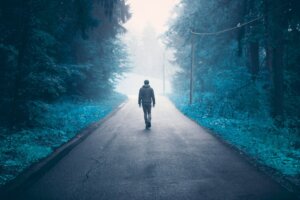
The hero’s journey
The hero’s journey is a structure noted for its flexibility, as it’s capable of mutating without sacrificing its magic. The different phases attempt to explain the circular story in which a protagonist begins a journey that will change their life , facing different difficulties to achieve a goal and be able to return home.
The hero’s journey’s circularity mimics the world’s traditional compass : Life and death, order and chaos, consciousness and unconsciousness . The protagonist goes through several phases that take the action to the end, completing what’s called the hero’s journey arc: Their evolution.
“The cave you fear to enter holds the treasure you seek.” -Joseph Campbell-
The 17 phases of the One Myth structure
Campbell describes seventeen stages or steps along this journey, although very few myths fulfill all seventeen. Some add many of the stages and others only some. The seventeen stages can be organized in different ways.
To understand their development, they’re usually divided into three sections: Departure (sometimes called “separation”), initiation, and return .
The output deals with the adventure of the hero before fulfilling the mission. In this section, the following aspects are highlighted:
- The Ordinary World and the Call to Adventure: Amidst a context of normality, something happens that functions as a call to action.
- Refusal to the Call: Obligations, insecurity, weakness, and fear influence the hero to reject the call and prefer to remain as they are. But finally, by force, they must embark on the adventure.
- Supernatural Aid: The guide or instructor appears who will introduce the hero to this new world. They often prepare the hero for what’s to come and offer them tools and amulets of protection. In this way, the protagonist is prepared to cross the border from the ordinary world to the extraordinary world.
- The Crossing of the First Threshold: The hero enters the field of adventure, venturing into unknown and dangerous terrain where no rules or limitations are known. They have crossed the door. The hero is now ready to take action and truly begin their quest, be it physical, spiritual, or emotional.
- In the Belly of the Whale: This represents the hero’s final separation from the known self and world. By participating in this stage, they’re willing to undergo a metamorphosis.
The initiation deals with the hero’s various adventures along the way:
- The Road of Trials: This stage involves various tasks that are seemingly impossible, which the hero must overcome. They make mistakes and discover their weaknesses, strengths, and talents through them.
- The Meeting with the Goddess: The hero discovers how boundless and powerful love and unconditional surrender are. True love personified.
- Woman as the Temptress: Many activities, pleasures, and rewards tempt the hero to give up.
- Atonement with the Father/Abyss: The hero confronts whoever it is who holds the ultimate power in their life and is initiated.
- The Apotheosis: The ultimate metamorphosis or transformation elevates the hero to a higher plane.
- The Ultimate Boon: This symbolizes the achievement of the mission, the climax. All the previous steps served to prepare the hero for this moment in which he achieves that precious transcendental objective. This is the climax of the hero’s story where everything they love is put on the line.
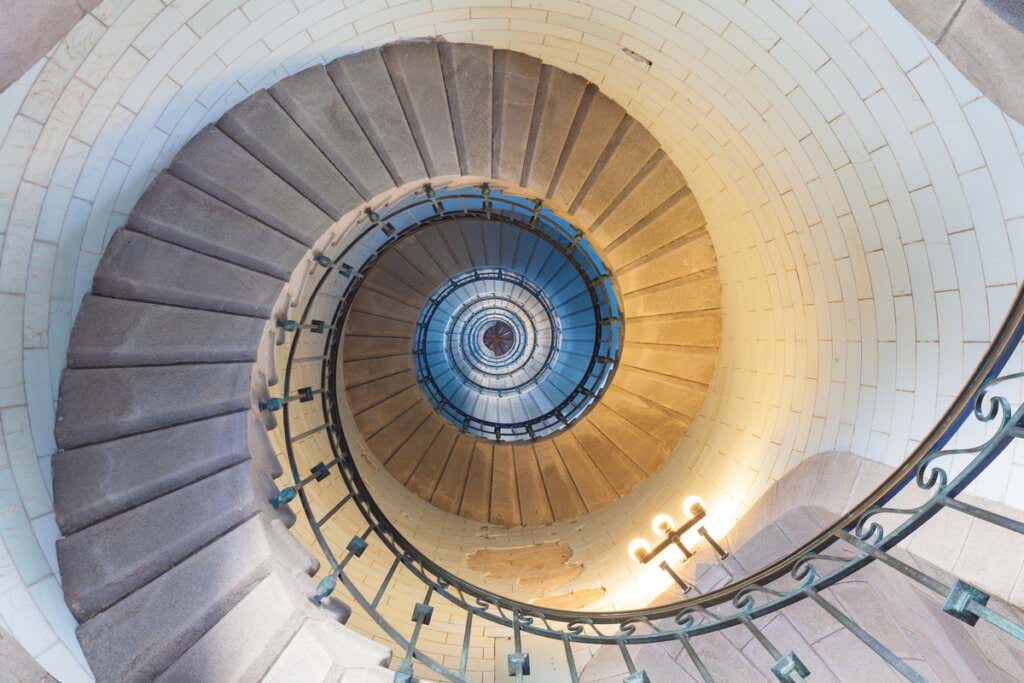
Y ou might not think you have much in common with Luke Skywalker, Harry Potter, or Katniss Everdeen. But imagining yourself as the main character of a heroic adventure could help you achieve a more meaningful life.
Research published earlier this year in the Journal of Personality and Social Psychology touts the benefits of reframing your life as a Hero’s Journey—a common story structure popularized by the mythologist Joseph Campbell that provides a template for ancient myths and recent blockbusters. In his 1949 book The Hero with a Thousand Faces , Campbell details the structure of the journey, which he describes as a monomyth. In its most elementary form, a hero goes on an adventure, emerges victorious from a defining crisis, and then returns home changed for the better.
“The idea is that there’s a hero of some sort who experiences a change of setting, which could mean being sent off to a magical realm or entering a new thing they’re not used to,” says study author Benjamin A. Rogers, an assistant professor of management and organization at Boston College. “That sets them off on a quest where they encounter friends and mentors, face challenges, and return home to benefit their community with what they’ve learned.”
According to Rogers’ findings, perceiving your life as a Hero’s Journey is associated with psychological benefits such as enhanced well-being, greater life satisfaction, feeling like you’re flourishing, and reduced depression. “The way that people tell their life story shapes how meaningful their lives feel,” he says. “And you don’t have to live a super heroic life or be a person of adventure—virtually anyone can rewrite their story as a Hero’s Journey.”
More From TIME
The human brain is wired for stories, Rogers notes, and we respond to them in powerful ways. Previous research suggests that by the time we’re in our early 20s, most of us have constructed a narrative identity—an internalized and evolving life story—that explains how we became the person we are, and where our life might go in the future. “This is how we've been communicating and understanding ourselves for thousands of years,” he says. Rogers’ research suggests that if people view their own story as following a Hero’s Journey trajectory, it increases meaning regardless of how they initially perceived their lives; even those who thought their lives had little meaning are able to benefit.
While Rogers describes a “re-storying intervention” in his research, some psychologists have used the Hero’s Journey structure as part of their practice for years. Lou Ursa, a licensed psychotherapist in California, attended Pacifica Graduate Institute, which is the only doctoral program in the country focused on mythology. The university even, she notes, houses Campbell’s personal library. As a result, mythology was heavily integrated into her psychology grad program. In addition to reflecting on what the Hero’s Journey means to her personally, she often brings it up with clients. “The way I talk about it is almost like an eagle-eye view versus a snake-eye view of our lives,” she says. “So often we’re just seeing what’s in front of us. I think that connecting with a myth or a story, whether it’s the Hero’s Journey or something else, can help us see the whole picture, especially when we’re feeling lost or stuck.”
As Rogers’ research suggests, changing the way you think about the events of your life can help you move toward a more positive attitude. With that in mind, we asked experts how to start reframing your life story as a Hero’s Journey.
Practice reflective journaling
Campbell described more than a dozen key elements of a Hero’s Journey, seven of which Rogers explored in his research: protagonist, shift, quest, allies, challenge, transformation, and legacy. He says reflecting on these aspects of your story—even if it’s just writing a few sentences down—can be an ideal first step to reframe your circumstances. Rogers offers a handful of prompts that relate back to the seven key elements of a Hero’s Journey. To drill in on “protagonist,” for example, ask yourself: What makes you you ? Spend time reflecting on your identity, personality, and core values. When you turn to “shift,” consider: What change or new experience prompted your journey to become who you are today? Then ponder what challenges stand in your way, and which allies can support or help you in your journey. You can also meditate on the legacy your journey might leave.
Ask yourself who would star in the movie of your life
One way to assess your inner voice is to figure out who would star in a movie about your life, says Nancy Irwin, a clinical psychologist in Los Angeles who employs the Hero’s Journey concept personally and professionally. Doing so can help us “sufficiently dissociate and see ourselves objectively rather than subjectively,” she says. Pay attention to what appeals to you about that person: What traits do they embody that you identify with? You might, for example, admire the person’s passion, resilience, or commitment to excellence. “They inspire us because there’s some quality that we identify with,” Irwin says. “Remember, you chose them because you have that quality yourself.” Keeping that in mind can help you begin to see yourself as the hero of your own story.
Go on more heroic adventures—or just try something new
In classic Hero’s Journey stories, the protagonist starts off afraid and refuses a call to adventure before overcoming his fears and committing to the journey. Think of Odysseus being called to fight the Trojans, but refusing the call because he doesn’t want to leave his family. Or consider Rocky Balboa: When he was given the chance to fight the world’s reigning heavyweight champion, he immediately said no—before ultimately, of course, accepting the challenge. The narrative has proven timeless because it “reflects the values of society,” Rogers says. “We like people who have new experiences and grow from their challenges.”
He suggests asking yourself: “If I want to have a more meaningful life, what are the kinds of things I could do?” One possible avenue is seeking out novelty, whether that’s as simple as driving a new way home from work or as dramatic as finally selling your car entirely and committing to public transportation.
Be open to redirection
The Hero’s Journey typically starts with a mission, which prompts the protagonist to set off on a quest. “But often the road isn’t linear,” says Kristal DeSantis, a licensed marriage and family therapist in Austin. “There are twists, turns, unexpected obstacles, and side quests that get in the way. The lesson is to be open to possibility.”
That perspective can also help you flip the way you see obstacles. Say you’re going through a tough time: You just got laid off, or you were diagnosed with a chronic illness. Instead of dwelling on how unfortunate these hurdles are, consider them opportunities for growth and learning. Think to yourself: What would Harry do? Reframe the challenges you encounter as a chance to develop resilience and perseverance, and to be the hero of your own story.
When you need a boost, map out where you are on your journey
Once you find a narrative hero you can relate to, keep their journey in mind as you face new challenges. “If you feel stuck or lost, you can look to that story and be like, ‘Which part do I feel like I’m in right now?’” Ursa says. Maybe you’re in the midst of a test that feels so awful that you’ve lost perspective on its overall importance—i.e., the fact that it’s only part of your journey. (See: When Katniss was upset about the costume that Snow forced her to wear—before she then had to go fight off a pack of ferocious wolves to save her life.) Referencing a familiar story “can help you have that eagle-eye view of what might be next for you, or what you should be paying attention to,” Ursa says. “Stories become this map that we can always turn to.” Think of them as reassurance that a new chapter almost certainly awaits.
More Must-Reads from TIME
- How Joe Biden Leads
- Lai Ching-te Is Standing His Ground
- Do Less. It’s Good for You
- There's Something Different About Will Smith
- What Animal Studies Are Revealing About Their Minds—and Ours
- What a Hospice Nurse Wants You to Know About Death
- 15 LGBTQ+ Books to Read for Pride
- Want Weekly Recs on What to Watch, Read, and More? Sign Up for Worth Your Time
Contact us at [email protected]
We will keep fighting for all libraries - stand with us!
Internet Archive Audio

- This Just In
- Grateful Dead
- Old Time Radio
- 78 RPMs and Cylinder Recordings
- Audio Books & Poetry
- Computers, Technology and Science
- Music, Arts & Culture
- News & Public Affairs
- Spirituality & Religion
- Radio News Archive

- Flickr Commons
- Occupy Wall Street Flickr
- NASA Images
- Solar System Collection
- Ames Research Center

- All Software
- Old School Emulation
- MS-DOS Games
- Historical Software
- Classic PC Games
- Software Library
- Kodi Archive and Support File
- Vintage Software
- CD-ROM Software
- CD-ROM Software Library
- Software Sites
- Tucows Software Library
- Shareware CD-ROMs
- Software Capsules Compilation
- CD-ROM Images
- ZX Spectrum
- DOOM Level CD

- Smithsonian Libraries
- FEDLINK (US)
- Lincoln Collection
- American Libraries
- Canadian Libraries
- Universal Library
- Project Gutenberg
- Children's Library
- Biodiversity Heritage Library
- Books by Language
- Additional Collections

- Prelinger Archives
- Democracy Now!
- Occupy Wall Street
- TV NSA Clip Library
- Animation & Cartoons
- Arts & Music
- Computers & Technology
- Cultural & Academic Films
- Ephemeral Films
- Sports Videos
- Videogame Videos
- Youth Media
Search the history of over 866 billion web pages on the Internet.
Mobile Apps
- Wayback Machine (iOS)
- Wayback Machine (Android)
Browser Extensions
Archive-it subscription.
- Explore the Collections
- Build Collections
Save Page Now
Capture a web page as it appears now for use as a trusted citation in the future.
Please enter a valid web address
- Donate Donate icon An illustration of a heart shape
The hero's journey
Bookreader item preview, share or embed this item, flag this item for.
- Graphic Violence
- Explicit Sexual Content
- Hate Speech
- Misinformation/Disinformation
- Marketing/Phishing/Advertising
- Misleading/Inaccurate/Missing Metadata
![[WorldCat (this item)] [WorldCat (this item)]](https://archive.org/images/worldcat-small.png)
plus-circle Add Review comment Reviews
4,607 Previews
105 Favorites
Better World Books
DOWNLOAD OPTIONS
No suitable files to display here.
EPUB and PDF access not available for this item.
IN COLLECTIONS
Uploaded by Unknown on January 6, 2012
SIMILAR ITEMS (based on metadata)
Breaking Down the Character Archetypes of the Hero’s Journey
You’ve read about George Lucas’s use of Joseph Campbell’s Monomyth found in his 1949 book, A Hero with a Thousand Faces , which is a common narrative pattern found in many stories from many different cultures worldwide. This narrative journey typically involves several character archetypes that affect the hero’s journey from beginning to end.
After the successful debut of Star Wars and Lucas’s discussions on using Campbell’s work as inspiration for his space opera, many producers, development executives, filmmakers, and screenwriters have explored the Monomyth with deeper and simplified approaches.

Christopher Vogler's Interpretation of the Hero's Journey
When Christopher Vogler, a development executive and screenwriter at Disney, was inspired by Joseph Campbell's concept of the story monomyth, he crafted a seven-page memo for Disney's development team and incoming screenwriters.
This memo, A Practical Guide to Joseph Cambell’s The Hero with a Thousand Faces , laid the groundwork for what would later become Vogler's 1992 book, The Writer's Journey: Mythic Structure for Storytellers and Screenwriters . In this book, Vogler expanded upon Campbell’s ideas.
He adapted Campbell's mythical story structure into twelve distinct stages (from Campbell’s initial seventeen). Our concise interpretations of these stages include:
- The Ordinary World : We see the hero's normal life at the start of the story before the adventure begins.
- Call to Adventure : The hero faces an event, conflict, problem, or challenge that makes them begin their adventure.
- Refusal of the Call : The hero initially refuses the adventure because of hesitation, fear, insecurity, or any other issues.
- Meeting the Mentor : The hero encounters a mentor who can give them advice, wisdom, information, or items that ready them for the journey ahead.
- Crossing the Threshold : The hero leaves their ordinary world for the first time and crosses the threshold into adventure.
- Tests, Allies, and Enemies : The hero learns the rules of the new world and endures tests, meets friends, and comes face-to-face with enemies.
- The Approach : The initial plan to take on the central conflict begins, but setbacks cause the hero to try a new approach or adopt new ideas.
- The Ordeal : Things go wrong, and added conflict is introduced . The hero experiences more difficult hurdles and obstacles, some of which may lead to a life crisis.
- The Reward : After surviving The Ordeal, the hero seizes the sword — a reward that they've earned that allows them to take on the biggest conflict. It may be a physical item or piece of knowledge or wisdom that will help them persevere.
- The Road Back : The hero sees the light at the end of the tunnel, but they are about to face even more tests and challenges.
- The Resurrection : The climax. The hero faces a final test, using everything they have learned to take on the conflict once and for all.
- The Return : The hero brings their knowledge or the " elixir " back to the ordinary world.
Within these stages are character archetypes that help to shape the hero’s journey, and their eventual character arc throughout the story.
Read More: Exploring the Twelve Stages of the Hero’s Journey
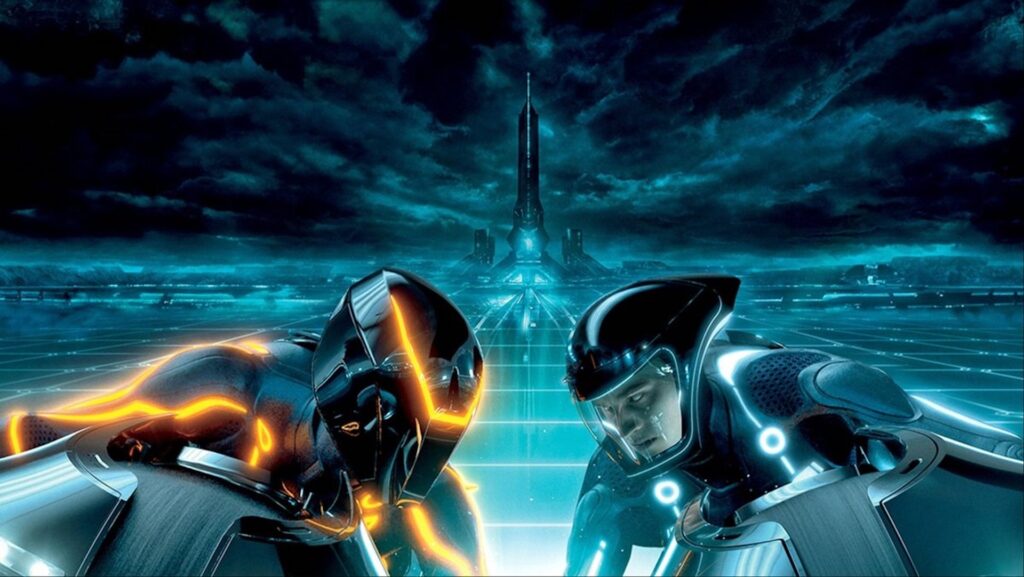
'Tron: Legacy' (2010)
What Are Character Archetypes?
A character archetype is a common recurring representation of a character that embodies a set of universal and recognizable traits or characteristics. These archetypes are seen throughout literature, film, and other storytelling mediums—and they resonate with audiences because they are based on common human experiences or cultural norms.
Archetypes work well because they are instantly recognizable to readers and audiences. For writers, character archetypes can be adapted and molded with ease during character development.
Character archetypes are not specific characters in a story but rather broad categories or templates that individual characters can be based on or inspired by. They represent typical roles characters play in the narrative, and their actions and motivations are often predictable based on the archetype they represent.
However, writers can also choose to subvert those expectations to create a more dynamic character , as well as introduce much-needed twists and turns within the story.
Read More: 10 Character Archetypes in Comedies
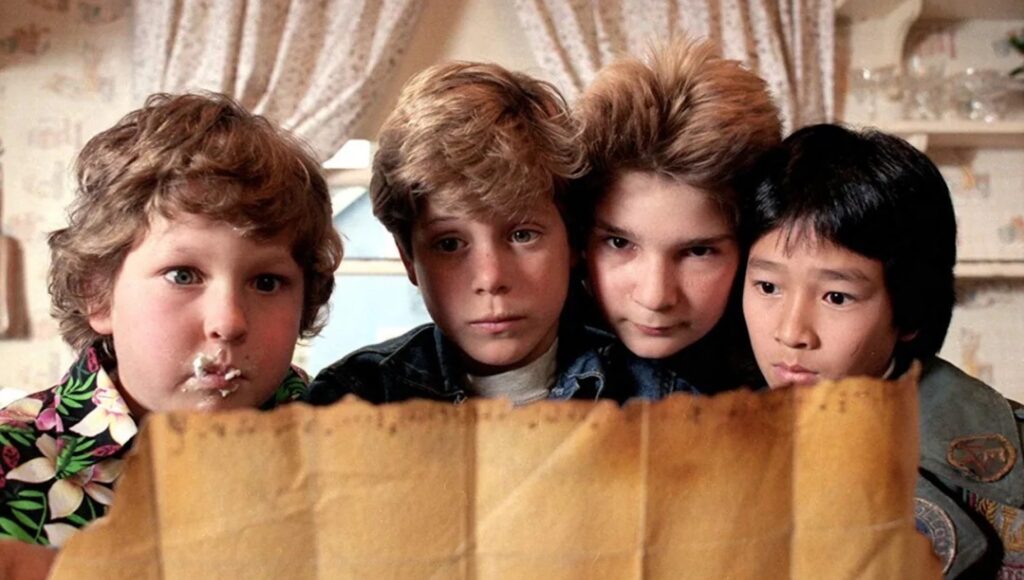
'The Goonies' (1950)
The benefits of using character archetypes include:
- Universality : Archetypes are universally understood and have similar meanings across cultures and historical contexts. This can especially help in the cinematic realm as movies are released in multiple countries and languages.
- Symbolism : These character traits can symbolize a particular aspect of human experience or life. Once again, symbolism is identifiable across many cultures.
- Predictability : Because they are based on common patterns, their behaviors and roles in stories can often be anticipated . Because of that anticipation, writers can choose between subverting those expectations or using the predictability of the archetypes to service the story and protagonist with ease.
- Variability : While archetypes are typical patterns, they allow for variations and depth, meaning a single archetype can manifest in different ways across various stories, allowing writers can adapt these traits to any character.
Character archetypes can be used as tools to tell a compelling and universal story.
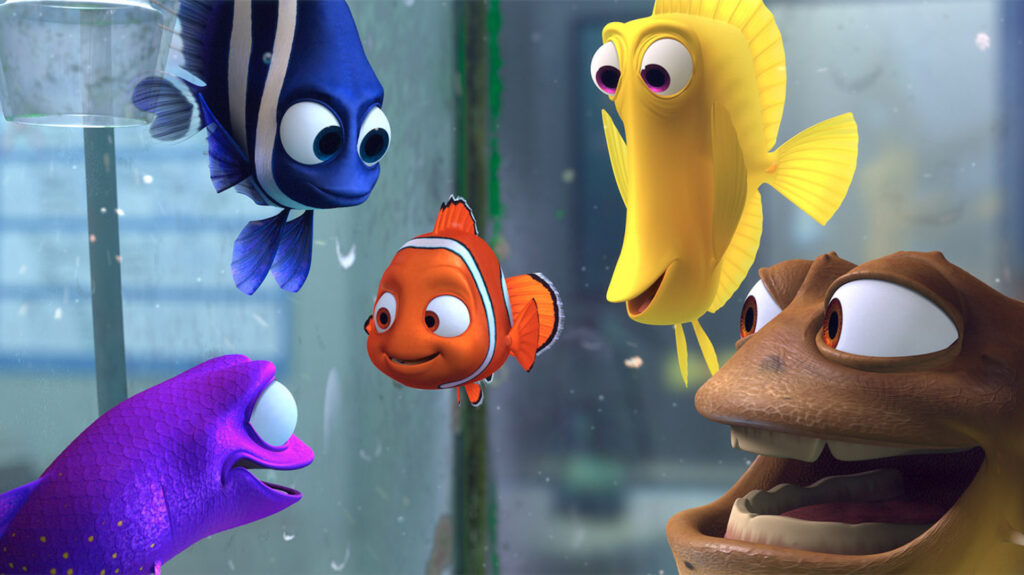
'Finding Nemo' (2003)
What Are the Character Archetypes in the Hero's Journey?
Many archetypes in the hero's journey—the threshold guardian, the herald, the shapeshifter, the trickster, the ally, and the tempter/temptress—are more defined in later interpretations and expansions of Campbell's work. People like Vogler applied his theories to modern storytelling so writers, readers, and audiences could more easily understand the dynamics of Campbell’s monomyth.
Here, we’ll break down the main character archetypes in the hero's journey utilized in Campbell’s Monomyth and Vogler’s expanded breakdowns and interpretations.
The hero is the central figure of the story (protagonist) who undergoes a journey, facing challenges and transformations. The hero often starts as an ordinary person who is then called to adventure. They are present throughout the entire journey , from the ordinary world to the return with newfound knowledge or power.
Luke Skywalker (Star Wars), Indiana Jones ( Raiders of the Lost Arc ), Katniss Everdeen ( The Hunger Games ), Barbie ( Barbie ), and Harry Potter (the Harry Potter series) are perfect examples of the hero character archetypes. You can include any protagonist within a story that goes on a physical or emotional journey.
As mentioned above, the hero in the hero’s journey usually begins their adventure within their ordinary world. This offers readers and audiences the chance to relate to the protagonist, empathize with their plight, and see the beginning of their character arc.
Read More: Why the 'Barbie' Movie is the Perfect Example of the Hero’s Journey
The shadow is the main antagonist of the story. The shadow reflects the darker aspects of the hero, sometimes represented as the mirror image (opposite) of the hero and their beliefs. Overall, they are the antagonist or villains present throughout the whole story in varied ways.
Read More: 15 Types of Villains Screenwriters Need to Know
The shadow can also be represented in metaphorical terms. If a story’s hero journey is the protagonist dealing with alcoholism or addiction, those vices can serve as the shadow/antagonist/villain.
The quintessential shadows in cinema include characters like Darth Vader ( Star Wars ), Voldemort (the Harry Potter series), and Sauron ( The Lord of the Rings series). But you can also find a less villainous shadow that takes on a lighter antagonistic role without purely evil intentions.
A perfect example of that would be Principal Rooney in Ferris Bueller’s Day Off . He doesn’t have evil intentions like a villain does. However, he is the shadow or mirror image of Ferris Bueller. Ferris believes in freedom an expression . Rooney believes in order and control of others.
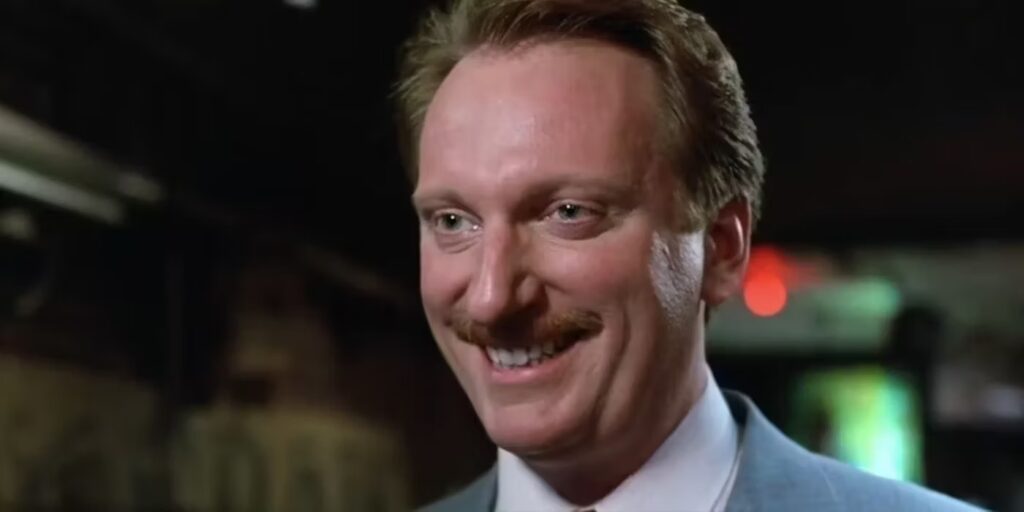
'Ferris Bueller's Day Off' (1986)
This character serves as a guide or teacher to the hero, providing them with advice, training, or magical assistance. The mentor is often a wise or experienced figure, although there have been literary and cinematic variances.
Look no further than the likes of Obi-Wan Kenobi ( Star Wars ), Yoda ( The Empire Strikes Back ), Mr. Miyagi ( The Karate Kid ), and Gandalf ( The Lord of the Rings series ) as core examples of the mentor.
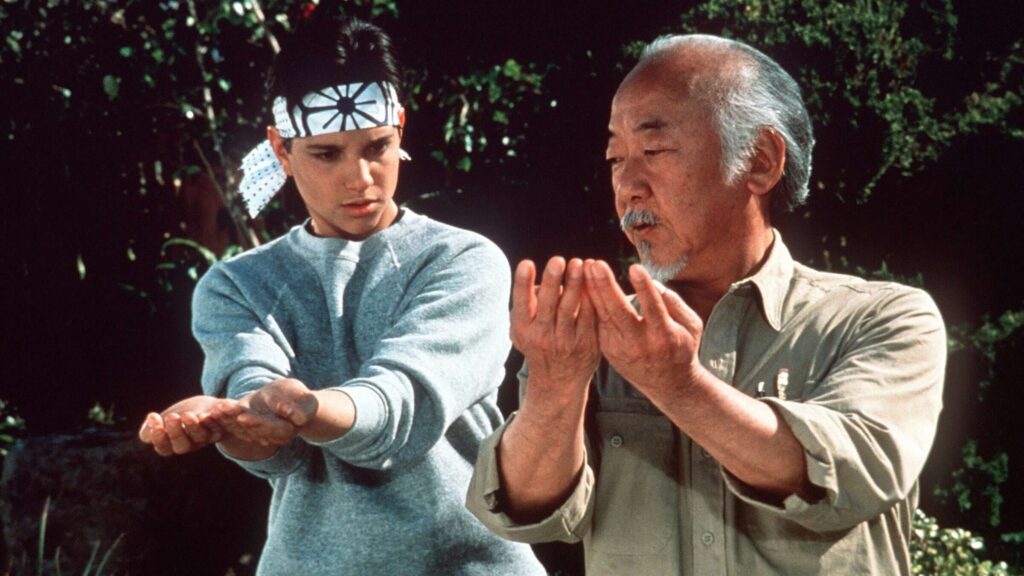
'The Karate Kid' (1984)
Allies are friends or companions who support and accompany the hero through their journey. They often complement the hero's skills and help them face challenges.
In Star Wars , the allies of Luke Skywalker include Han Solo, Chewbacca, and the droids. In The Lord of the Rings series , the fellowship companions of Frodo encompass this character archetype. You can also look to any sidekick-type character as the perfect example of an ally:
- Goose in Top Gun
- Patrick in Spongebob Squarepants
- Ron in Harry Potter
- Billy in Big
- Julie in Lady Bird
- Rod in Get Out
- Ned in the Spider-Man movies
- Sam in The Lord of the Rings
- Short Round in Indiana Jones and the Temple of Doom
Allies can also be characters who aren’t as close to the hero but offer some type of help along the way.
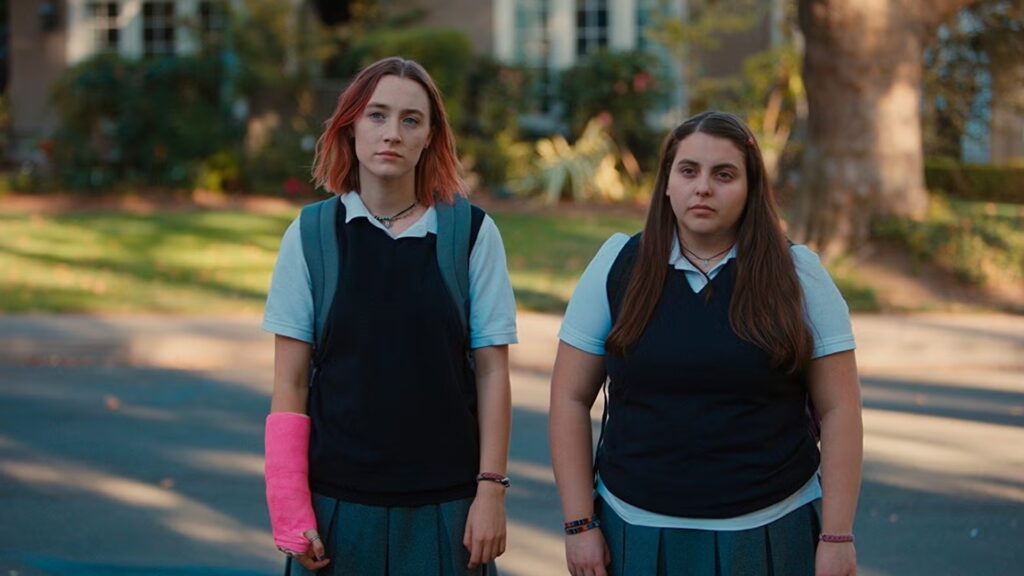
'Lady Bird' (2017)
The Threshold Guardian
These characters serve as obstacles the hero must overcome or circumvent on their journey. They are not always enemies but are present within the story to test the hero and give them the belief and ability to continue on their adventure.
Little John in the Robin Hood stories is initially the threshold guardian of the Sherwood Forest.
He eventually becomes an ally to Robin. But he’s initially a threshold guardian.
You can turn to Monthy Python and the Holy Grail as well. The Black Knight isn’t necessarily King Arthur’s foe. However, he’s there to defend the bridge at all costs.
The Herald
The herald is the character that initiates the call to adventure, pushing the hero to action, or providing the news or event that triggers their journey.
In Star Wars , R2-D2 is the herald of Luke’s journey because he delivers the message from Princess Leia to him . If Luke doesn’t see that message, he doesn’t show it to Obi-Wan Kenobi. And if Obi-Wan doesn’t see that message, he doesn’t convince Luke to come with him to join the Rebellion.
In Barbie , Weird Barbie is the one who tells Barbie the truth about what she is going through and what she must do to seek out the answers she needs.
The herald can be a major character, a supporting character, or even a minor character. In The Lord of the Rings , Gandalf is both mentor and herald, as he is the one who appears to Frodo, telling him he must bring the ring to Mordor.
The Shapeshifter
This archetype's loyalty and role are often unclear, and they can serve as an ally or an enemy to the hero. Sometimes both. Their unpredictable nature adds complexity to the story, usually resulting in twists and turns within the plot.
Snape in the Harry Potter series is one of the greatest shapeshifters in literature and film. His motives are unknown, mistaken, and hidden. He acts as both a shadow to Harry and later an ally.
Jack Sparrow in the Pirates of the Caribbean series is another great example, embodying the role of an unpredictable ally whose loyalty is often questionable. Yes, he can be looked upon as an antihero protagonist of the movie. However, the clear hero of the story is Will.
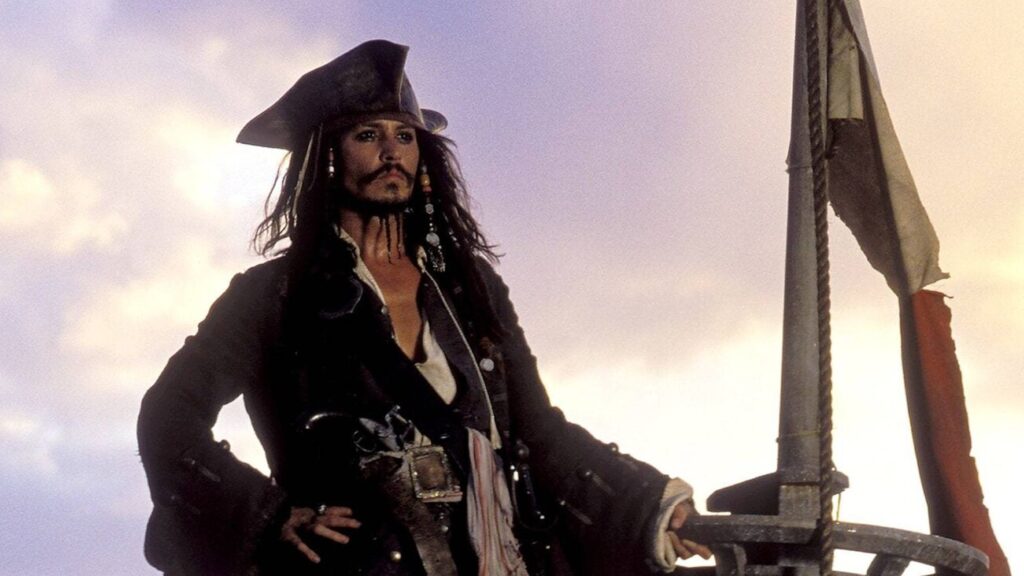
'Pirates of the Caribbean: The Curse of the Black Pearl' (2003)
The Trickster
The trickster usually adds levity to the story through comic relief. They can be allies or enemies, but typically they cause trouble for both.
Jack Sparrow falls under this character archetype as well. But a better example may be Loki in the Marvel Cinematic Universe movies. He embodies the definition of a trickster. He brings more comic relief to the movies after his initial first appearance in Thor .
Perhaps the better example would be Genie in Disney's Aladdin . He uses his powers for humorous and unexpected effects, often bending the rules and adding a lighthearted element to the story.
Tempter/Temptress
This archetype can be of any gender and represents temptation or distraction that diverts the hero from their path.
Catwoman in the Batman movies often plays the role of a temptress to Batman, combining allure with a morally ambiguous character.
Many of the Bond Girls in the James Bond films serve as temptresses, combining allure and mystery and often leading Bond into dangerous situations.
The Indiana Jones variation would be Elsa from Indiana Jones and the Last Crusade .
One of the best examples of the Tempter playing a more pivotal role in the story is Avery Tolar in The Firm . He’s a senior partner at the law firm Bendini, Lambert & Locke. His role is crucial in seducing the protagonist, Mitch McDeere, into the luxurious and corrupt world of the law firm.
He has a charismatic and persuasive personality. He mentors Mitch and exposes him to the high-stakes, high-reward lifestyle that the firm offers, including wealth, prestige, and power. Tolar's character is complex. He is a nuanced character who embodies the charm and allure that the firm uses to entice and trap its young associates.
His influence on Mitch is significant, as he represents the allure of success and the moral compromises that often accompany it. Tolar's character effectively demonstrates how the tempter archetype can be used to explore themes of corruption, temptation, and ethical dilemmas in a narrative.
The character archetypes found within the h ero’s journey offer writers the ability to take universal character templates and mold them to fit into stories that embrace the monomyth structure or use it as a starting point to tell a compelling and engaging story.
Use them in whatever way you’d like. They can encompass the more traditional definition within your story, or you can use these archetypes to set up expectations and later subvert those expectations to create a more enthralling and surprising plot.
Read More: Is Joseph Campbell's "The Hero's Journey" Dead in Screenwriting Today?
CHECK OUT OUR PREPARATION NOTES SO YOU START YOUR STORY OFF ON THE RIGHT TRACK!

Ken Miyamoto has worked in the film industry for nearly two decades, most notably as a studio liaison for Sony Studios and then as a script reader and story analyst for Sony Pictures.
He has many studio meetings under his belt as a produced screenwriter, meeting with the likes of Sony, Dreamworks, Universal, Disney, Warner Brothers, as well as many production and management companies. He has had a previous development deal with Lionsgate, as well as multiple writing assignments, including the produced miniseries Blackout, starring Anne Heche, Sean Patrick Flanery, Billy Zane, James Brolin, Haylie Duff, Brian Bloom, Eric La Salle, and Bruce Boxleitner, the feature thriller Hunter’s Creed, and many Lifetime thrillers. Follow Ken on Twitter @KenMovies and Instagram @KenMovies76
Get Our Screenwriting Newsletter!
Get weekly writing inspiration delivered to your inbox - including industry news, popular articles, and more!
Facebook Comments
Free download.

Screenwriting Resources:
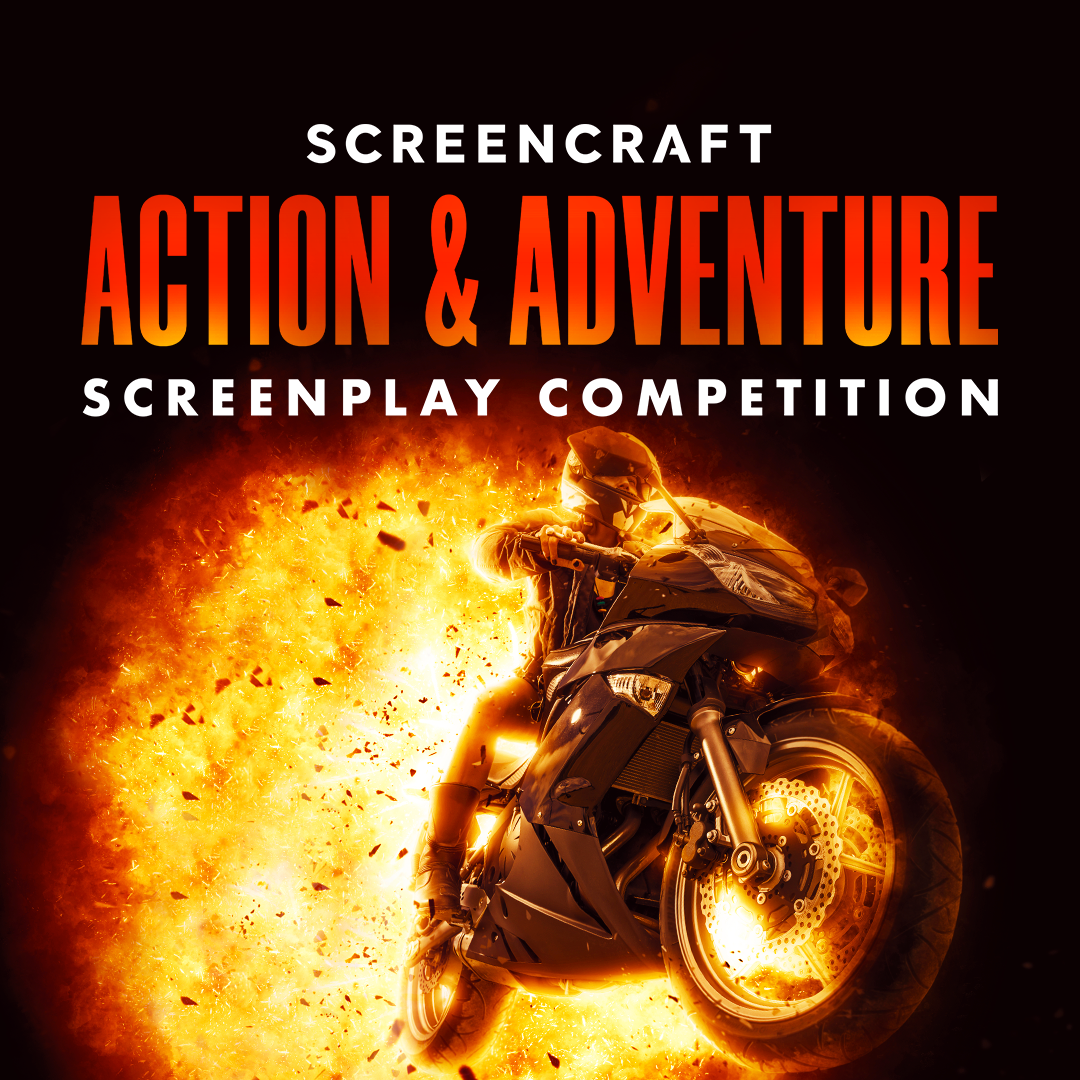
$ 15.00 Original price was: $15.00. $ 12.00 Current price is: $12.00. Add to cart
Popular Posts

Recent Posts
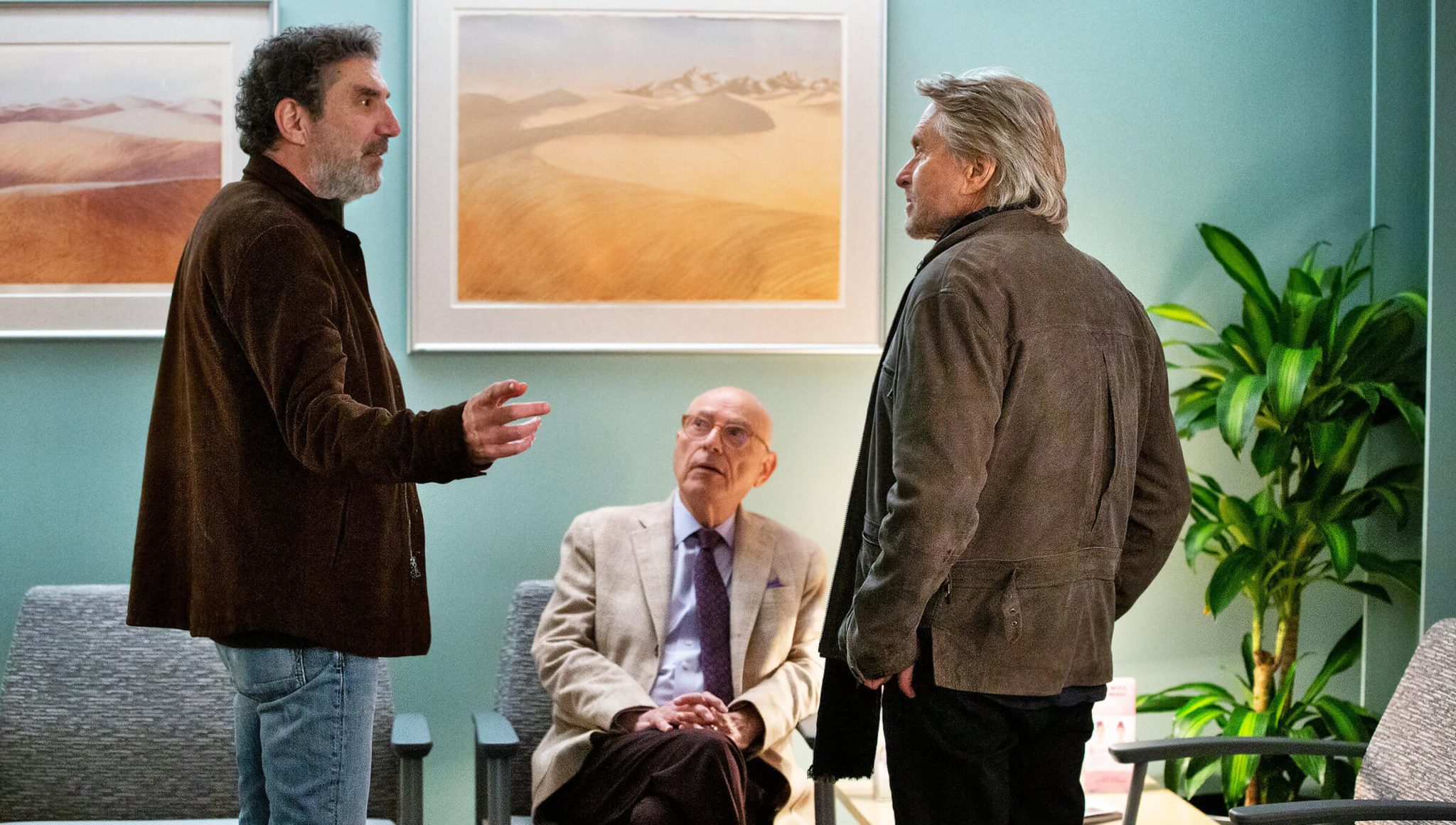
Next Related Post
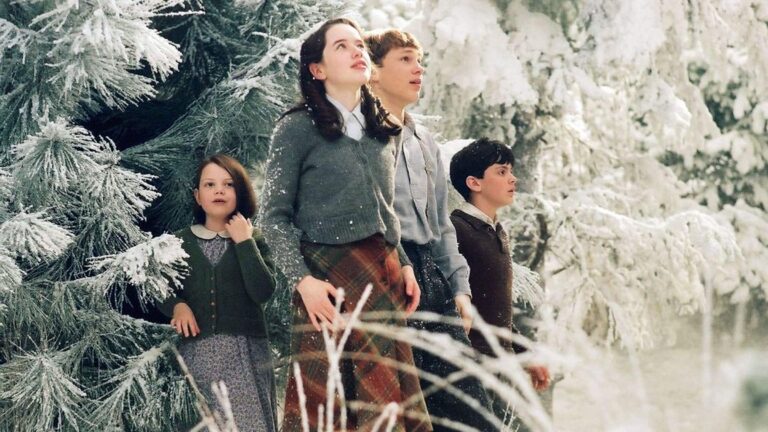
Get Our Newsletter!
Developing your own script.
We'll send you a list of our free eCourses when you subscribe to our newsletter. No strings attached.
You Might Also Like
- Hidden Name
- Name This field is for validation purposes and should be left unchanged.
Connect With Us
Writing competitions, success stories.
© 2024 ScreenCraft | An Industry Arts Company
- Features for Creative Writers
- Features for Work
- Features for Higher Education
- Features for Teachers
- Features for Non-Native Speakers
- Learn Blog Grammar Guide Community Events FAQ
- Grammar Guide
Hero's Journey 101: How to Use the Hero's Journey to Plot Your Story

Dan Schriever

How many times have you heard this story? A protagonist is suddenly whisked away from their ordinary life and embarks on a grand adventure. Along the way they make new friends, confront perils, and face tests of character. In the end, evil is defeated, and the hero returns home a changed person.
That’s the Hero’s Journey in a nutshell. It probably sounds very familiar—and rightly so: the Hero’s Journey aspires to be the universal story, or monomyth, a narrative pattern deeply ingrained in literature and culture. Whether in books, movies, television, or folklore, chances are you’ve encountered many examples of the Hero’s Journey in the wild.
In this post, we’ll walk through the elements of the Hero’s Journey step by step. We’ll also study an archetypal example from the movie The Matrix (1999). Once you have mastered the beats of this narrative template, you’ll be ready to put your very own spin on it.
Sound good? Then let’s cross the threshold and let the journey begin.
What Is the Hero’s Journey?
The 12 stages of the hero’s journey, writing your own hero’s journey.
The Hero’s Journey is a common story structure for modeling both plot points and character development. A protagonist embarks on an adventure into the unknown. They learn lessons, overcome adversity, defeat evil, and return home transformed.

Joseph Campbell , a scholar of literature, popularized the monomyth in his influential work The Hero With a Thousand Faces (1949). Looking for common patterns in mythological narratives, Campbell described a character arc with 17 total stages, overlaid on a more traditional three-act structure. Not all need be present in every myth or in the same order.
The three stages, or acts, of Campbell’s Hero’s Journey are as follows:
1. Departure. The hero leaves the ordinary world behind.
2. Initiation. The hero ventures into the unknown ("the Special World") and overcomes various obstacles and challenges.
3. Return. The hero returns in triumph to the familiar world.
Hollywood has embraced Campbell’s structure, most famously in George Lucas’s Star Wars movies. There are countless examples in books, music, and video games, from fantasy epics and Disney films to sports movies.
In The Writer’s Journey: Mythic Structure for Writers (1992), screenwriter Christopher Vogler adapted Campbell’s three phases into the "12 Stages of the Hero’s Journey." This is the version we’ll analyze in the next section.

For writers, the purpose of the Hero’s Journey is to act as a template and guide. It’s not a rigid formula that your plot must follow beat by beat. Indeed, there are good reasons to deviate—not least of which is that this structure has become so ubiquitous.
Still, it’s helpful to master the rules before deciding when and how to break them. The 12 steps of the Hero's Journey are as follows :
- The Ordinary World
- The Call of Adventure
- Refusal of the Call
- Meeting the Mentor
- Crossing the First Threshold
- Tests, Allies, and Enemies
- Approach to the Inmost Cave
- Reward (Seizing the Sword)
- The Road Back
- Resurrection
- Return with the Elixir
Let’s take a look at each stage in more detail. To show you how the Hero’s Journey works in practice, we’ll also consider an example from the movie The Matrix (1999). After all, what blog has not been improved by a little Keanu Reeves?

#1: The Ordinary World
This is where we meet our hero, although the journey has not yet begun: first, we need to establish the status quo by showing the hero living their ordinary, mundane life.
It’s important to lay the groundwork in this opening stage, before the journey begins. It lets readers identify with the hero as just a regular person, “normal” like the rest of us. Yes, there may be a big problem somewhere out there, but the hero at this stage has very limited awareness of it.
The Ordinary World in The Matrix :
We are introduced to Thomas A. Anderson, aka Neo, programmer by day, hacker by night. While Neo runs a side operation selling illicit software, Thomas Anderson lives the most mundane life imaginable: he works at his cubicle, pays his taxes, and helps the landlady carry out her garbage.
#2: The Call to Adventure
The journey proper begins with a call to adventure—something that disrupts the hero’s ordinary life and confronts them with a problem or challenge they can’t ignore. This can take many different forms.
While readers may already understand the stakes, the hero is realizing them for the first time. They must make a choice: will they shrink from the call, or rise to the challenge?
The Call to Adventure in The Matrix :
A mysterious message arrives in Neo’s computer, warning him that things are not as they seem. He is urged to “follow the white rabbit.” At a nightclub, he meets Trinity, who tells him to seek Morpheus.
#3: Refusal of the Call
Oops! The hero chooses option A and attempts to refuse the call to adventure. This could be for any number of reasons: fear, disbelief, a sense of inadequacy, or plain unwillingness to make the sacrifices that are required.
A little reluctance here is understandable. If you were asked to trade the comforts of home for a life-and-death journey fraught with peril, wouldn’t you give pause?
Refusal of the Call in The Matrix :
Agents arrive at Neo’s office to arrest him. Morpheus urges Neo to escape by climbing out a skyscraper window. “I can’t do this… This is crazy!” Neo protests as he backs off the ledge.

#4: Meeting the Mentor
Okay, so the hero got cold feet. Nothing a little pep talk can’t fix! The mentor figure appears at this point to give the hero some much needed counsel, coaching, and perhaps a kick out the door.
After all, the hero is very inexperienced at this point. They’re going to need help to avoid disaster or, worse, death. The mentor’s role is to overcome the hero’s reluctance and prepare them for what lies ahead.
Meeting the Mentor in The Matrix :
Neo meets with Morpheus, who reveals a terrifying truth: that the ordinary world as we know it is a computer simulation designed to enslave humanity to machines.
#5: Crossing the First Threshold
At this juncture, the hero is ready to leave their ordinary world for the first time. With the mentor’s help, they are committed to the journey and ready to step across the threshold into the special world . This marks the end of the departure act and the beginning of the adventure in earnest.
This may seem inevitable, but for the hero it represents an important choice. Once the threshold is crossed, there’s no going back. Bilbo Baggins put it nicely: “It’s a dangerous business, Frodo, going out your door. You step onto the road, and if you don't keep your feet, there's no knowing where you might be swept off to.”
Crossing the First Threshold in The Matrix :
Neo is offered a stark choice: take the blue pill and return to his ordinary life none the wiser, or take the red pill and “see how deep the rabbit hole goes.” Neo takes the red pill and is extracted from the Matrix, entering the real world .
#6: Tests, Allies, and Enemies
Now we are getting into the meat of the adventure. The hero steps into the special world and must learn the new rules of an unfamiliar setting while navigating trials, tribulations, and tests of will. New characters are often introduced here, and the hero must navigate their relationships with them. Will they be friend, foe, or something in between?
Broadly speaking, this is a time of experimentation and growth. It is also one of the longest stages of the journey, as the hero learns the lay of the land and defines their relationship to other characters.
Wondering how to create captivating characters? Read our guide , which explains how to shape characters that readers will love—or hate.
Tests, Allies, and Enemies in The Matrix :
Neo is introduced to the vagabond crew of the Nebuchadnezzar . Morpheus informs Neo that he is The One , a savior destined to liberate humanity. He learns jiu jitsu and other useful skills.
#7: Approach to the Inmost Cave

Time to get a little metaphorical. The inmost cave isn’t a physical cave, but rather a place of great danger—indeed, the most dangerous place in the special world . It could be a villain’s lair, an impending battle, or even a mental barrier. No spelunking required.
Broadly speaking, the approach is marked by a setback in the quest. It becomes a lesson in persistence, where the hero must reckon with failure, change their mindset, or try new ideas.
Note that the hero hasn’t entered the cave just yet. This stage is about the approach itself, which the hero must navigate to get closer to their ultimate goal. The stakes are rising, and failure is no longer an option.
Approach to the Inmost Cave in The Matrix :
Neo pays a visit to The Oracle. She challenges Neo to “know thyself”—does he believe, deep down, that he is The One ? Or does he fear that he is “just another guy”? She warns him that the fate of humanity hangs in the balance.
#8: The Ordeal
The ordeal marks the hero’s greatest test thus far. This is a dark time for them: indeed, Campbell refers to it as the “belly of the whale.” The hero experiences a major hurdle or obstacle, which causes them to hit rock bottom.
This is a pivotal moment in the story, the main event of the second act. It is time for the hero to come face to face with their greatest fear. It will take all their skills to survive this life-or-death crisis. Should they succeed, they will emerge from the ordeal transformed.
Keep in mind: the story isn’t over yet! Rather, the ordeal is the moment when the protagonist overcomes their weaknesses and truly steps into the title of hero .
The Ordeal in The Matrix :
When Cipher betrays the crew to the agents, Morpheus sacrifices himself to protect Neo. In turn, Neo makes his own choice: to risk his life in a daring rescue attempt.
#9: Reward (Seizing the Sword)
The ordeal was a major level-up moment for the hero. Now that it's been overcome, the hero can reap the reward of success. This reward could be an object, a skill, or knowledge—whatever it is that the hero has been struggling toward. At last, the sword is within their grasp.
From this moment on, the hero is a changed person. They are now equipped for the final conflict, even if they don’t fully realize it yet.
Reward (Seizing the Sword) in The Matrix :
Neo’s reward is helpfully narrated by Morpheus during the rescue effort: “He is beginning to believe.” Neo has gained confidence that he can fight the machines, and he won’t back down from his destiny.

#10: The Road Back
We’re now at the beginning of act three, the return . With the reward in hand, it’s time to exit the inmost cave and head home. But the story isn’t over yet.
In this stage, the hero reckons with the consequences of act two. The ordeal was a success, but things have changed now. Perhaps the dragon, robbed of his treasure, sets off for revenge. Perhaps there are more enemies to fight. Whatever the obstacle, the hero must face them before their journey is complete.
The Road Back in The Matrix :
The rescue of Morpheus has enraged Agent Smith, who intercepts Neo before he can return to the Nebuchadnezzar . The two foes battle in a subway station, where Neo’s skills are pushed to their limit.
#11: Resurrection
Now comes the true climax of the story. This is the hero’s final test, when everything is at stake: the battle for the soul of Gotham, the final chance for evil to triumph. The hero is also at the peak of their powers. A happy ending is within sight, should they succeed.
Vogler calls the resurrection stage the hero’s “final exam.” They must draw on everything they have learned and prove again that they have really internalized the lessons of the ordeal . Near-death escapes are not uncommon here, or even literal deaths and resurrections.
Resurrection in The Matrix :
Despite fighting valiantly, Neo is defeated by Agent Smith and killed. But with Trinity’s help, he is resurrected, activating his full powers as The One . Isn’t it wonderful how literal The Matrix can be?
#12: Return with the Elixir
Hooray! Evil has been defeated and the hero is transformed. It’s time for the protagonist to return home in triumph, and share their hard-won prize with the ordinary world . This prize is the elixir —the object, skill, or insight that was the hero’s true reward for their journey and transformation.
Return with the Elixir in The Matrix :
Neo has defeated the agents and embraced his destiny. He returns to the simulated world of the Matrix, this time armed with god-like powers and a resolve to open humanity’s eyes to the truth.

If you’re writing your own adventure, you may be wondering: should I follow the Hero’s Journey structure?
The good news is, it’s totally up to you. Joseph Campbell conceived of the monomyth as a way to understand universal story structure, but there are many ways to outline a novel. Feel free to play around within its confines, adapt it across different media, and disrupt reader expectations. It’s like Morpheus says: “Some of these rules can be bent. Others can be broken.”
Think of the Hero’s Journey as a tool. If you’re not sure where your story should go next, it can help to refer back to the basics. From there, you’re free to choose your own adventure.
Are you prepared to write your novel? Download this free book now:

The Novel-Writing Training Plan
So you are ready to write your novel. excellent. but are you prepared the last thing you want when you sit down to write your first draft is to lose momentum., this guide helps you work out your narrative arc, plan out your key plot points, flesh out your characters, and begin to build your world..

Be confident about grammar
Check every email, essay, or story for grammar mistakes. Fix them before you press send.
Dan holds a PhD from Yale University and CEO of FaithlessMTG
Get started with ProWritingAid
Drop us a line or let's stay in touch via :
- Story Writing Guides
12 Hero’s Journey Stages Explained (+ Free Templates)
From zero to hero, the hero’s journey is a popular character development arc used in many stories. In today’s post, we will explain the 12 hero’s journey stages, along with the simple example of Cinderella.
The Hero’s Journey was originally formulated by American writer Joseph Campbell to describe the typical character arc of many classic stories, particularly in the context of mythology and folklore. The original hero’s journey contained 17 steps. Although the hero’s journey has been adapted since then for use in modern fiction, the concept is not limited to literature. It can be applied to any story, video game, film or even music that features an archetypal hero who undergoes a transformation. Common examples of the hero’s journey in popular works include Star Wars, Lord of the Rings, The Hunger Games and Harry Potter and the Philosopher’s Stone.
- What is the hero's journey?
Stage 1: The Ordinary World
Stage 2: call of adventure, stage 3: refusal of the call, stage 4: meeting the mentor, stage 5: crossing the threshold, stage 6: tests, allies, enemies, stage 7: the approach, stage 8: the ordeal, stage 9: reward, stage 10: the road back, stage 11: resurrection, stage 12: return with the elixir, cinderella example, campbell’s 17-step journey, leeming’s 8-step journey, cousineau’s 8-step journey.
- Free Hero's Journey Templates
What is the hero’s journey?
The hero’s journey, also known as the monomyth, is a character arc used in many stories. The idea behind it is that heroes undergo a journey that leads them to find their true selves. This is often represented in a series of stages. There are typically 12 stages to the hero’s journey. Each stage represents a change in the hero’s mindset or attitude, which is triggered by an external or internal event. These events cause the hero to overcome a challenge, reach a threshold, and then return to a normal life.
The hero’s journey is a powerful tool for understanding your characters. It can help you decide who they are, what they want, where they came from, and how they will change over time. It can be used to
- Understand the challenges your characters will face
- Understand how your characters react to those challenges
- Help develop your characters’ traits and relationships

In this post, we will explain each stage of the hero’s journey, using the example of Cinderella.
You might also be interested in our post on the story mountain or this guide on how to outline a book .
12 Hero’s Journey Stages
The archetypal hero’s journey contains 12 stages and was created by Christopher Vogler. These steps take your main character through an epic struggle that leads to their ultimate triumph or demise. While these steps may seem formulaic at first glance, they actually form a very flexible structure. The hero’s journey is about transformation, not perfection.
Your hero starts out in the ordinary world. He or she is just like every other person in their environment, doing things that are normal for them and experiencing the same struggles and challenges as everyone else. In the ordinary world, the hero feels stuck and confused, so he or she goes on a quest to find a way out of this predicament.
Example: Cinderella’s father passes away and she is now stuck doing chores and taking abuse from her stepsisters and stepmother.
The hero gets his or her first taste of adventure when the call comes. This could be in the form of an encounter with a stranger or someone they know who encourages them to take a leap of faith. This encounter is typically an accident, a series of coincidences that put the hero in the right place at the right time.
Example: An invite arrives inviting the family to a royal ball where the Prince will choose a wife.
Some people will refuse to leave their safe surroundings and live by their own rules. The hero has to overcome the negative influences in order to hear the call again. They also have to deal with any personal doubts that arise from thinking too much about the potential dangers involved in the quest. It is common for the hero to deny their own abilities in this stage and to lack confidence in themselves.
Example: Cinderella accepts the call by making her own dress for the ball. However, her stepmother refuses the call for her by not letting her go to the ball. And her step-sisters ruin her dress, so she can not go.
After hearing the call, the hero begins a relationship with a mentor who helps them learn about themselves and the world. In some cases, the mentor may be someone the hero already knows. The mentor is usually someone who is well-versed in the knowledge that the hero needs to acquire, but who does not judge the hero for their lack of experience.
Example: Cinderella meets her fairy godmother who equips her with everything she needs for the ball, including a dress and a carriage.
The hero leaves their old life behind and enters the unfamiliar new world. The crossing of the threshold symbolises leaving their old self behind and becoming a new person. Sometimes this can include learning a new skill or changing their physical appearance. It can also include a time of wandering, which is an essential part of the hero’s journey.
Example: Cinderella hops into the carriage and heads off to the ball. She has transformed from a servant into an elegant young lady.
As the hero goes on this journey, they will meet both allies (people who help the hero) and enemies (people who try to stop the hero). There will also be tests, where the hero is tempted to quit, turn back, or become discouraged. The hero must be persistent and resilient to overcome challenges.
Example: At the ball, Cinderella meets the prince, and even see’s her stepmother and stepsister. She dances with Prince all night long making her step-sisters extremely jealous.
The hero now reaches the destination of their journey, in some cases, this is a literal location, such as a cave or castle. It could also be metaphorical, such as the hero having an internal conflict or having to make a difficult decision. In either case, the hero has to confront their deepest fears in this stage with bravery. In some ways, this stage can mark the end of the hero’s journey because the hero must now face their darkest fears and bring them under control. If they do not do this, the hero could be defeated in the final battle and will fail the story.
Example: Cinderella is having a great time at the ball and nearly forgets about the midnight rule. As she runs away in a hurry, her glass slipper falls off outside the palace.
The hero has made it to the final challenge of their journey and now must face all odds and defeat their greatest adversary. Consider this the climax of the story. This could be in the form of a physical battle, a moral dilemma or even an emotional challenge. The hero will look to their allies or mentor for further support and guidance in this ordeal. Whatever happens in this stage could change the rest of the story, either for good or bad.
Example: Prince Charming looks all over the kingdom for the mysterious girl he met at the ball. He finally visits Cinderella’s house and tries the slippers on the step-sisters. The prince is about to leave and then he sees Cinderella in the corner cleaning.
When the hero has defeated the most powerful and dangerous of adversaries, they will receive their reward. This reward could be an object, a new relationship or even a new piece of knowledge. The reward, which typically comes as a result of the hero’s perseverance and hard work, signifies the end of their journey. Given that the hero has accomplished their goal and served their purpose, it is a time of great success and accomplishment.
Example: The prince tries the glass slipper on Cinderella. The glass slipper fits Cinderella perfectly, and they fall in love.
The journey is now complete, and the hero is now heading back home. As the hero considers their journey and reflects on the lessons they learned along the way, the road back is sometimes marked by a sense of nostalgia or even regret. As they must find their way back to the normal world and reintegrate into their former life, the hero may encounter additional difficulties or tests along the way. It is common for the hero to run into previous adversaries or challenges they believed they had overcome.
Example: Cinderella and Prince Charming head back to the Prince’s castle to get married.
The hero has one final battle to face. At this stage, the hero might have to fight to the death against a much more powerful foe. The hero might even be confronted with their own mortality or their greatest fear. This is usually when the hero’s true personality emerges. This stage is normally symbolised by the hero rising from the dark place and fighting back. This dark place could again be a physical location, such as the underground or a dark cave. It might even be a dark, mental state, such as depression. As the hero rises again, they might change physically or even experience an emotional transformation.
Example: Cinderella is reborn as a princess. She once again feels the love and happiness that she felt when she was a little girl living with her father.
At the end of the story, the hero returns to the ordinary world and shares the knowledge gained in their journey with their fellow man. This can be done by imparting some form of wisdom, an object of great value or by bringing about a social revolution. In all cases, the hero returns changed and often wiser.
Example: Cinderella and Prince Charming live happily ever after. She uses her new role to punish her stepmother and stepsisters and to revitalise the kingdom.
We have used the example of Cinderella in Vogler’s hero’s journey model below:

Below we have briefly explained the other variations of the hero’s journey arc.
The very first hero’s journey arc was created by Joseph Campbell in 1949. It contained the following 17 steps:
- The Call to Adventure: The hero receives a call or a reason to go on a journey.
- Refusal of the Call: The hero does not accept the quest. They worry about their own abilities or fear the journey itself.
- Supernatural Aid: Someone (the mentor) comes to help the hero and they have supernatural powers, which are usually magical.
- The Crossing of the First Threshold: A symbolic boundary is crossed by the hero, often after a test.
- Belly of the Whale: The point where the hero has the most difficulty making it through.
- The Road of Trials: In this step, the hero will be tempted and tested by the outside world, with a number of negative experiences.
- The Meeting with the Goddess: The hero meets someone who can give them the knowledge, power or even items for the journey ahead.
- Woman as the Temptress: The hero is tempted to go back home or return to their old ways.
- Atonement with the Father: The hero has to make amends for any wrongdoings they may have done in the past. They need to confront whatever holds them back.
- Apotheosis: The hero gains some powerful knowledge or grows to a higher level.
- The Ultimate Boon: The ultimate boon is the reward for completing all the trials of the quest. The hero achieves their ultimate goal and feels powerful.
- Refusal of the Return: After collecting their reward, the hero refuses to return to normal life. They want to continue living like gods.
- The Magic Flight: The hero escapes with the reward in hand.
- Rescue from Without: The hero has been hurt and needs help from their allies or guides.
- The Crossing of the Return Threshold: The hero must come back and learn to integrate with the ordinary world once again.
- Master of the Two Worlds: The hero shares their wisdom or gifts with the ordinary world. Learning to live in both worlds.
- Freedom to Live: The hero accepts the new version of themselves and lives happily without fear.
David Adams Leeming later adapted the hero’s journey based on his research of legendary heroes found in mythology. He noted the following steps as a pattern that all heroes in stories follow:
- Miraculous conception and birth: This is the first trauma that the hero has to deal with. The Hero is often an orphan or abandoned child and therefore faces many hardships early on in life.
- Initiation of the hero-child: The child faces their first major challenge. At this point, the challenge is normally won with assistance from someone else.
- Withdrawal from family or community: The hero runs away and is tempted by negative forces.
- Trial and quest: A quest finds the hero giving them an opportunity to prove themselves.
- Death: The hero fails and is left near death or actually does die.
- Descent into the underworld: The hero rises again from death or their near-death experience.
- Resurrection and rebirth: The hero learns from the errors of their way and is reborn into a better, wiser being.
- Ascension, apotheosis, and atonement: The hero gains some powerful knowledge or grows to a higher level (sometimes a god-like level).
In 1990, Phil Cousineau further adapted the hero’s journey by simplifying the steps from Campbell’s model and rearranging them slightly to suit his own findings of heroes in literature. Again Cousineau’s hero’s journey included 8 steps:
- The call to adventure: The hero must have a reason to go on an adventure.
- The road of trials: The hero undergoes a number of tests that help them to transform.
- The vision quest: Through the quest, the hero learns the errors of their ways and has a realisation of something.
- The meeting with the goddess: To help the hero someone helps them by giving them some knowledge, power or even items for the journey ahead.
- The boon: This is the reward for completing the journey.
- The magic flight: The hero must escape, as the reward is attached to something terrible.
- The return threshold: The hero must learn to live back in the ordinary world.
- The master of two worlds: The hero shares their knowledge with the ordinary world and learns to live in both worlds.
As you can see, every version of the hero’s journey is about the main character showing great levels of transformation. Their journey may start and end at the same location, but they have personally evolved as a character in your story. Once a weakling, they now possess the knowledge and skill set to protect their world if needed.
Free Hero’s Journey Templates
Use the free Hero’s journey templates below to practice the skills you learned in this guide! You can either draw or write notes in each of the scene boxes. Once the template is complete, you will have a better idea of how your main character or the hero of your story develops over time:
The storyboard template below is a great way to develop your main character and organise your story:

Did you find this guide on the hero’s journey stages useful? Let us know in the comments below.

Marty the wizard is the master of Imagine Forest. When he's not reading a ton of books or writing some of his own tales, he loves to be surrounded by the magical creatures that live in Imagine Forest. While living in his tree house he has devoted his time to helping children around the world with their writing skills and creativity.
Related Posts
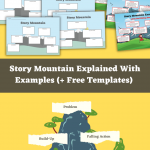
Comments loading...
The Eight Character Archetypes of the Hero’s Journey

Classic trickster.
In The Hero of a Thousand Faces , Joseph Campbell demonstrated that many of the most popular stories, even over thousands of years and across cultures, shared a specific formula. That formula is now commonly referred to as mythic structure, or the hero’s journey . Even if you’ve never heard of it before, you’ve consumed this “ monomyth ” in works like Star Wars and Harry Potter.
Along with a specific plot structure, the hero’s journey has a repeating cast of characters, known as character archetypes. An archetype doesn’t specify a character’s age, race, or gender. In fact, it’s best to avoid stereotyping by steering clear of the demographics people associate with them. What archetypes really do is tell us the role a character plays in the story. Thinking about your characters in terms of their archetype will allow you to see whether they’re pulling their weight, or if they’re useless extras.
There are many way to categorize the cast of the hero’s journey, but most central characters fall into one of these eight roles:

The hero is the audience’s personal tour guide on the adventure that is the story. It’s critical that the audience can relate to them, because they experience the story through their eyes. During the journey, the hero will leave the world they are familiar with and enter a new one. This new world will be so different that whatever skills the hero used previously will no longer be sufficient. Together, the hero and the audience will master the rules of the new world, and save the day.
J is the heroic tour guide in Men in Black . A cop at the top of his beat, he is suddenly taken behind the masquerade of everyday life. Waiting for him is a world where aliens are hiding among everyday people, and a galaxy can be as small as a marble. While he’s still a cop in essence, his adversaries – and the tools he must wield against them – are nothing like he’s previously known.
Other heroes: any protagonist fits the hero role. Some heroes from stories that stick closely to the hero’s journey are Dorothy from The Wizard of Oz, Alice from Alice in Wonderland, and Luke Skywalker from Star Wars.

The hero has to learn how to survive in the new world incredibly fast, so the mentor appears to give them a fighting chance. This mentor will describe how the new world operates, and instruct the hero in using any innate abilities they possess. The mentor will also gift the hero with equipment, because a level one hero never has any decent weapons or armor.
Glinda the Good Witch from The Wizard of Oz appears soon after Dorothy enters Oz. She describes where Dorothy is, and explains that she’s just killed the Wicked Witch of the East. Then, before the Wicked Witch of the West can claim the ruby slippers, Glinda gifts them to the hero instead.
Often, the mentor will perform another important task – getting the plot moving. Heros can be reluctant to leave the world they know for one they don’t. Glinda tells Dorothy to seek the Wizard, and shows her the yellow brick road.
Once the hero is on the right path and has what they need to survive, the mentor disappears. Heroes must fight without their help.
Other mentors: Morpheus from the Matrix, Dumbledore from Harry Potter, and Tia Dalma from Pirates of the Caribbean 2 and 3.

The hero will have some great challenges ahead; too great for one person to face them alone. They’ll need someone to distract the guards, hack into the mainframe, or carry their gear. Plus, the journey could get a little dull without another character to interact with.
Like many allies, Samwise looks up to Frodo in The Lord of the Rings . He starts the story as a gardener, joining the group almost by accident. He feels it’s his job to keep Frodo safe. But not all allies start that way. They can be more like Han Solo, disagreeable at first, then friendly once the hero earns their respect. Either way, the loyalty and admiration allies have for the hero tells the audience that they are worthy of the trials ahead.
Other allies: Robin from Batman, Ron and Hermione from Harry Potter, and the Tin Man from The Wizard of Oz.

The herald appears near the beginning to announce the need for change in the hero’s life. They are the catalyst that sets the whole adventure in motion. While they often bring news of a threat in a distant land, they can also simply show a dissatisfied hero a tempting glimpse of a new life. Occasionally they single the hero out, picking them for a journey they wouldn’t otherwise take.
The great boar demon that appears at the beginning of Princess Mononoke is a herald bearing the scars of a faraway war. Ashitaka defeats him, but not without receiving a mark that sends him into banishment. This gets the hero moving and foreshadows the challenges he will face.
Heralds that do not fill another role will appear only briefly. Often, the herald isn’t a character at all, but a letter or invitation.
Other heralds: Effie from the Hunger Games, R2D2 from Star Wars, and the invitation to the ball in Cinderella.
5. Trickster

The trickster adds fun and humor to the story. When times are gloomy or emotionally tense, the trickster gives the audience a welcome break. Often, the trickster has another job: challenging the status quo. A good trickster offers an outside perspective and opens up important questions. They’re also great for lampshading the story or the actions of the other characters.
Dobby from Harry Potter is an ideal trickster. He means well, but his efforts to help Harry Potter do more harm than good. And every time he appears in person, his behavior is ridiculous. However, underlying the humorous exterior is a serious issue – Dobby is a slave, and he wants to be free of his masters.
Other tricksters: Luna Lovegood (also from Harry Potter), Crewman #6 from Galaxy Quest, and Merry and Pippin from LoTR.
6. Shapeshifter

The shapeshifter blurs the line between ally and enemy. Often they begin as an ally, then betray the hero at a critical moment. Other times, their loyalty is in question as they waver back and forth. Regardless, they provide a tantalizing combination of appeal and possible danger. Shapeshifters benefit stories by creating interesting relationships among the characters, and by adding tension to scenes filled with allies.
Dr. Elsa Schneider, from Indiana Jones and the Last Crusade , is a very effective shapeshifter. Even after she reveals she is working for the enemy, she and the hero still have feelings for each other. She allows him to steal an item back without getting caught, and he allows her to discover the McGuffin with him. But the distrust between them remains.
Other shapeshifters: Gollum from LoTR, Catwoman from Batman, and Gilderoy Lockhart from Harry Potter.
7. Guardian

The guardian, or threshold guardian, tests the hero before they face great challenges. They can appear at any stage of the story, but they always block an entrance or border of some kind. Their message to the hero is clear: “go home and forget your quest.” They also have a message for the audience: “this way lies danger.” Then the hero must prove their worth by answering a riddle, sneaking past, or defeating the guardian in combat.
The Wall Guard in Stardust is as classic as guardians get. He stands alone at a broken section of stone wall between real world England and the fairy realm of Stormhold. The guard is friendly when Tristan tries to pass into the fairy realm to start his adventure, but he carries a big stick and he’s not afraid to use it.
Other guardians: The Doorknob from Alice in Wonderland, the Black Knight from Monty Python and the Holy Grail, Heimdall from Thor.

Shadows are villains in the story. They exist to create threat and conflict, and to give the hero something to struggle against. Like many of the other archetypes, shadows do not have to be characters specifically – the dark side of the force is just as much a shadow for Luke as Darth Vader is.
The shadow is especially effective if it mirrors the hero in some way. It shows the audience the twisted person the hero could become if they head down the wrong path, and highlights the hero’s internal struggle. This, in turn, makes the hero’s success more meaningful. The reveal that Darth Vader is Luke’s father, right after Luke had ignored Yoda’s advice, makes the dark side feel more threatening.
Other shadows: Voldemort from Harry Potter, Sauron from LoTR, and Maleficent from Sleeping Beauty.
It’s unusual for stories to have exactly one character per archetype. Because archetypes are simply roles a character can take, Obi Won and Yoda can both be mentors, J can be a hero and a trickster, and Effie Trinket can be first a herald, then later an ally. While you shouldn’t rush to add archetypes that are missing, any character that fits more than one is probably important to the story. If you have a character that doesn’t fit any, make sure they are strengthening, and not detracting from, your plot.
Learn More About These Archetypes

P.S. Our bills are paid by our wonderful patrons. Could you chip in?
More in Character Archetypes
Episode 459: chosen ones: classic or cliché.

Six Character Archetypes for Villains

Four Supporting Characters Your Hero Can Learn From

Six Character Archetypes for Sidekicks

Five Arab and Muslim Stereotypes to Avoid
Ayman Jaber Urban Fantasy Writer and Marvel Connoisseur.
Your patronage keeps this site running. Become a patron.
Recent Articles in Storytelling

Making Your Character’s Choices Fit Their Personality

Three Ways to Give Your Romance a Tense Throughline

How to Create Atmosphere in Your Writing

How to Turn Your Concept Into a Story

Six Tips for a Fish-out-of-Water Hero
Recent comments.
Oren Ashkenazi
SunlessNick
Love Mythcreants?
Be our patron.
Join our community for special perks.
Comments on The Eight Character Archetypes of the Hero’s Journey
Thanks for this great guide!!
Thank you, very informative. Gives a better understanding on how to create a story and “important” NPCs.
Like your name. :)
I like your name
I have a question. In Disney’s/ABC’s Once Upon a Time would you consider Rumplestiltskin/The Dark One to be a Trickster or a Shapeshifter? He’s not a ‘true’ villain though the writer’s class him as a villain. He’s way too complicated to just be a villain!!! He does evil things, bad things, neutral things and sometimes good things, but he keeps changing back and forth. He has the ability to love (his son and his wife Belle) but he ALWAYS puts power above them (it’s more important to him than his son or wife). I always thought of him as ‘the Trickster’ but when I read your description of the Shapeshifter it started me thinking again! hmmmmmm
I haven’t watched enough Once Upon a Time to tell you for sure based on my personal knowledge of Rumplestiltskin, but if he is often working together with the good guys but is liable to betray them or do other bad things, he’s probably a shapeshifter. Tricksters almost always provide comic relief. In the few episodes I watched, it did not look like Rumplestiltskin was a comical character.
However, because the archetypes are roles, characters can have more than one or change what they are. It sounds like sometimes when he is doing especially bad things, he might be a Shadow temporarily.
Shapeshifter
Dianne its a very good question but its really what you think he is.he is apart of many difrent grous and some arnt on this site . The most common thing ppl think he is is a villan but it really isnt like that at all but its up to you. hope i help . sincerely wesh
Would I be right in saying that Magneto in X-Men would be considered a shapeshifter?
Based on my very crude knowledge of X-Men, Magneto is mostly a shadow. Like a good shadow, he is a dark reflection of Professor X. However, he also takes on the role of shapeshifter during their temporary alliances.
No no, the shapeshifter is Mystique. ;)
HA! Good one :D
She can turn into other people, too, so, in literal sense, she is one. I think Chris was talking figuratively.
You’re Welcome!!!!!!!!!!
Msytique es da best chicka in da world mahhh boi
dont do drugs kids
bahahahahah
The description of the shadow is a little misleading. He is not the antagonist, and not evil. He mirrors the side of the hero that he/she is not aware of, but must acknowledge in order to continue and be sucessful on his/her journey.
The Star Wars example with the cave sets it: Yes, Darth Vader is evil (he is antagonist and shadow all in one), but he is also Lukes father. Therefore, he wasn´t always evil. Luke knows this.
A great example for a shadow in film are the two girls in American Beauty. Angela is Janes Shadow. She represents everything that Jane must leave behind in order to get on with her life, find her destiny etc. But Angela is not evil. She is a rather normal teenager. She is Janes friend.
Interesting approach :) (I’m not being ironic)
Usually, shadows are antagonists.
I’m not super familiar with American Beauty, so I could be totally wrong on this, but it sounds like the character dynamic you are describing is the use of a foil. A foil is character who starkly contrasts with attributes of a character (nearly always the main character) in order to highlight certain attributes of a character.
The Shadow is most definitely the opposing force in a literary work. It is true that the shadow – when it is a character – is most effective if it is also a foil of the protagonist as this helps to illustrate how the hero’s conflict is as much internal as external, but existing expressly to mirror the hero in some way is not a defining feature of the shadow.
The villain of American Beauty is societal pressure to be “normal” and the havoc it wreaks on people who are unique and special.
All the characters in the movie in some way rebel against that pressure, some prevail and others are destroyed.
It would be interesting to think up ways to realign quest stories to make different figures the protagonist. Like, say, in the Matrix, they really had me going that Neo wasn’t the one – I thought it would turn out to be Morpheus. Which would mean we were seeing Morpheus’s Hero journey through the eyes of one of his last Guardians (the obstacle preventing Morpheus seeing the Hero he sought was himself).
That would have been really cool. Nobody thinks of themselves as the hero (no competent person anyway). And it would fit perfectly with the Oracle telling Trinity that she would love The One, because love can also be fraternal.
I have only a secondary knowledge of Science Fiction and mythical creatures, gleaned from sitting with my husband and son when they watch shows in the same room with me. I found your page very informative, interesting, and helpful so that I may understand what I am watching Sci-Fi shows or shows about mythology with my family. Thank you.
Thanks for this article! I am actually a sculptor building a portfolio for character modeling. I was told by an industry recruiter to include different archetypes. For the longest time I only vaguely knew what he meant until I read your post. Currently reading the recommended book – excellent by the way! – which I see is the industry bible on this subject. I now have a much clearer picture on what direction to take my work! I also am now starting to see the types as I watch and read things. Great article :-)
I actually feel like Snape is a better example of the shapeshifter than Lockhart.
Good point. He’s always portrayed as evil … up until the end, when you see he was on the other side the whole time.
Zuko from Avatar the Last Airbender seems to be a perfect shapeshifter to me.
Yes. The most common form of the shapeshifter is one who begins as Ally and betrays the hero, but a character taking the inverse course of action is also an example of a shapeshifter. What defines the shapeshifter is that there is at least a key moment where the audience is left to wonder for themselves if the character is friend or foe. Zuko is also a wonderfully written character who undergoes a Heroes quest of his own with Iroh serving as his mentor and Azula taking on the role of shadow. He can be viewed as many roles in series depending on which part of the series you are thinking about.
Sir Didimus (sp?) from Labyrinth would be a penultimate Guardian.
Welcome to the Mythcreants comment section, Jemma Caffyn!
p.s. You have the same name as my favorite scientist (a made-up spec fic scientist, of course)
what about a villian that goes from bad to good?
Unless somehow showing up as the shadow, redeemed villains are not part of Joseph Campbell’s monomyth. The overwhelming majority of myths and stories written before the romantic period had clear villains and heroes. Nietschze explained this by saying that all myths are morality tales; if people believe that there is a definite good and evil then it will be easier for them to accept anything their leaders do so long as their is a greater enemy. It is no coincidence that so many mythical heroes are of noble birth. It has even be argued that morally ambiguous characters are a feature of democracy ( https://www.theatlantic.com/entertainment/archive/2017/03/whats-so-american-about-john-miltons-lucifer/519624/ ).
If you are interested in redeemed villains, this blog has an article and a podcast about them: https://mythcreants.com/blog/creating-your-villains-journey/ https://mythcreants.com/blog/122-redeeming-a-villain/
Can the Drayo State feasibly be attained by a character who doesn’t just confront his or her shadow but cannibalises it and therefore digests the darker side of his or her own nature? Asking for a friend.
Well, first of all, what is the “Drayo State”?
Fantastically useful site & not just for sf & fantasy writers. I’ve learned such a lot. Thanks!
i agree, very useful.
Thanks for helping me do my homework!
Archetypes are kind of like personas in life in general.
Leave a Reply Cancel reply
Email * (will not be made public)

IMAGES
VIDEO
COMMENTS
Illustration of the hero's journey. In narratology and comparative mythology, the hero's journey, also known as the monomyth, is the common template of stories that involve a hero who goes on an adventure, is victorious in a decisive crisis, and comes home changed or transformed.. Earlier figures had proposed similar concepts, including psychoanalyst Otto Rank and amateur anthropologist Lord ...
Joseph Campbell and the Hero's Journey. A hero ventures forth from the world of common day into a region of supernatural wonder: fabulous forces are there encountered and a decisive victory is won: the hero comes back from this mysterious adventure with the power to bestow boons on his fellow men. The Hero With A Thousand Faces 23.
In 1949, scholar Joseph Campbell published his 1st book, The Hero with a Thousand Faces. In this book, Campbell introduced us to his theory that myths from around the globe share a fundamental structure, the Monomyth. C ampbell formulated this theory over 5 years, spending 9 hours a day reading mythology from around the world.
The stages of the hero's journey are the common sequence of events that occurred in the monomyth motif. Technically speaking, Campbell outlined 17 stages in his The Hero with a Thousand Faces: 1: The Call to Adventure. 2: Refusal of the Call. 3: Supernatural Aid.
Because Campbell discovered the Hero's Journey. He didn't make it up. Neither did those older myths. He realized as an anthropologist, that every culture all around the globe had the same story beats in all their myths. Sure, some myths, and some movies, use 10 of the 17, or even just 5. But throughout human history, around the world, these ...
The Hero's Journey, conceptualized by Joseph Campbell, isn't just a literary tool - it's the backbone of countless storytelling traditions. It has enabled writers and filmmakers to craft narratives that resonate deeply with audiences, regardless of cultural or temporal divides.
Campbell's own text, The Hero with a Thousand Faces, and then later in the 1980s through two documentaries, one of which introduced the term The Hero's Journey. The first documentary, 1987's The Hero's Journey: The World of Joseph Campbell, was released with an accompanying book entitled The Hero's Journey: Joseph
Joseph Campbell's Hero's Journey, while based on his study of mythology around the world, can be applied to more than just myth. In fact, it's applied to film frequently. One of the clearest examples of Campbell's Hero's Journey is none other than George Lucas's film Star Wars: A New Hope (1977). To this film we now turn.
Joseph Campbell, a literature professor at Sarah Lawrence College, wrote extensively about the Hero's Journey, most notably in his book The Hero with a Thousand Faces (published in 1949). He revealed how mythical traditions throughout the world—whether it be those of India, Greece or Egypt—follow a similar structure when it comes to the hero myth.
What is the Hero's Journey? The Hero's Journey was first described by Joseph Campbell. Campbell was an American professor of literature at Sarah Lawrence College. He wrote about the Hero's Journey in his book The Hero with a Thousand Faces. More than a guide, this book was a study on the fundamental structure of myths throughout history.
The Hero's Journey, as outlined by Campbell, emphasizes external challenges and a quest for physical or metaphorical treasures. In contrast, Murdock's Heroine's Journey, explores internal landscapes, focusing on personal reconciliation, emotional growth, and the path to self-actualization.
The author of Hero With a Thousand Faces, The Masks of God series, and The Power of Myth here turns his powers of observation and analysis on his own life's journey and conveys the excitement of his life-long exploration of mythic traditions, which he called "the one great story of mankind." In conversations with poets, anthropologists, and philosophers, Campbell reflects on subjects ranging ...
The hero's journey's circularity mimics the world's traditional compass : Life and death, order and chaos, consciousness and unconsciousness. The protagonist goes through several phases that take the action to the end, completing what's called the hero's journey arc: Their evolution. "The cave you fear to enter holds the treasure ...
Joseph Campbell's Monomyth, developed in Hero With A Thousand Faces, describes the common heroic narrative in which a heroic protagonist sets out, has transformative adventures, and returns home.It is a useful formula for comparing literary traditions across time and culture. First, explore the stages of the Hero'r Journey.
The Joseph Campbell Foundation invites you to experience the power of myth. Building on the work on Joseph Campbell, we offer resources and community for those who hear that call to adventure. ... You'll learn about The Hero's Journey and the enduring cultural impact of Campbell's groundbreaking book. LEARN MORE & REGISTER. YOUR ...
Campbell described more than a dozen key elements of a Hero's Journey, seven of which Rogers explored in his research: protagonist, shift, quest, allies, challenge, transformation, and legacy ...
The hero's journey by Joseph Campbell. Publication date 1991 Topics Campbell, Joseph, 1904- -- Interviews, Mythologists -- United States -- Interviews, Mythology, Heroes, Myth Publisher HarperSanFrancisco Collection internetarchivebooks; inlibrary; printdisabled Contributor Internet Archive
View the full video and lesson at: http://ed.ted.com/lessons/what-makes-a-hero-matthew-winklerTo learn about how to leverage myth-making in marketing head ov...
Christopher Vogler's Interpretation of the Hero's Journey. When Christopher Vogler, a development executive and screenwriter at Disney, was inspired by Joseph Campbell's concept of the story monomyth, he crafted a seven-page memo for Disney's development team and incoming screenwriters. This memo, A Practical Guide to Joseph Cambell's The Hero with a Thousand Faces, laid the groundwork for ...
This special edition embarks on a critical exploration of Joseph Campbell's The Hero's Journey, challenging its dominance as a universal narrative framework and its implications for contemporary storytelling, particularly in the context of evolving media landscapes. Drawing on C.P. Nield's critique of Campbell's monomyth as a "Hollywood McMyth ...
The Hero's Journey: Joseph Campbell on His Life and Work is a biography of the mythologist Joseph Campbell (1904-1987). In the form of a series of conversations, the book was drawn from the film, The Hero's Journey: A Biographical Portrait. This book was originally published by HarperCollins in 1990.
The Hero's Journey is a common story structure for modeling both plot points and character development. A protagonist embarks on an adventure into the unknown. They learn lessons, overcome adversity, defeat evil, and return home transformed. Joseph Campbell, a scholar of literature, popularized the monomyth in his influential work The Hero ...
The very first hero's journey arc was created by Joseph Campbell in 1949. It contained the following 17 steps: The Call to Adventure: The hero receives a call or a reason to go on a journey. Refusal of the Call: The hero does not accept the quest. They worry about their own abilities or fear the journey itself.
In The Hero of a Thousand Faces, Joseph Campbell demonstrated that many of the most popular stories, even over thousands of years and across cultures, shared a specific formula.That formula is now commonly referred to as mythic structure, or the hero's journey.Even if you've never heard of it before, you've consumed this "monomyth" in works like Star Wars and Harry Potter.
The Hero's Journey Page 2 of 3. Arts-humanities document from Abbey Park High School, 3 pages, ENG 3U Archetypes The Hero's Journey The hero's journey is a theory that can be discussed in relation to many books and movies throughout high school courses. Joseph Campbell gives the most widely used and most accessible outline of the hero's journey.